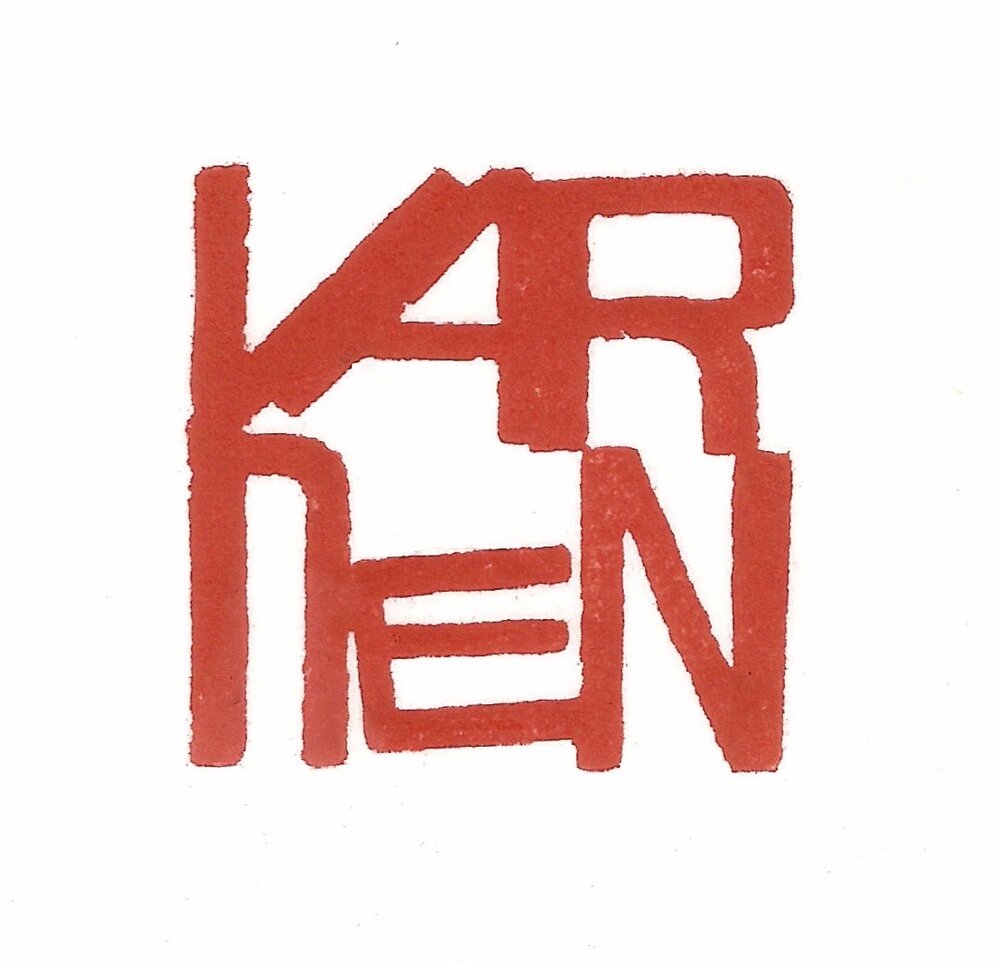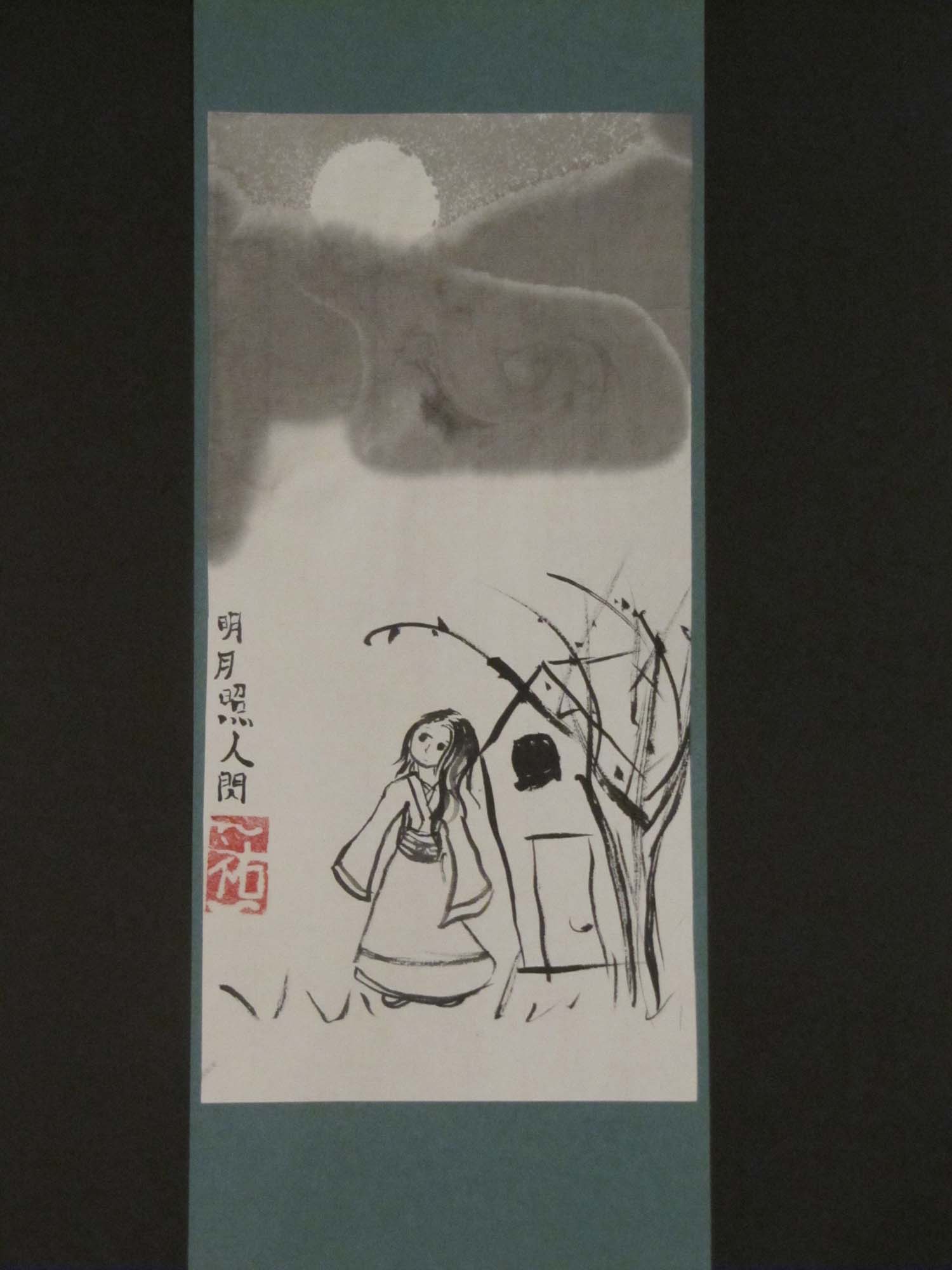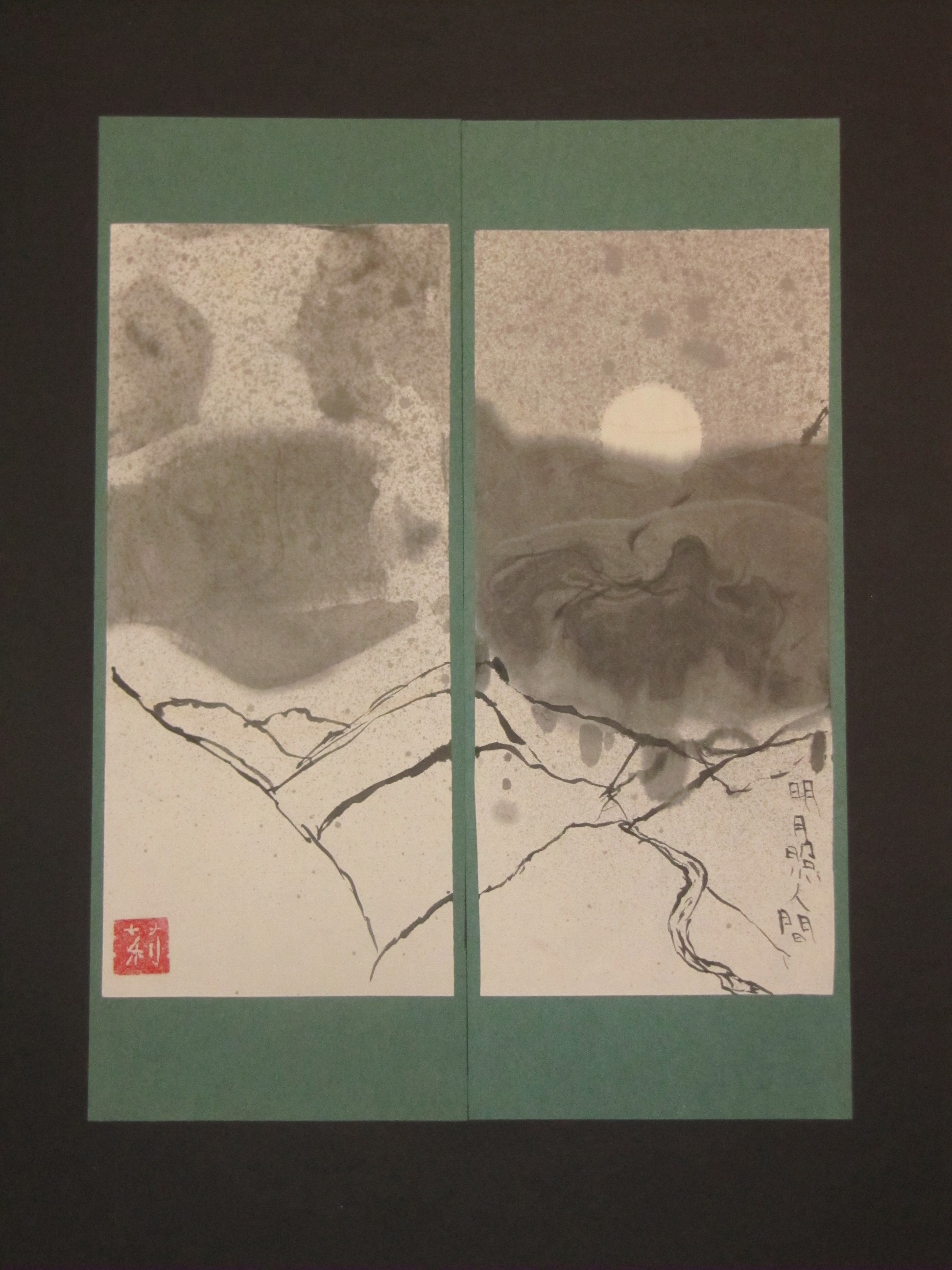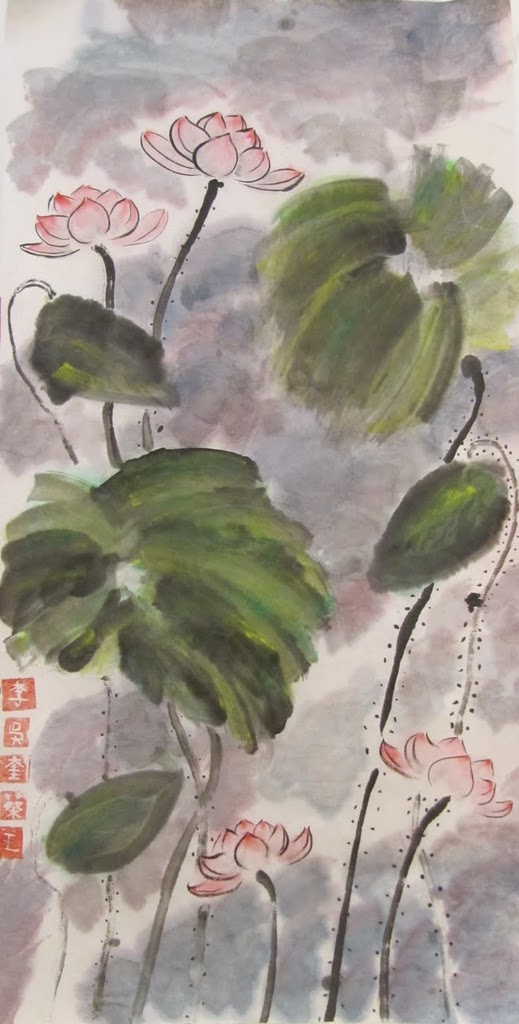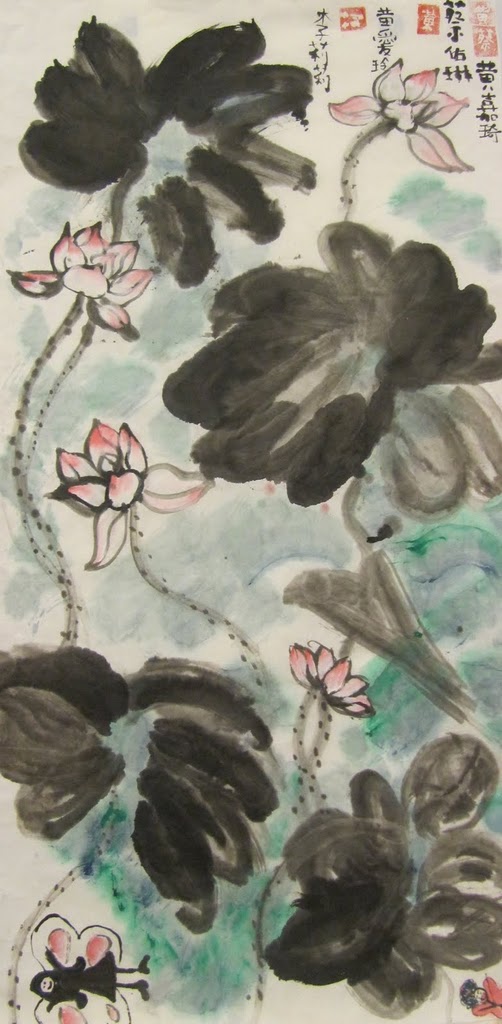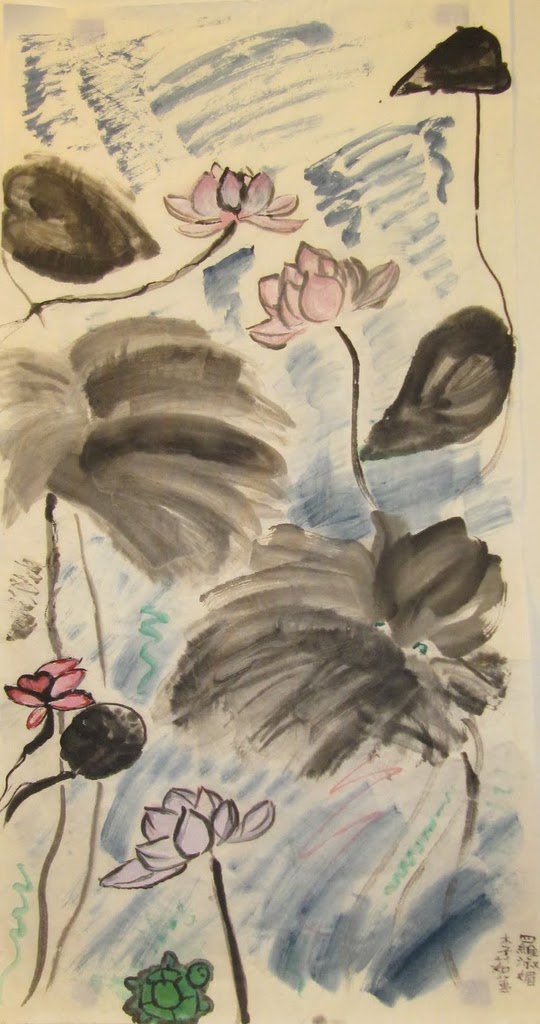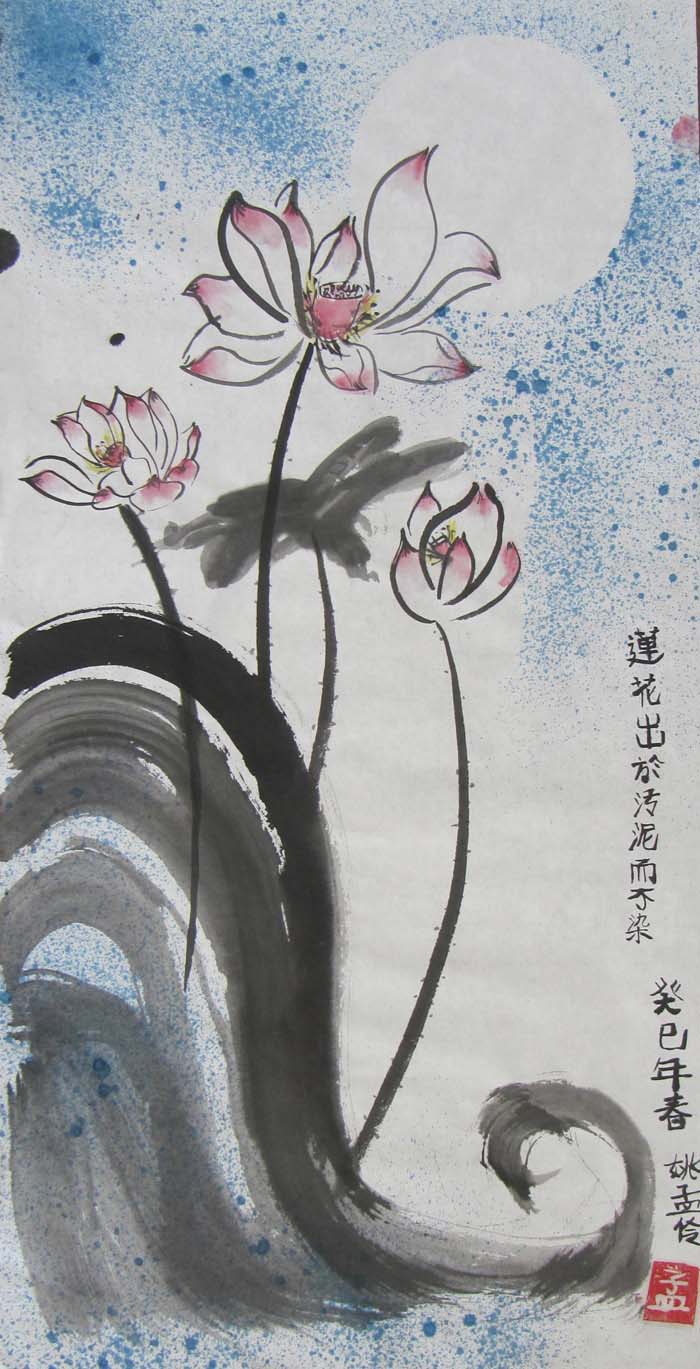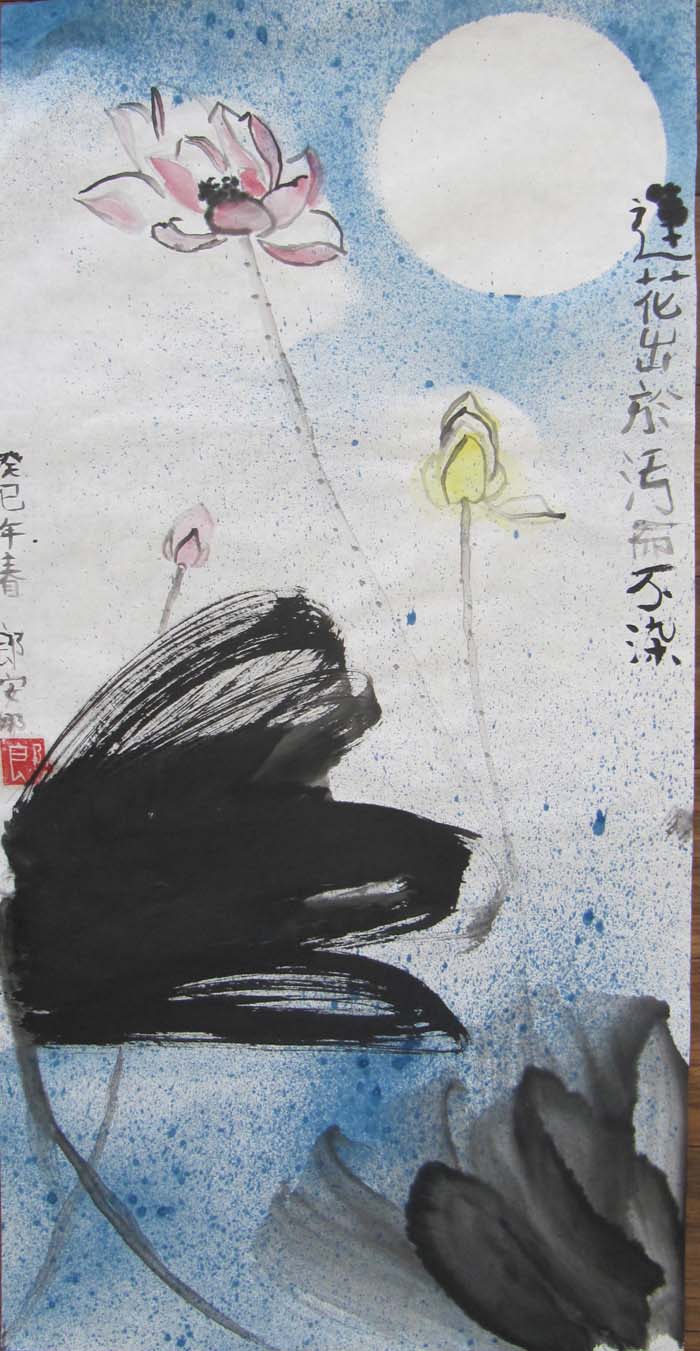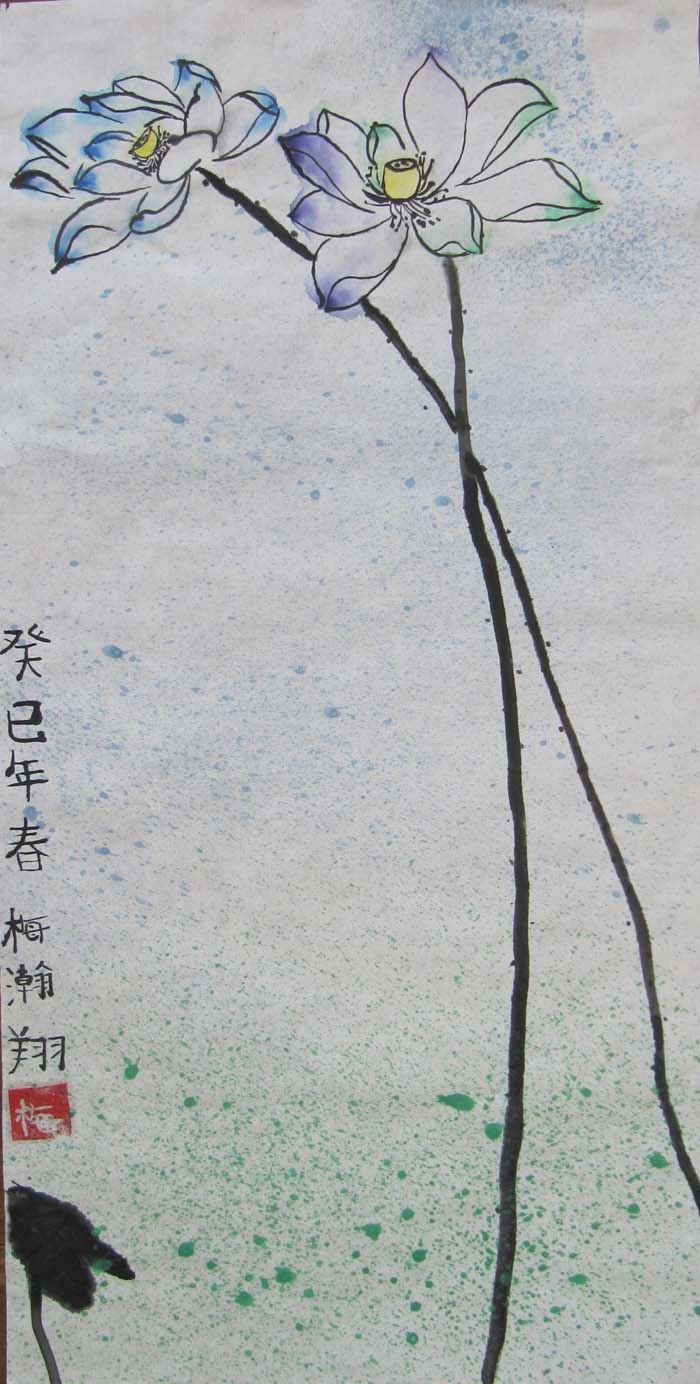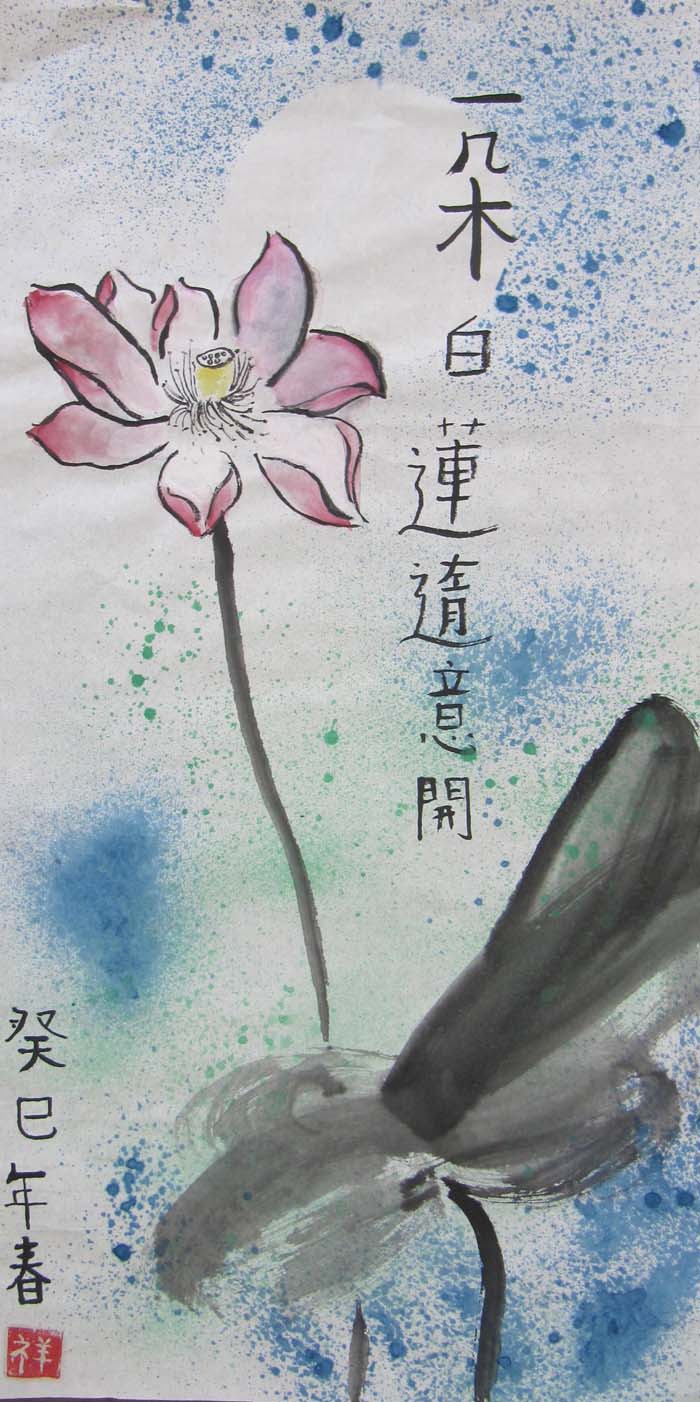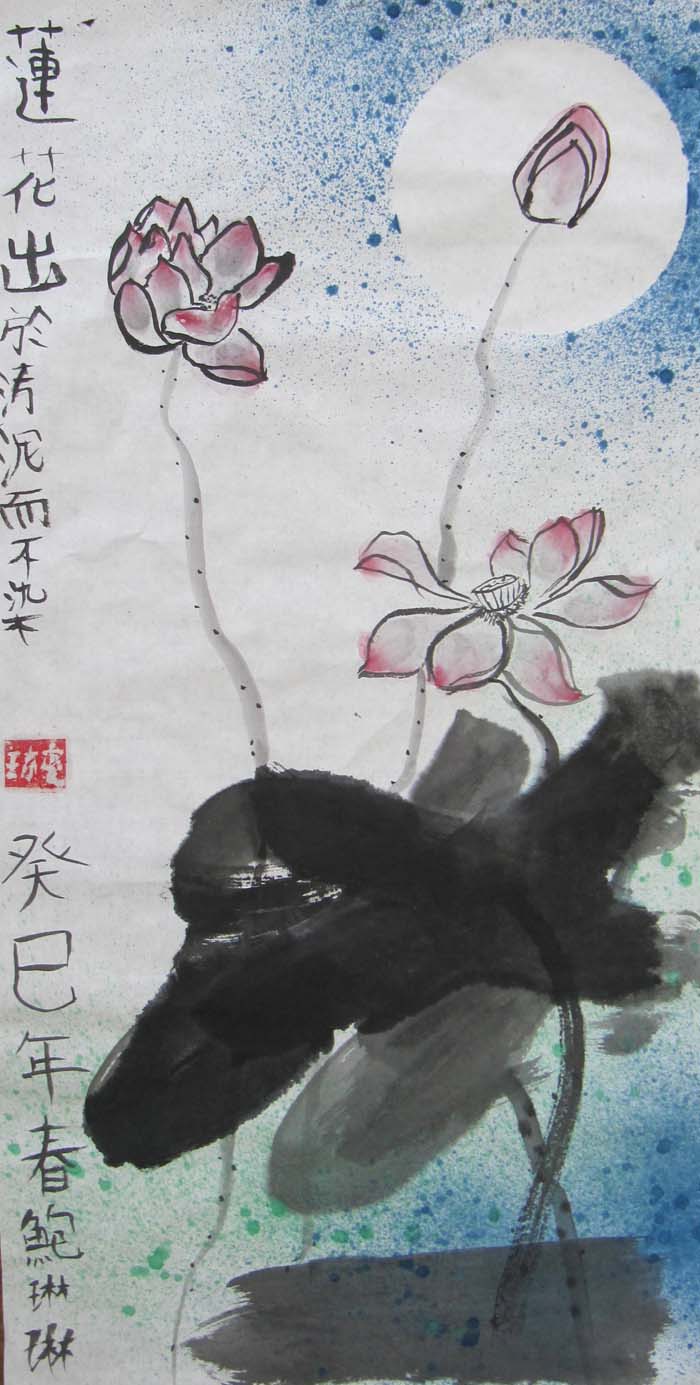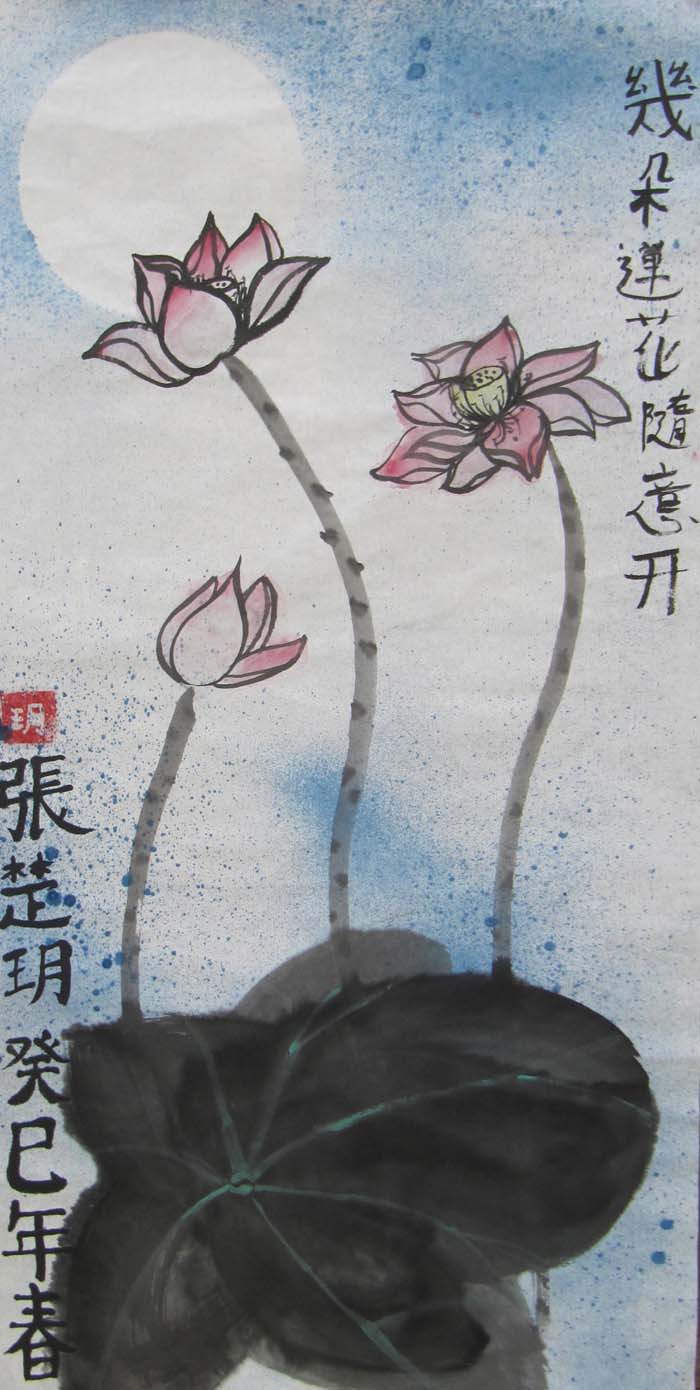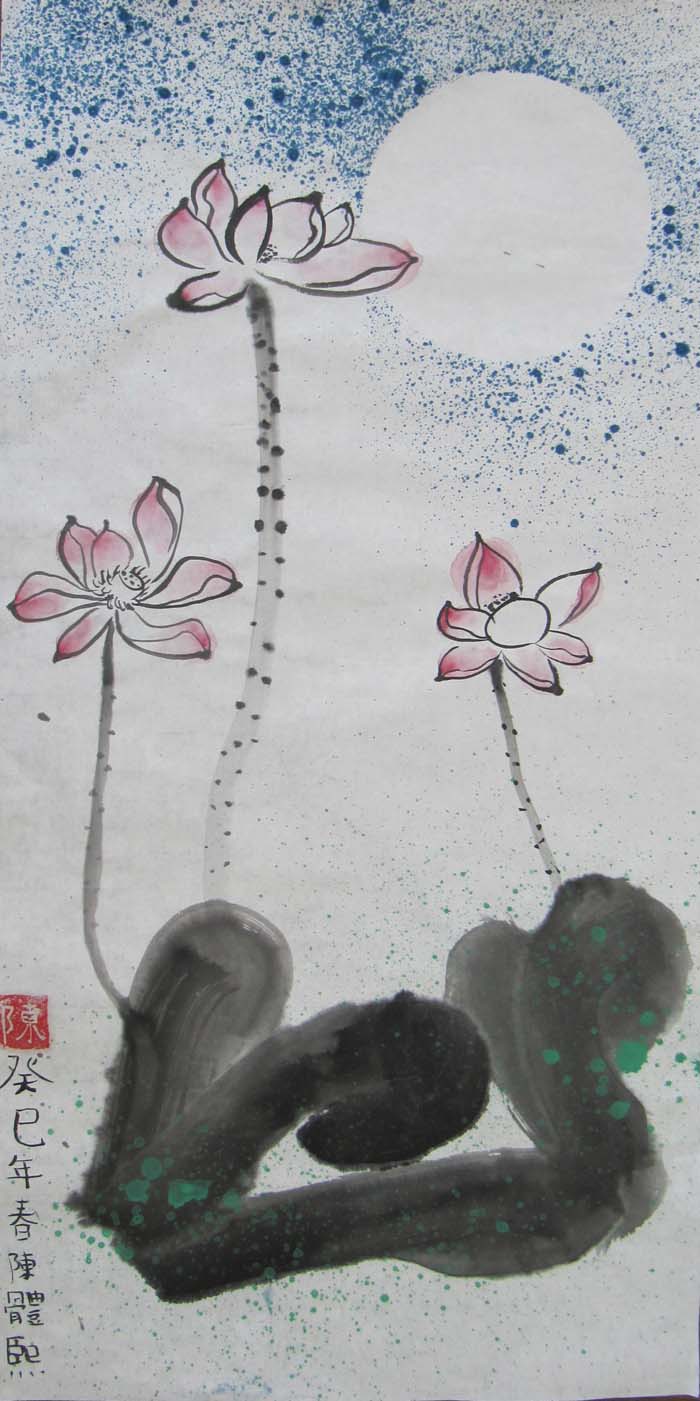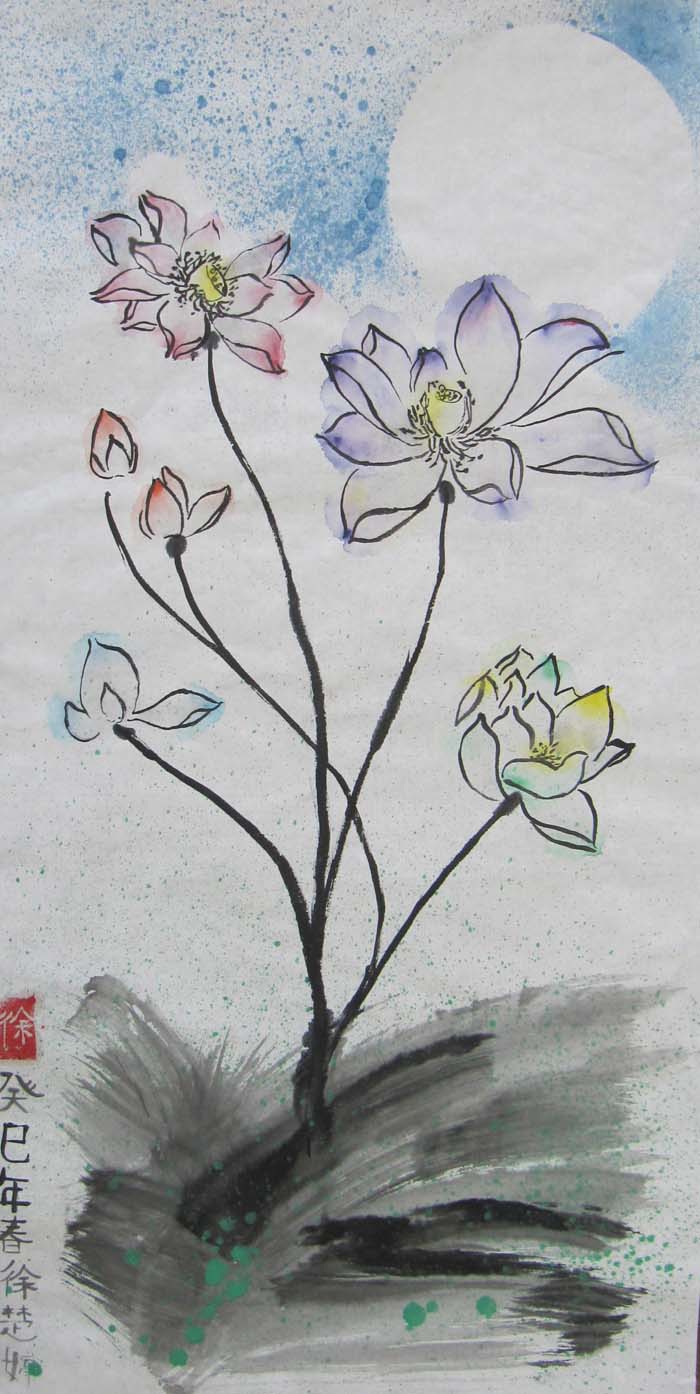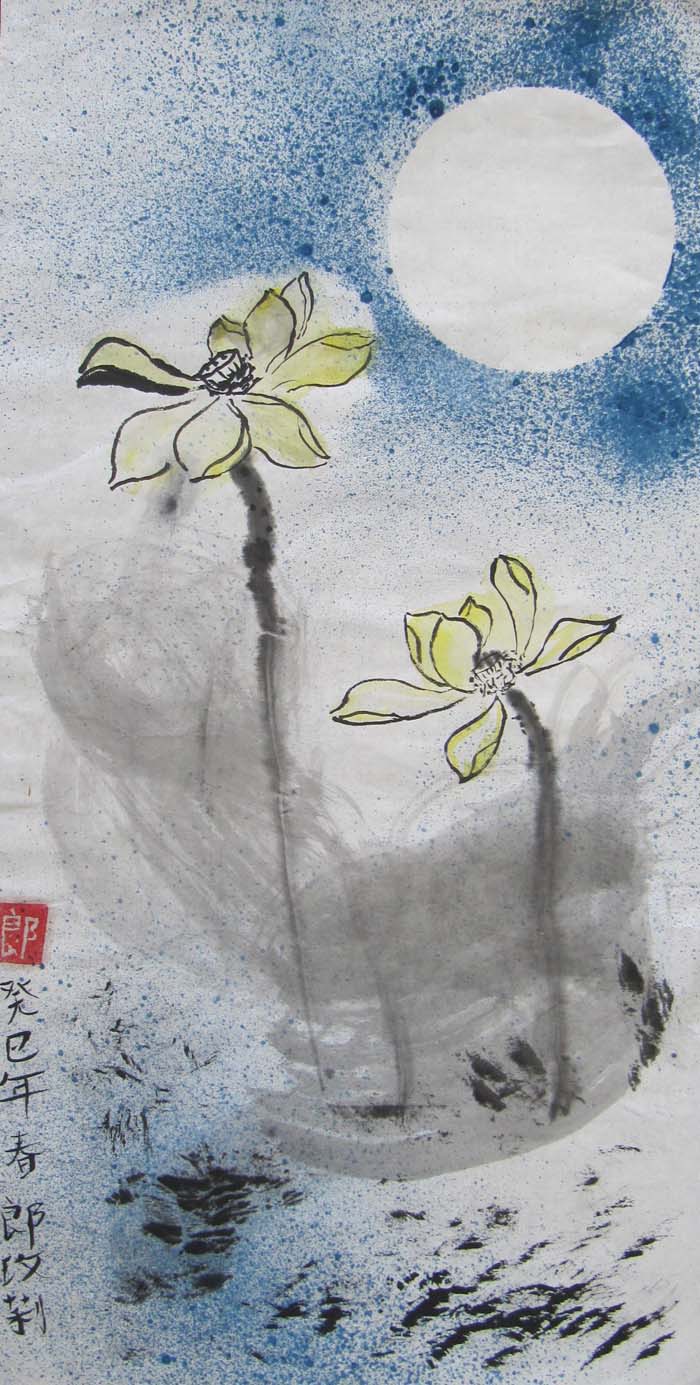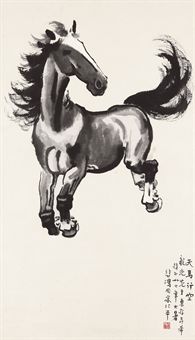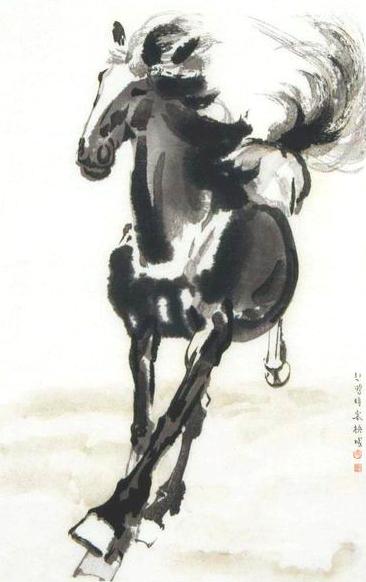Year of the Monkey
The students in our middle school have all learned the story Monkey and the Moon 猴子撈月。 In this two part brush painting class to celebrate the Year of the Monkey, we first learned how to paint the Monkey and the Moon, and in the second part, students are allowed to create freely with two or more monkeys.
The Monkey and the Moon -
Viewing the reflection of the moon on a pool of water from its resting place on the branch of a tree, the monkey thought that the moon has fallen into the water! It tried to save the moon by reaching out to it. When at last it caught the moon, the moon vanished in the ripples of the water. This tale reminds us that what we strive to achieve may in fact be an illusion. The monkey looked up into the sky and -- there! There it was! The monkey saw the moon shining brightly against the dark night’s sky.
What are we attached to? Being perfect? Material possessions? Looking good? These are all illusions. The real moon is in the sky, always the same, not the many illusions that we see. So, we have to let go of these illusions and get to the truth.












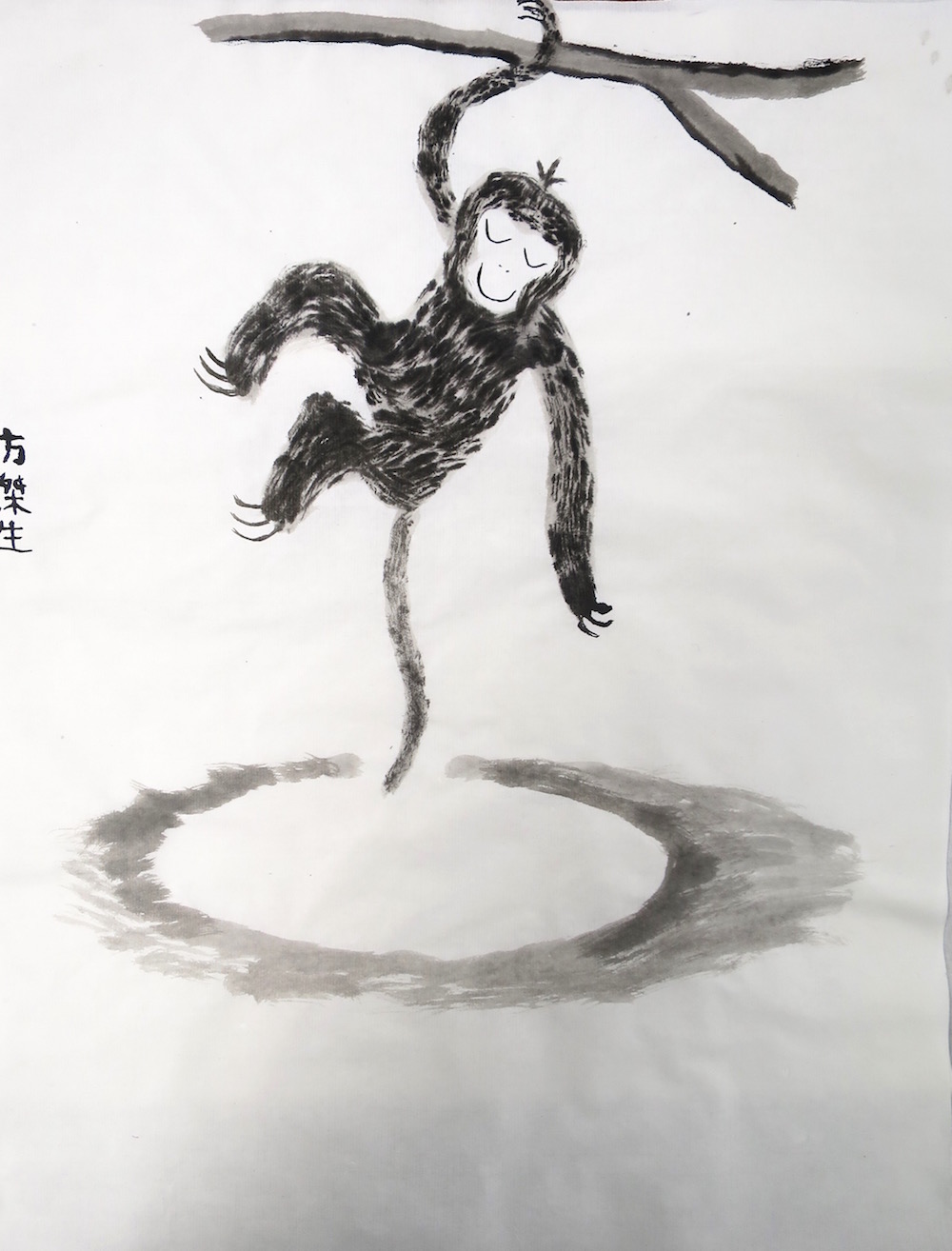




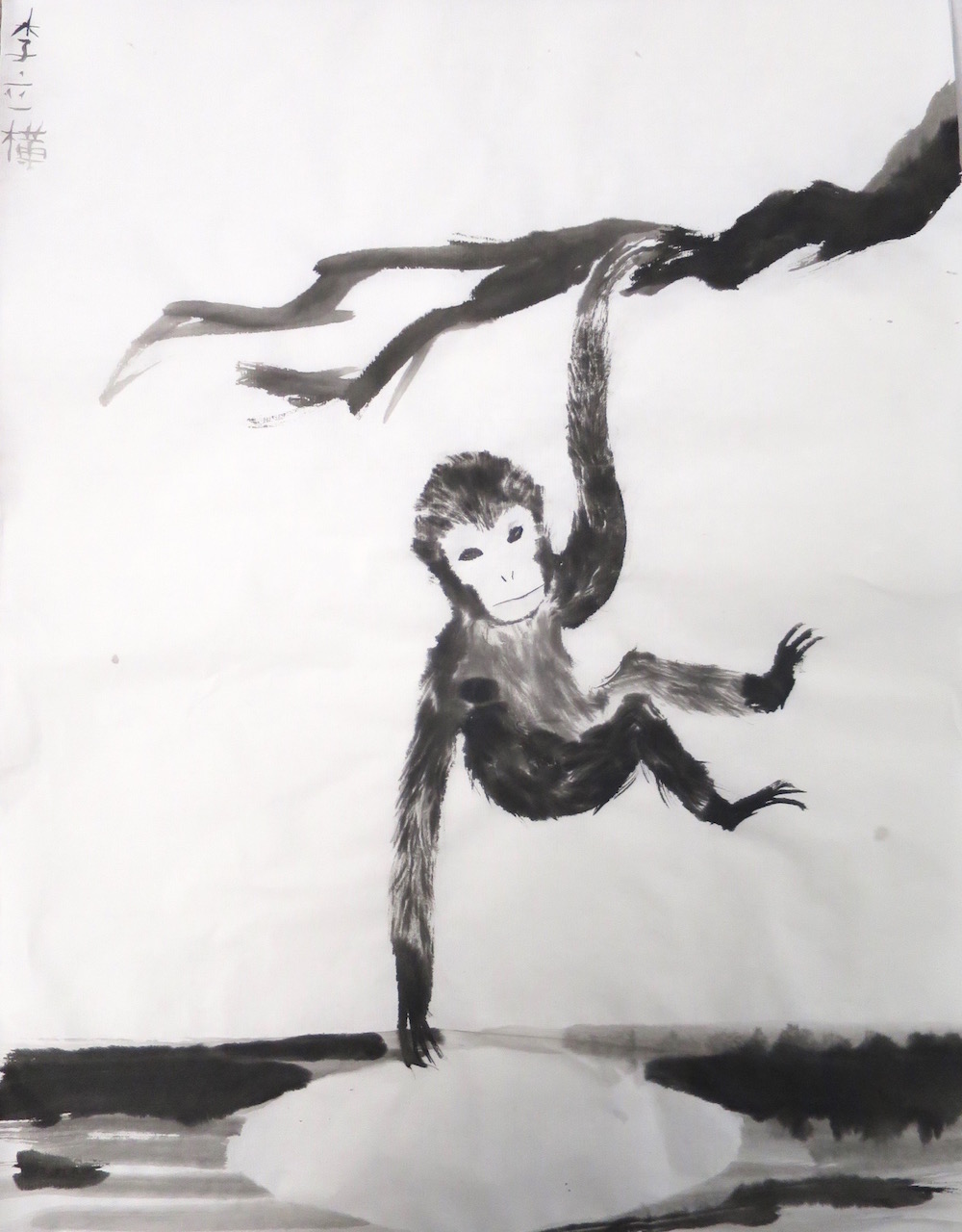






Some other cute monkeys doing their monkey business:
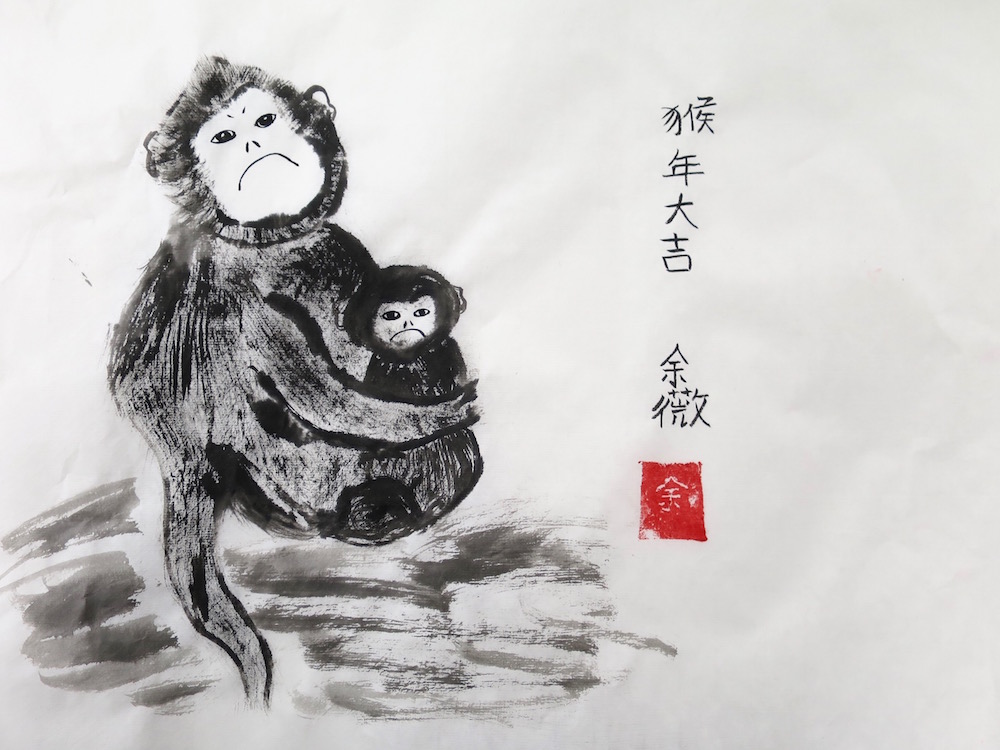
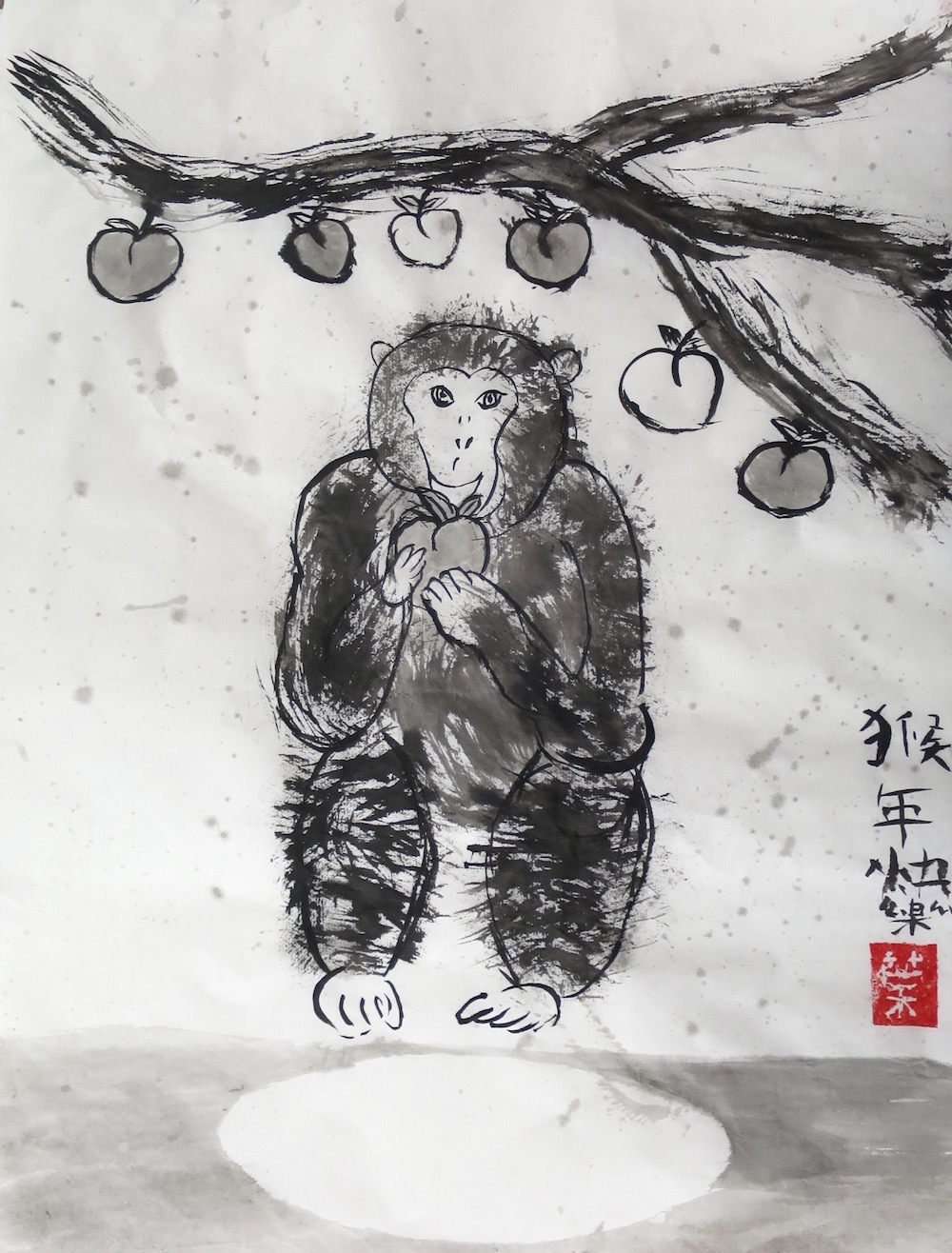

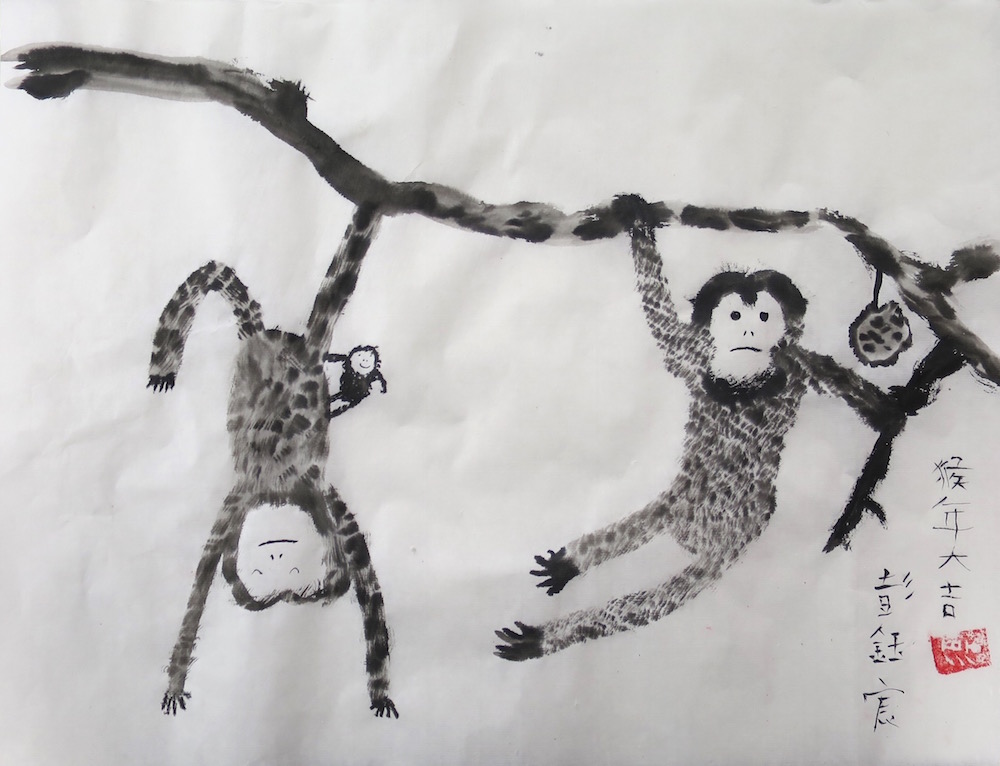





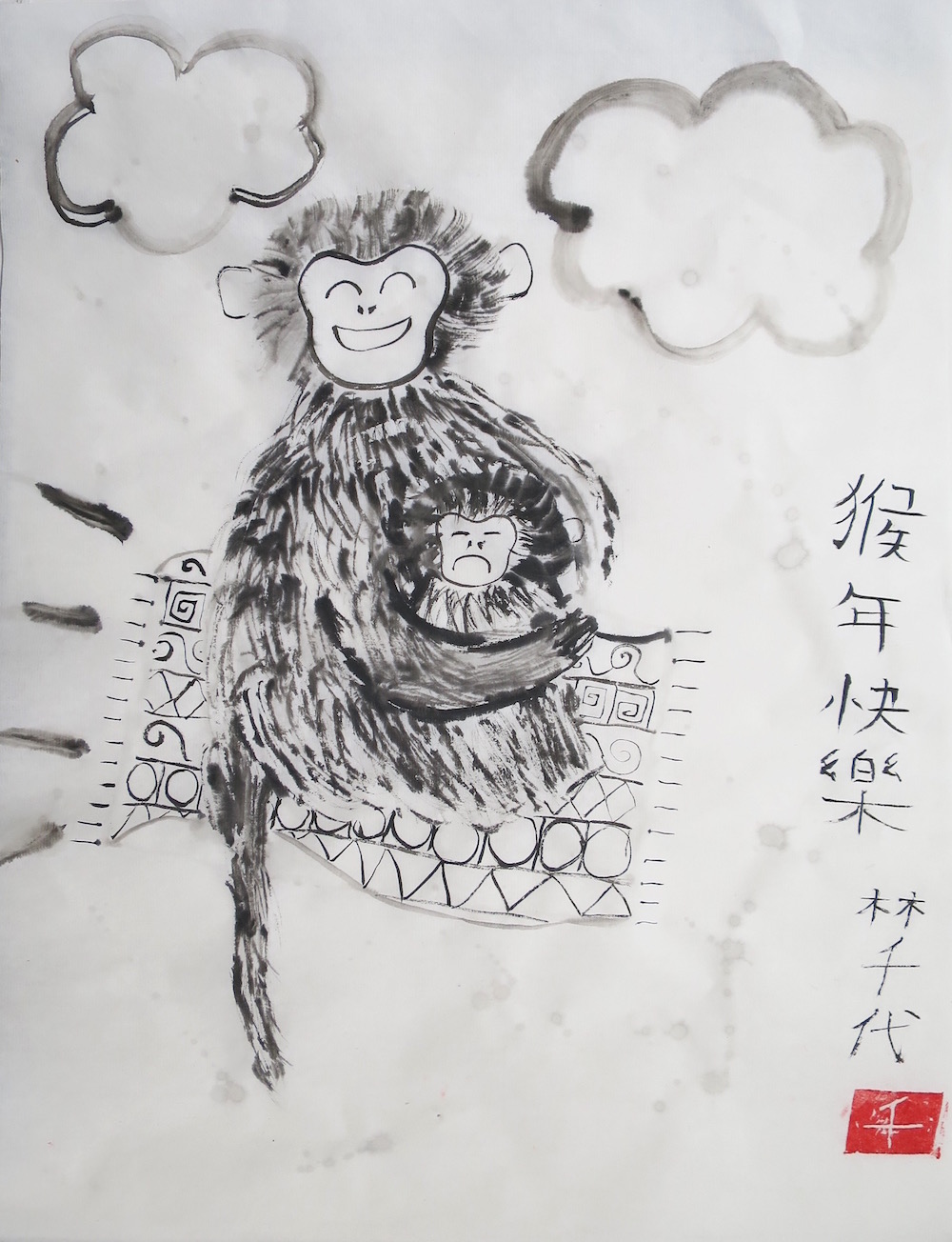

Year of the Ram
Ok, I did cheat a little by giving my students some simple templates of ram/sheep body shapes, otherwise, they would have too much to worry about to have to complete these paintings in a very short time. I did allow them ample of freedom to create their composition and the background. The parts the students enjoy the most are probably painting in the fur with a dry brush, and adding colors. Here are painting done by my 2 8th grade classes:










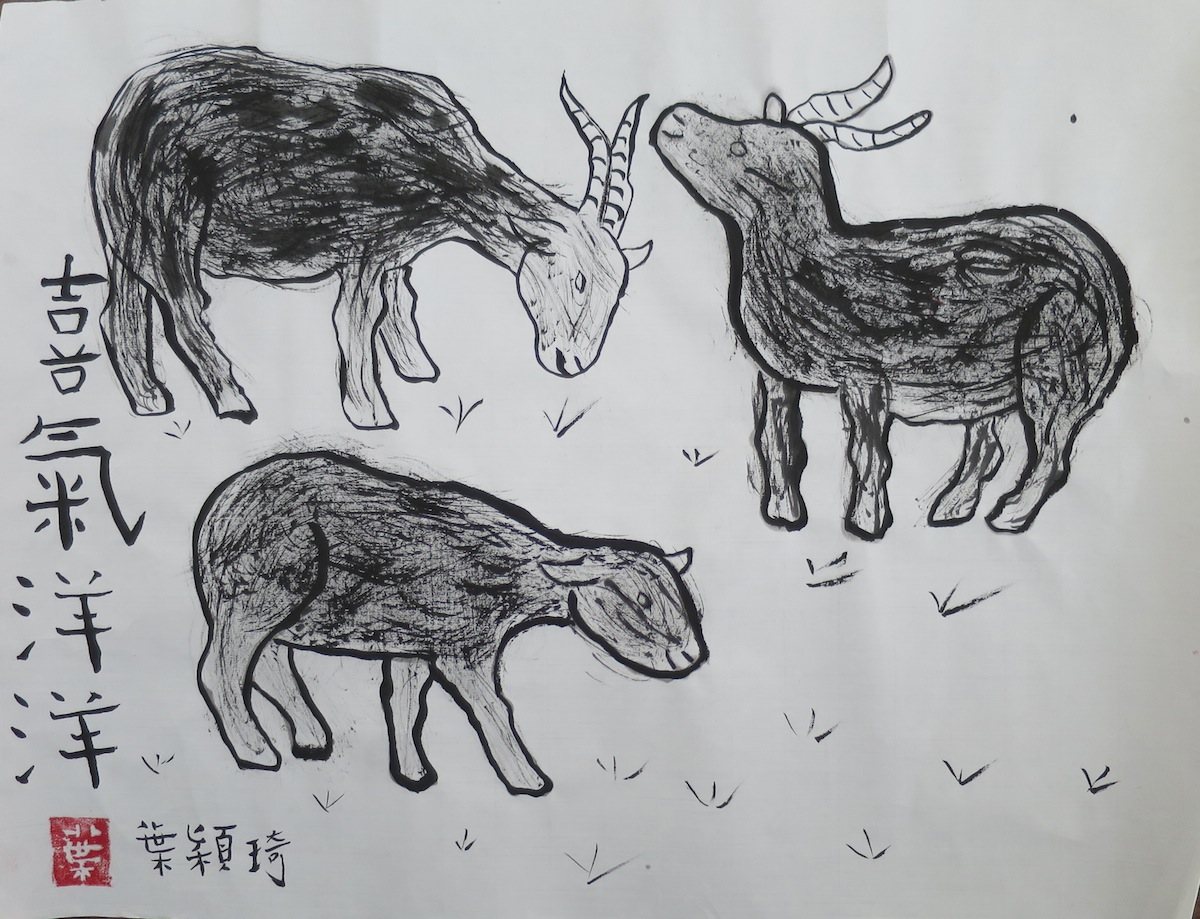


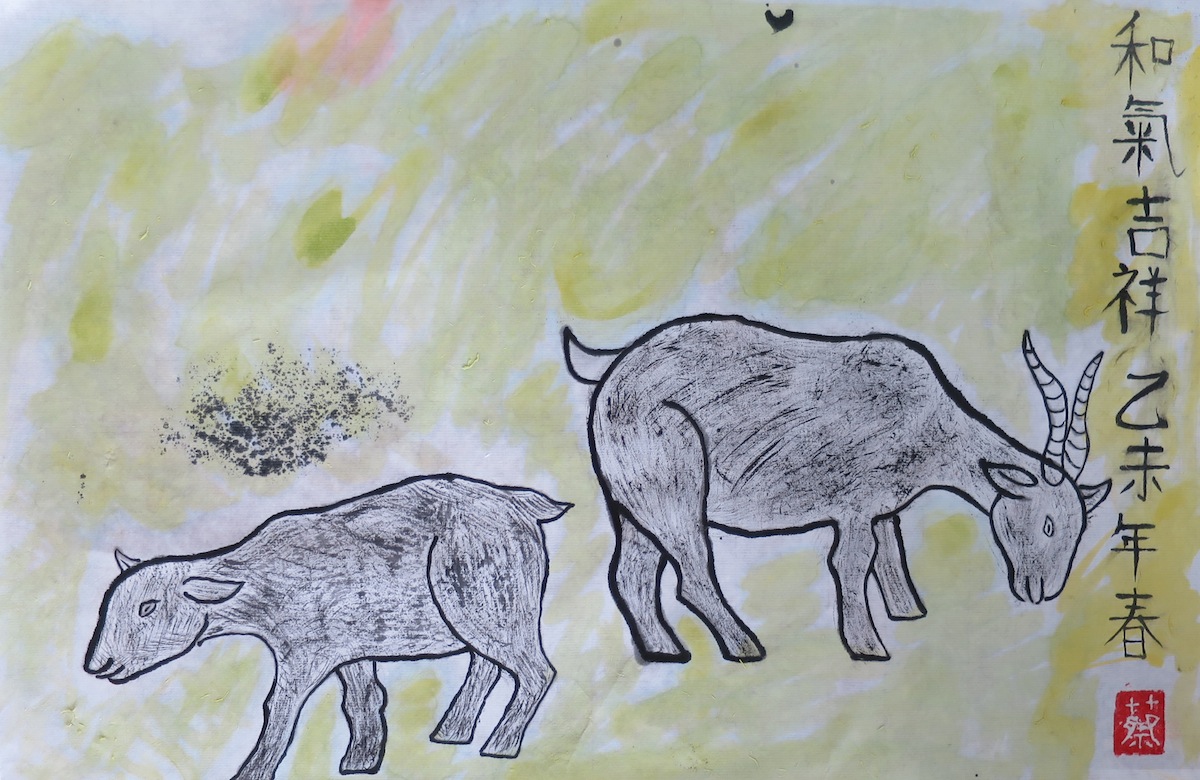
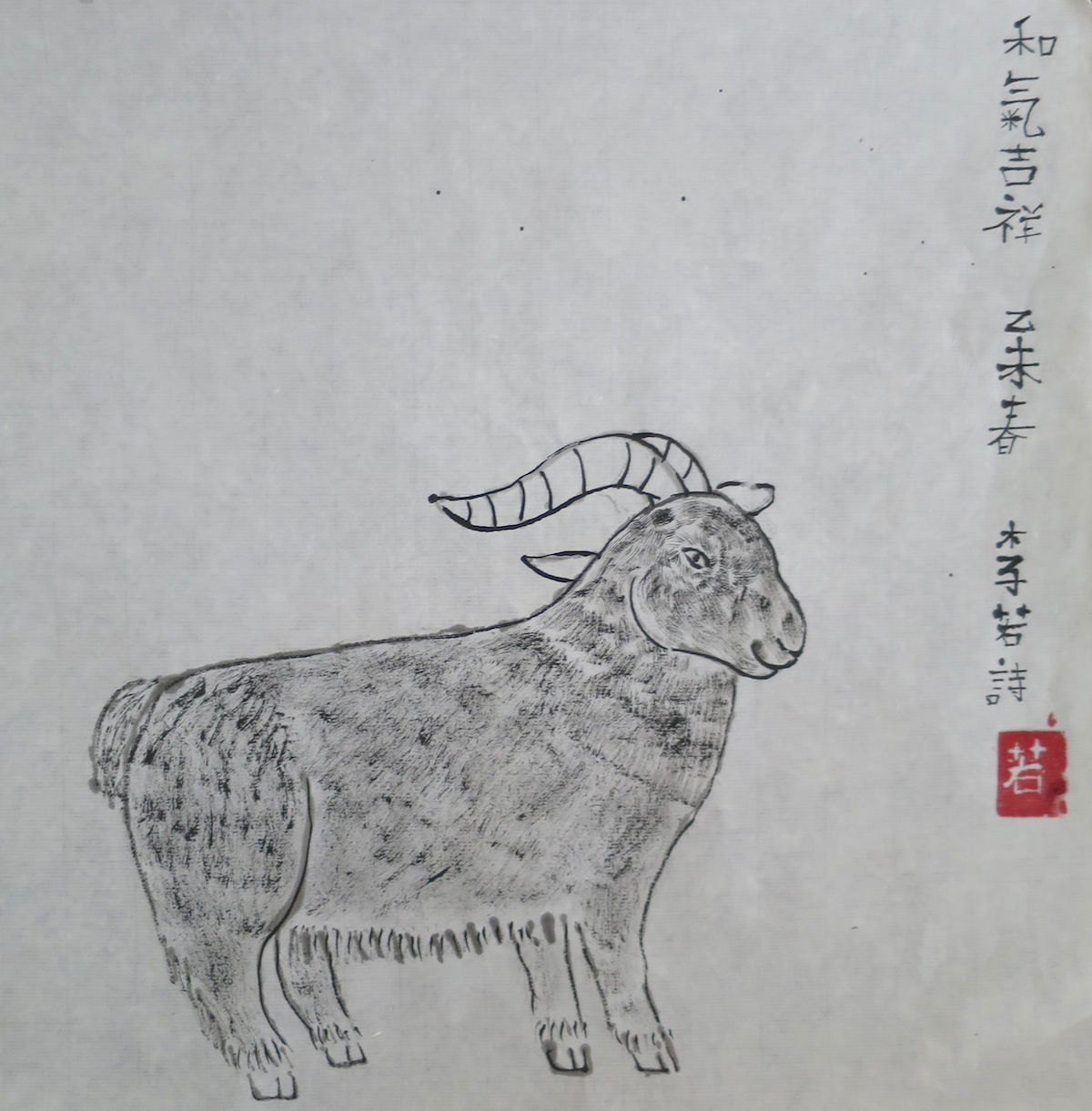


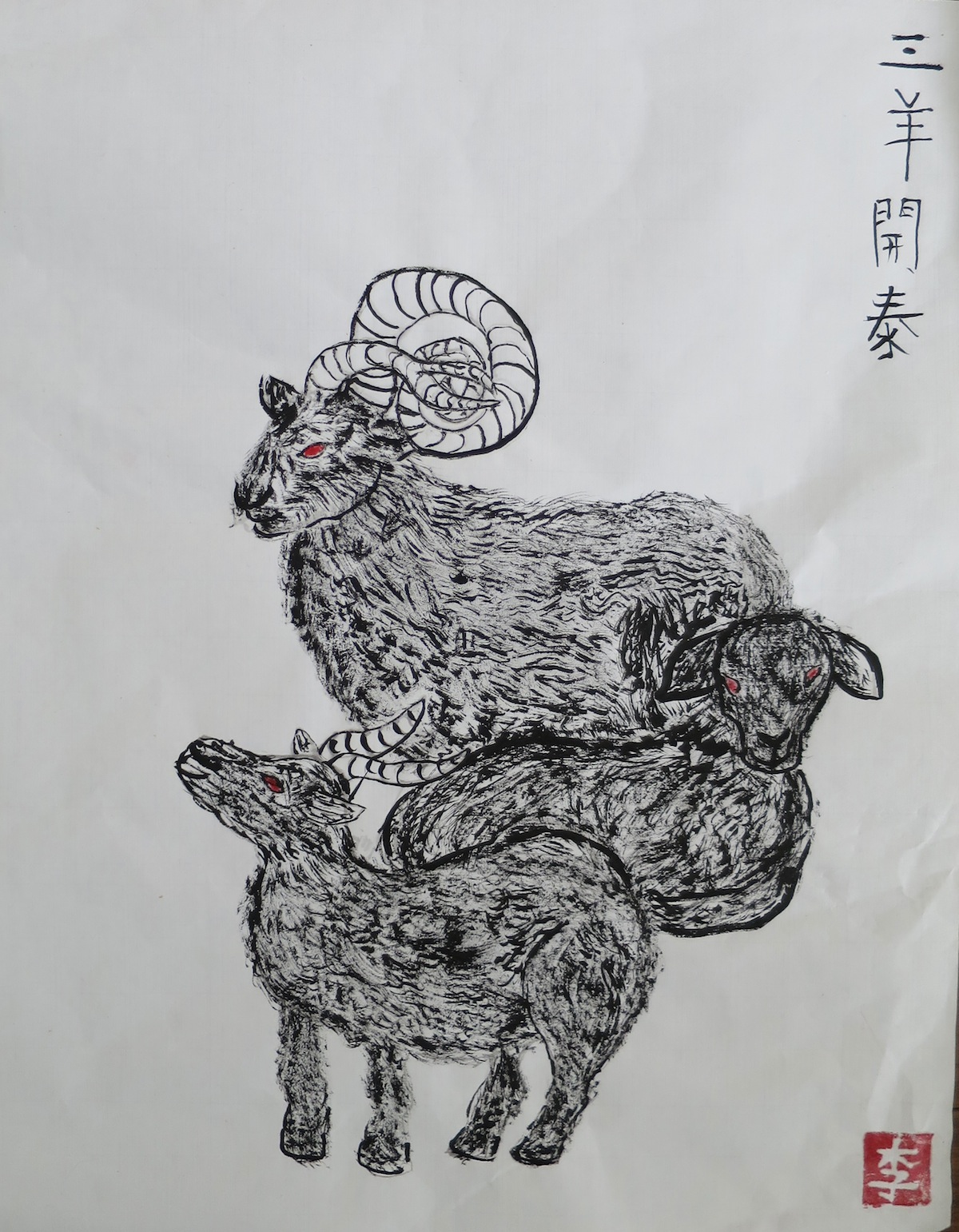




Bamboo of the Four Seasons
The 8th grade students painted bamboo and learned the meanings behind this venerable plant. They used the traditional technique which emphasizes the strength of the stroke and the lightness and darkness of the ink to paint the body of the bamboo and the leaves, then they went wild with the splash ink technique in creating the background and the mood for the season of their choosing.
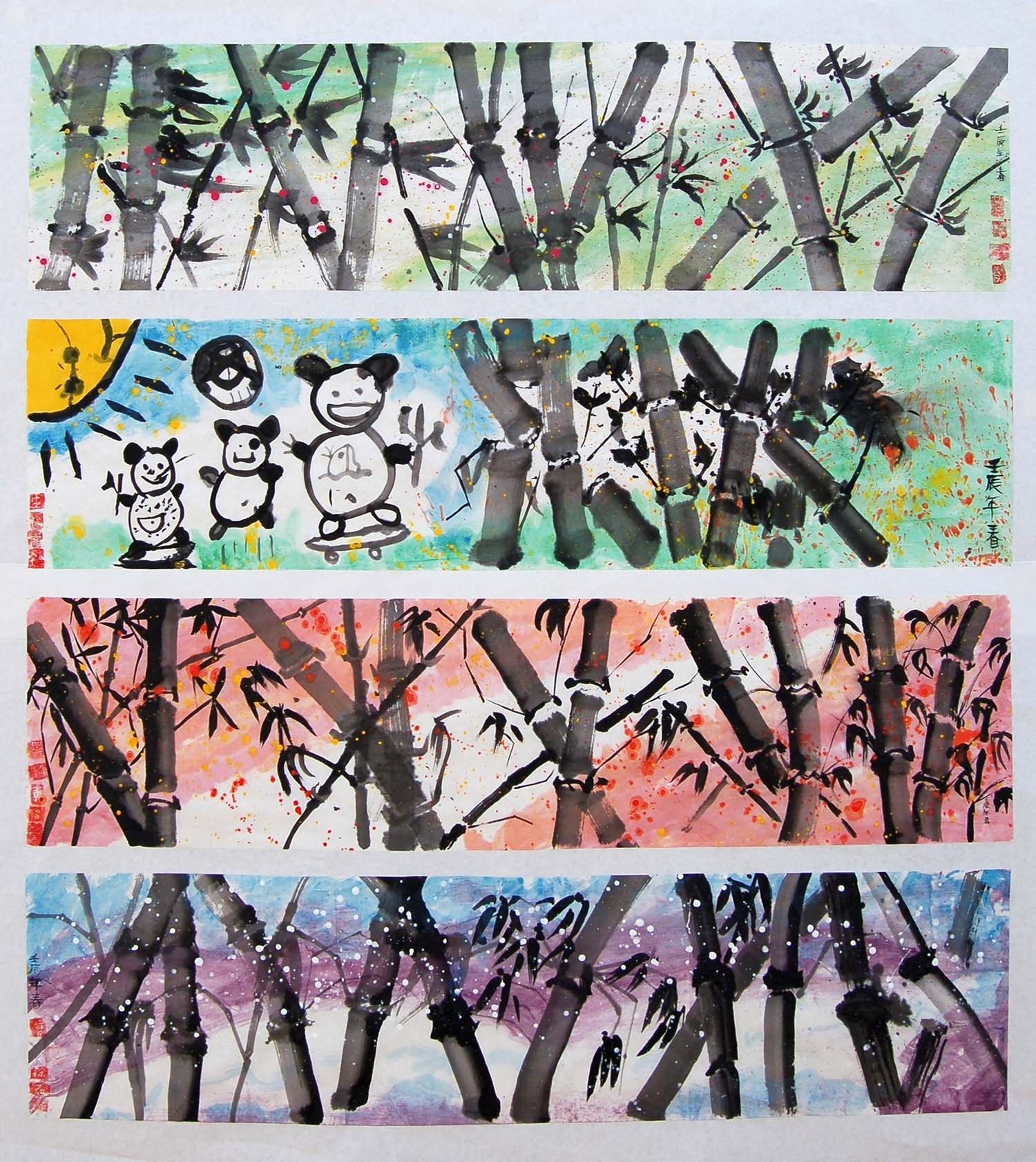

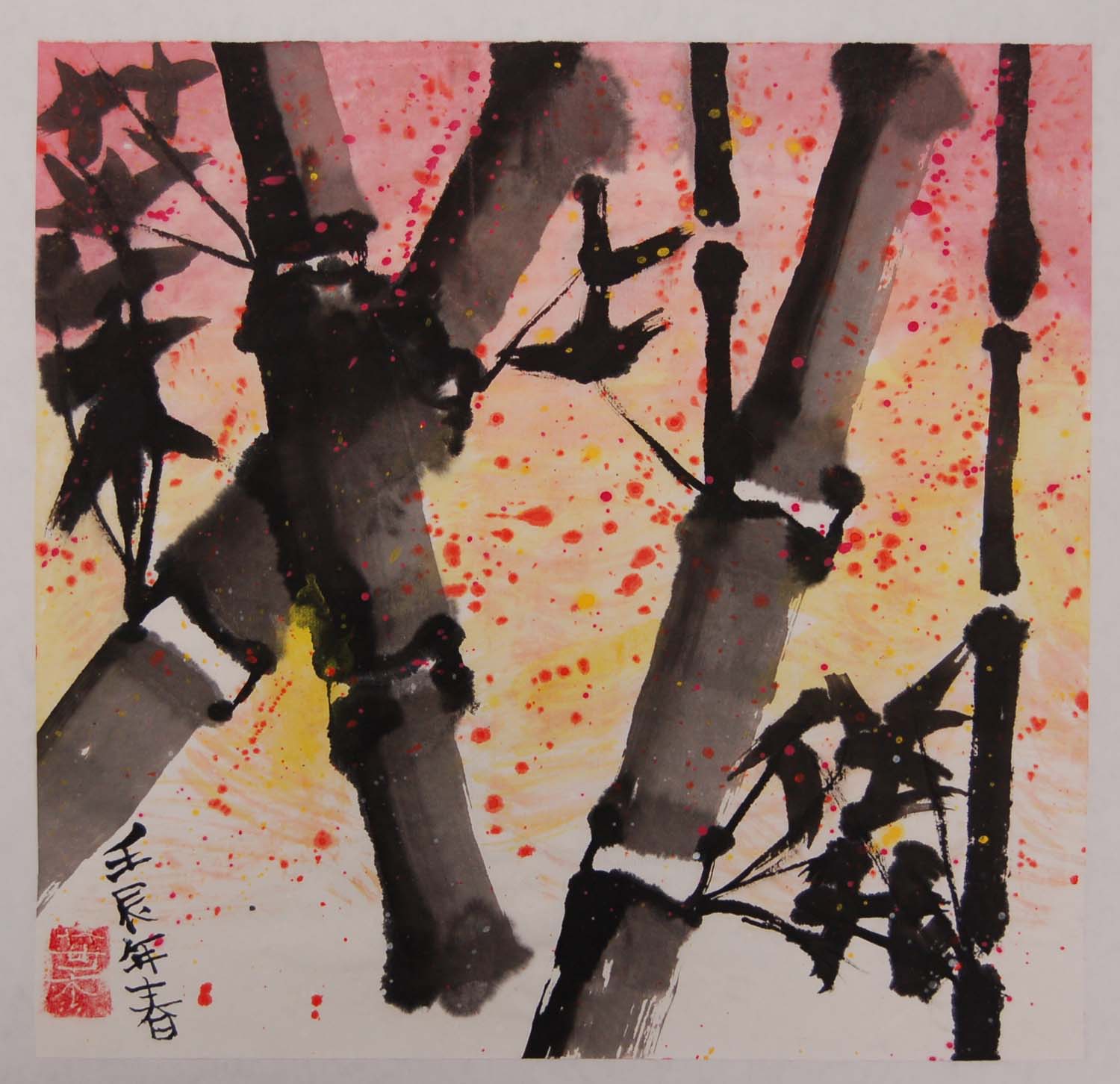

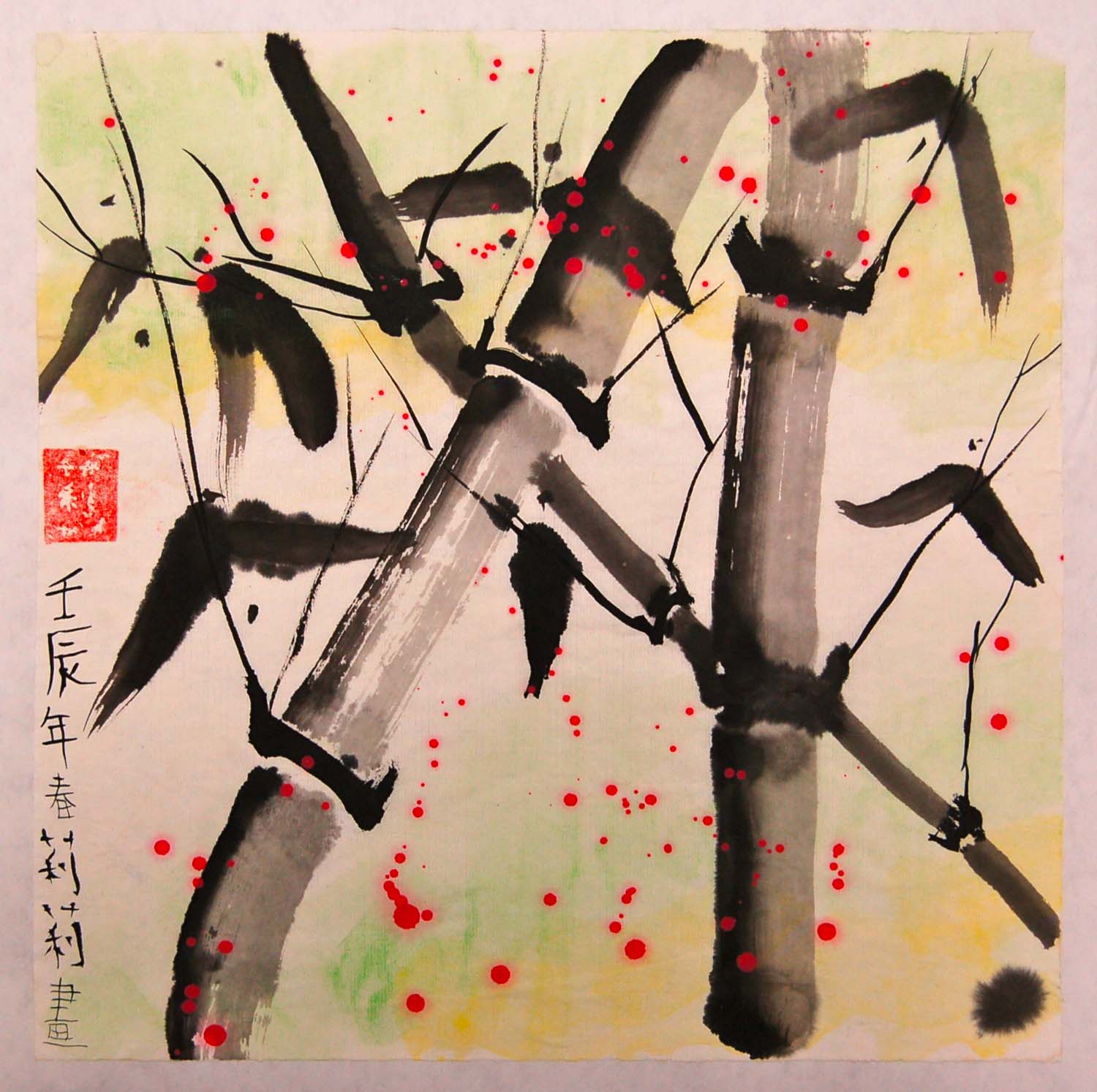
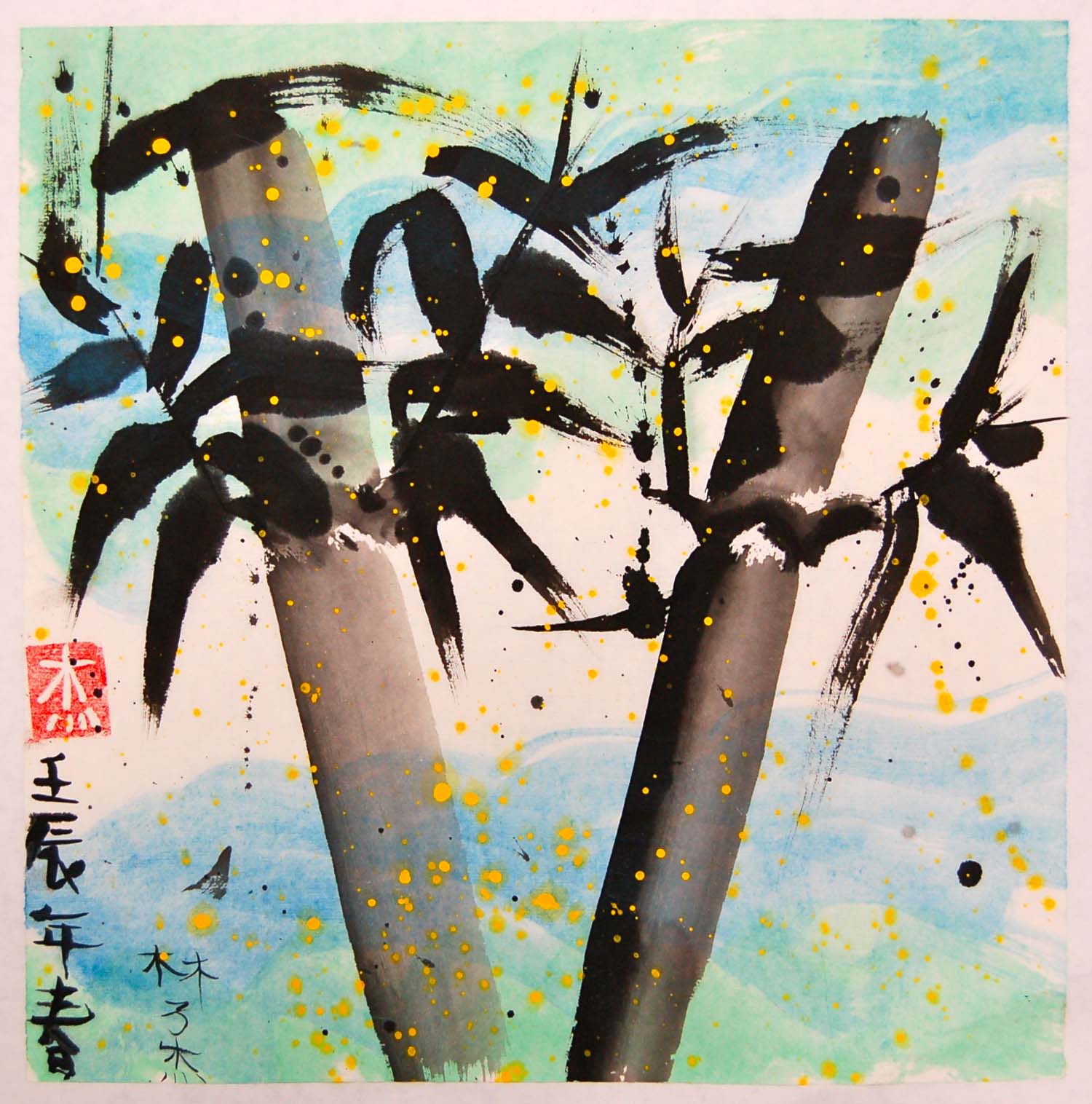
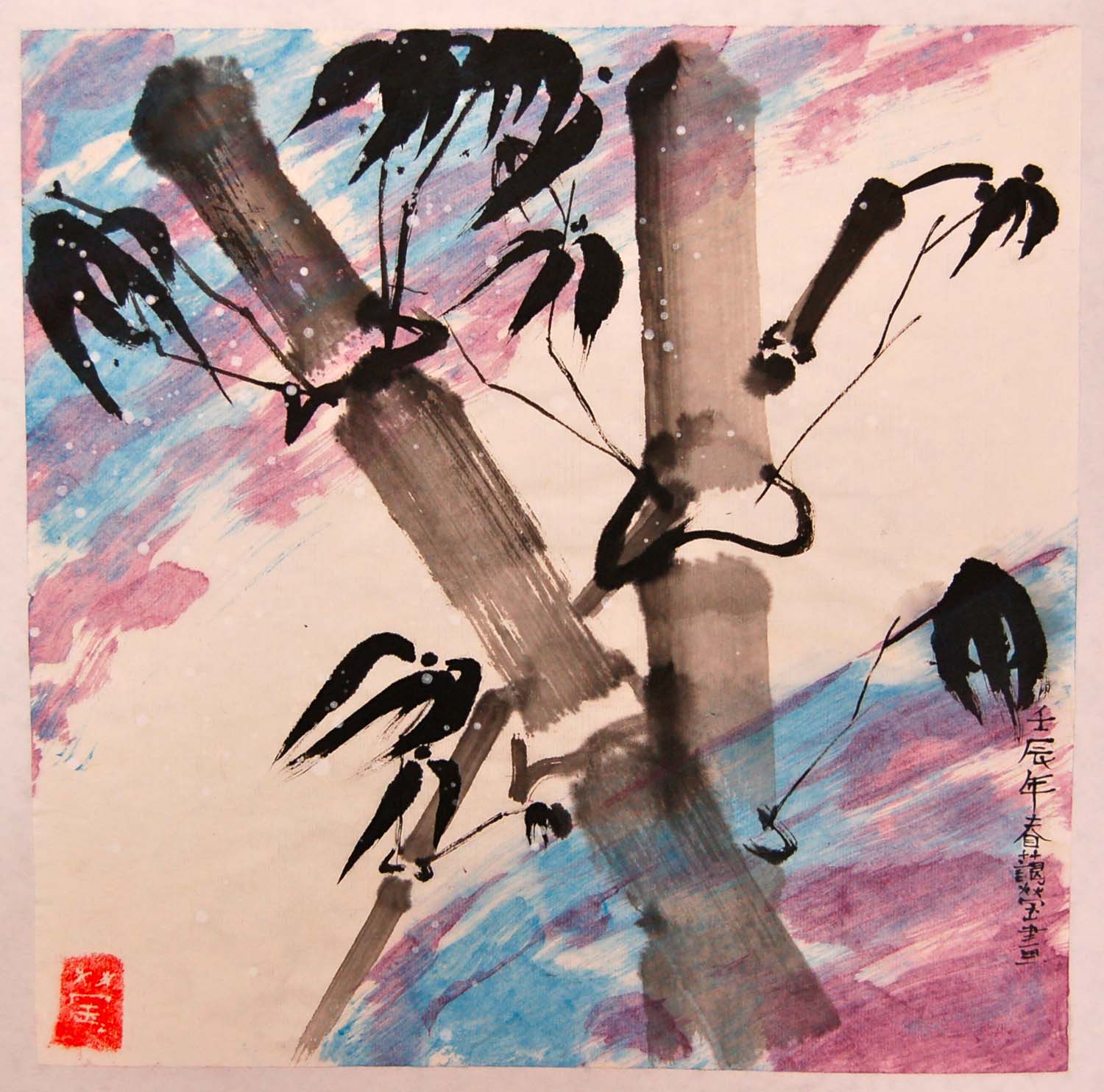

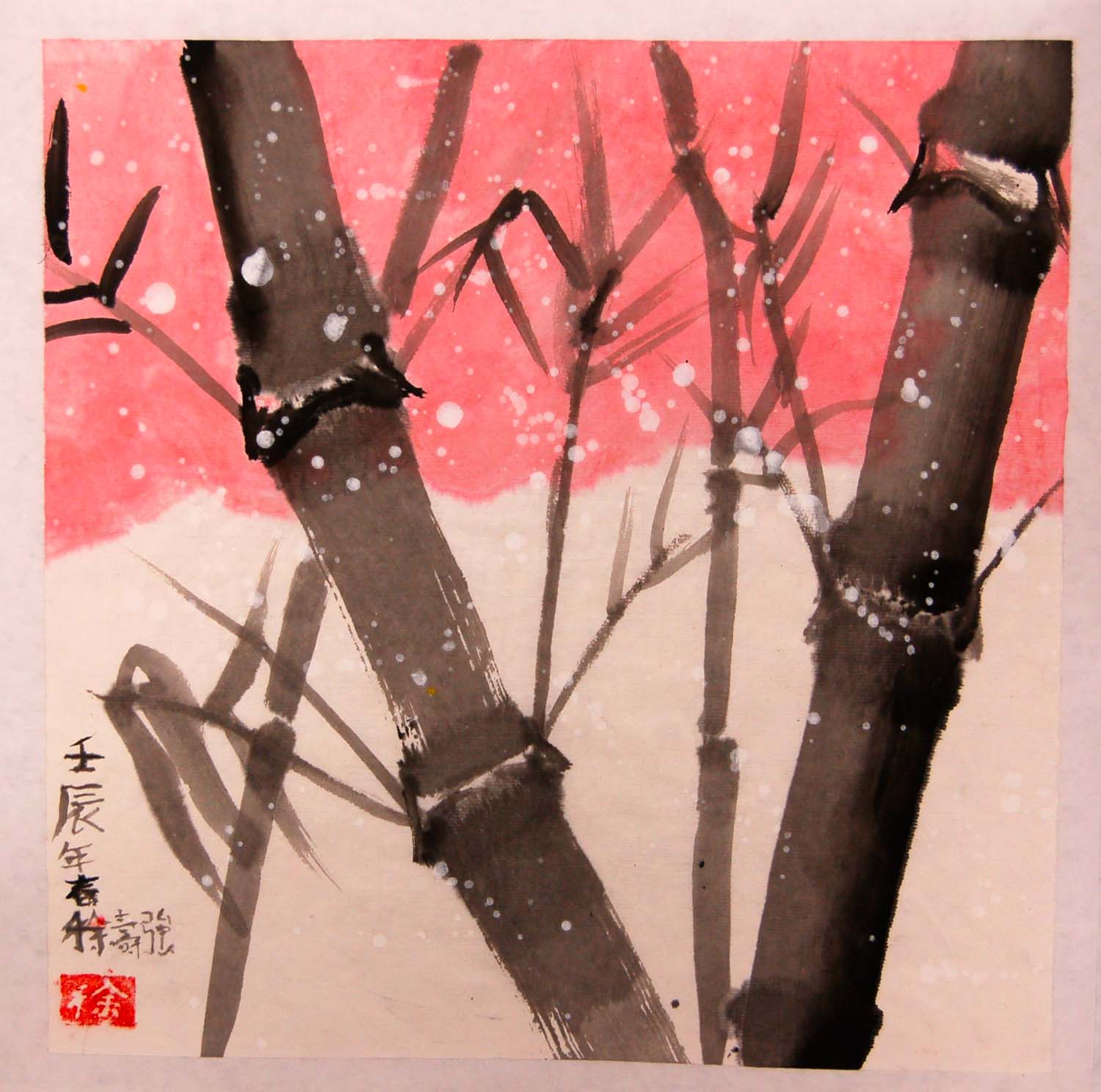
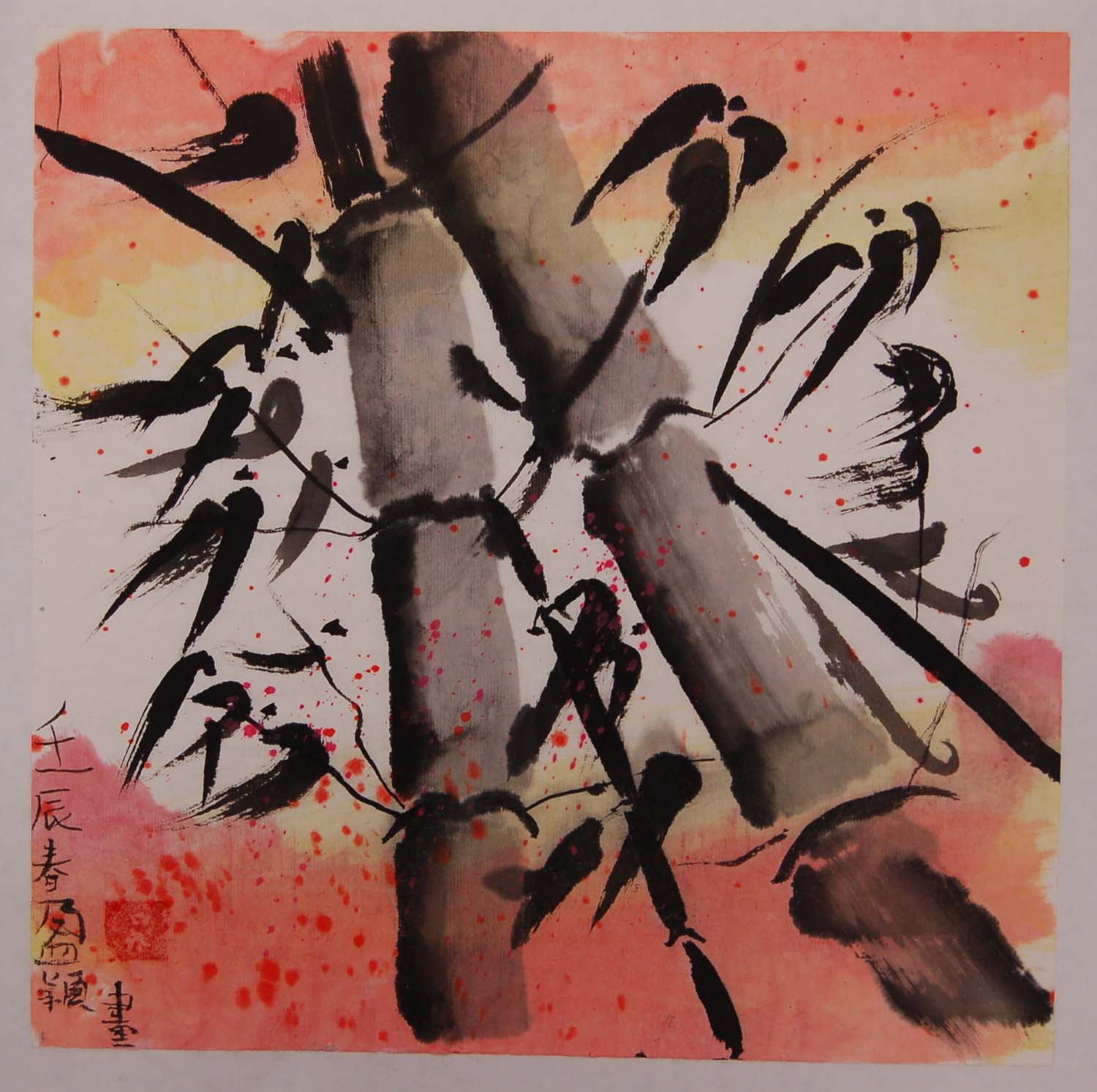
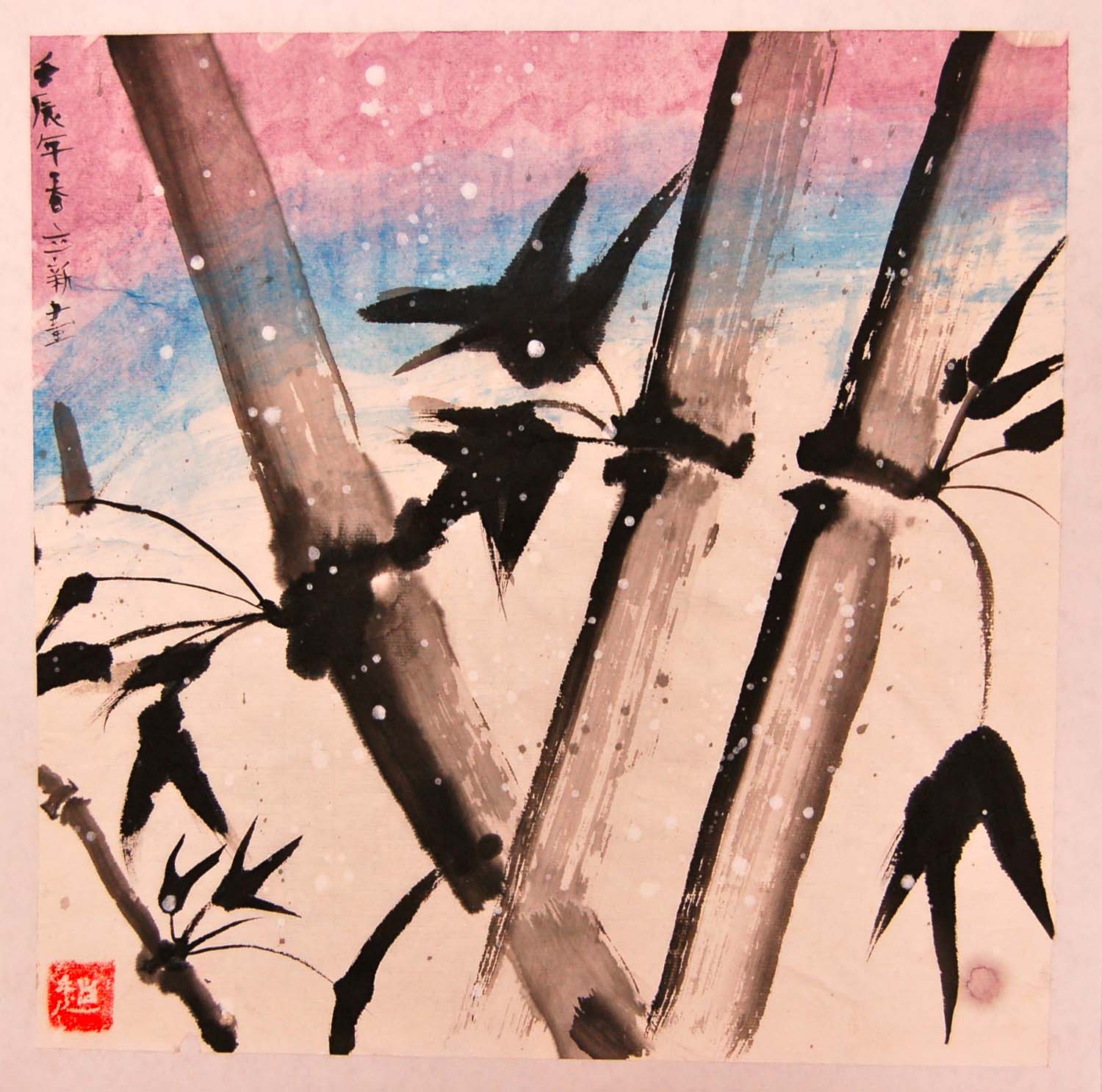

Winter Bamboo and Haiku
The 4th graders created winter bamboo paintings and wrote haiku poems to go with them. Students learned to use the flat brush with light and dark ink to create 3 dimensionality to the bamboo trunk, then used a smaller brush for the thinner branches and leaves, and gave the background a light blue wash. When they finished this step and also finished writing their haiku, they got to go wild splashing white snow on their paintings! This particular painting below was selected to be in the Santa Clara County Office of Education's permanent art collection.
More bamboo paintings by my 4th graders:



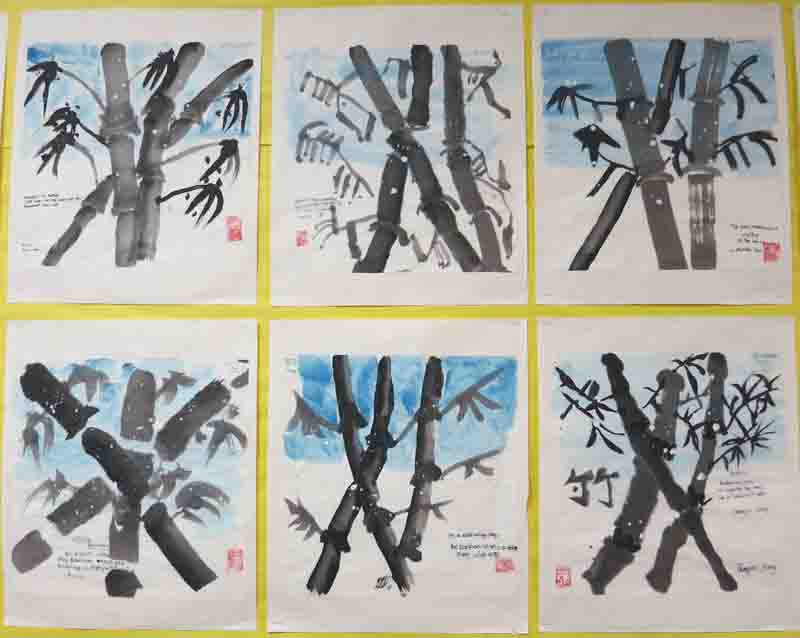
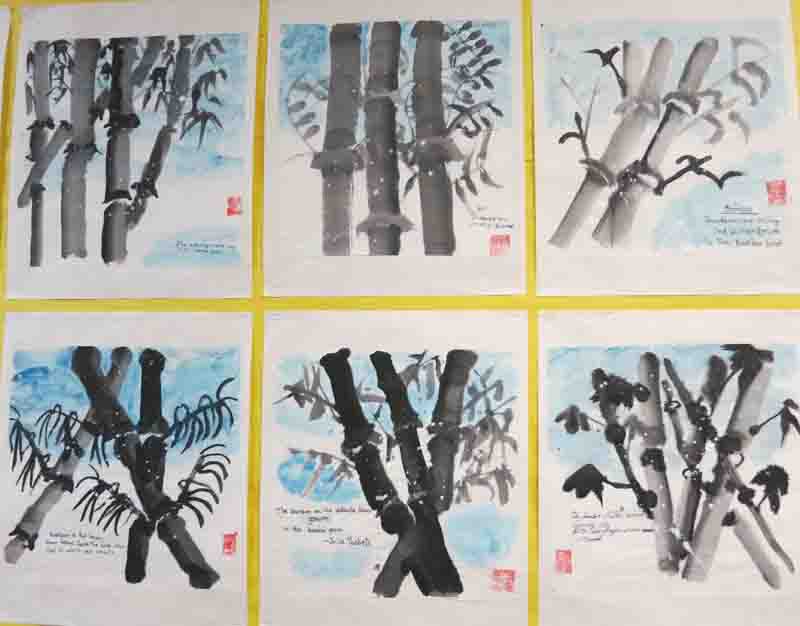
Mid-Autumn Festival
We had fun with this marbling effect created with a mixture of strong black Chinese ink, diluted ink, and diluted washing detergent. The students created the clouds first, then put a bottle cap on the paper and sprayed diluted ink in the surrounding area to create the moon. Lastly, they used a fine brush to paint in the details and wrote a part of a Chinese poem by the poet Su Shi. The students carved their own seals using a small piece of styrofoam, which are then printed on their paintings using real Chinese seal ink.
Year of the Tiger

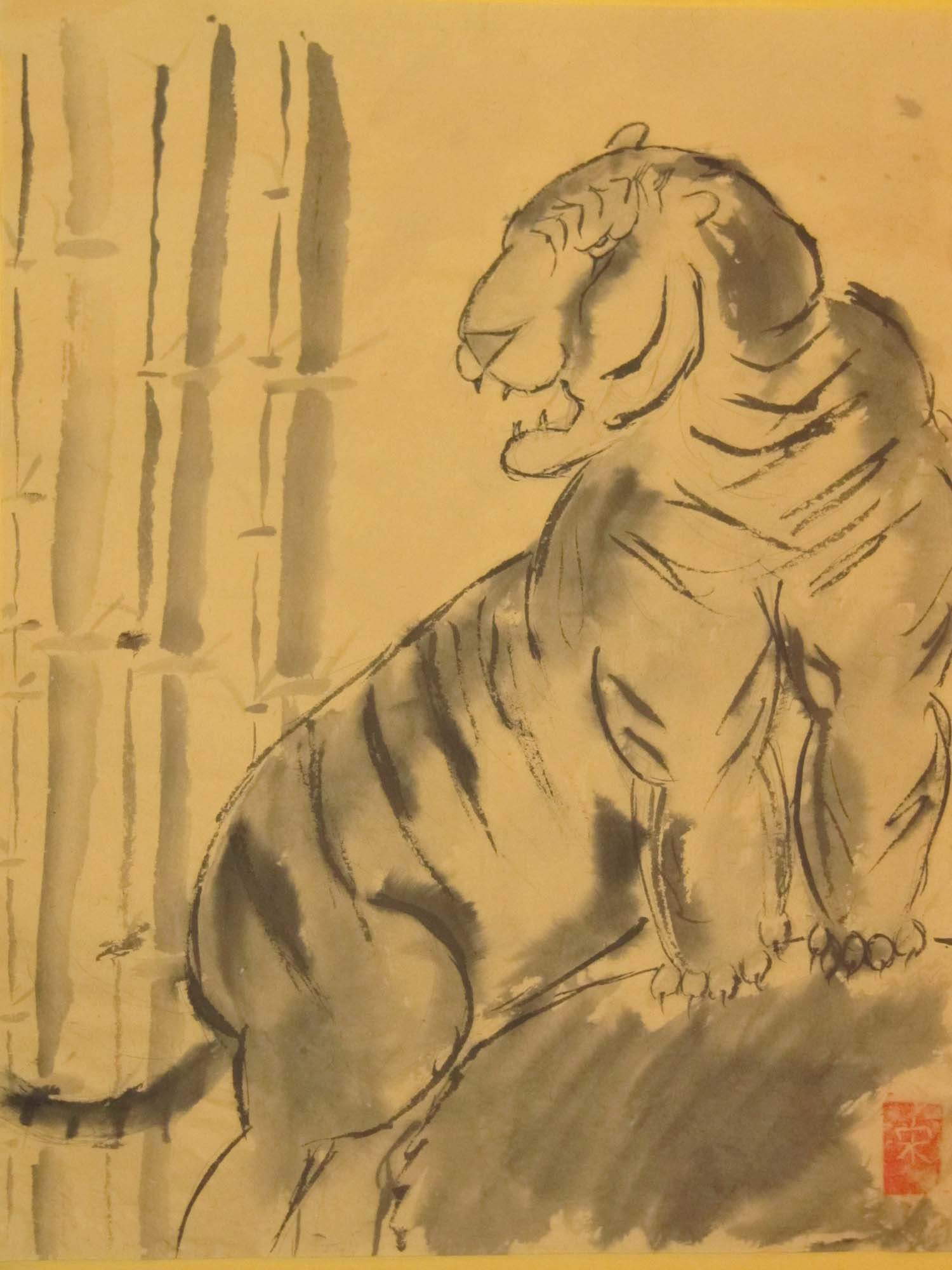
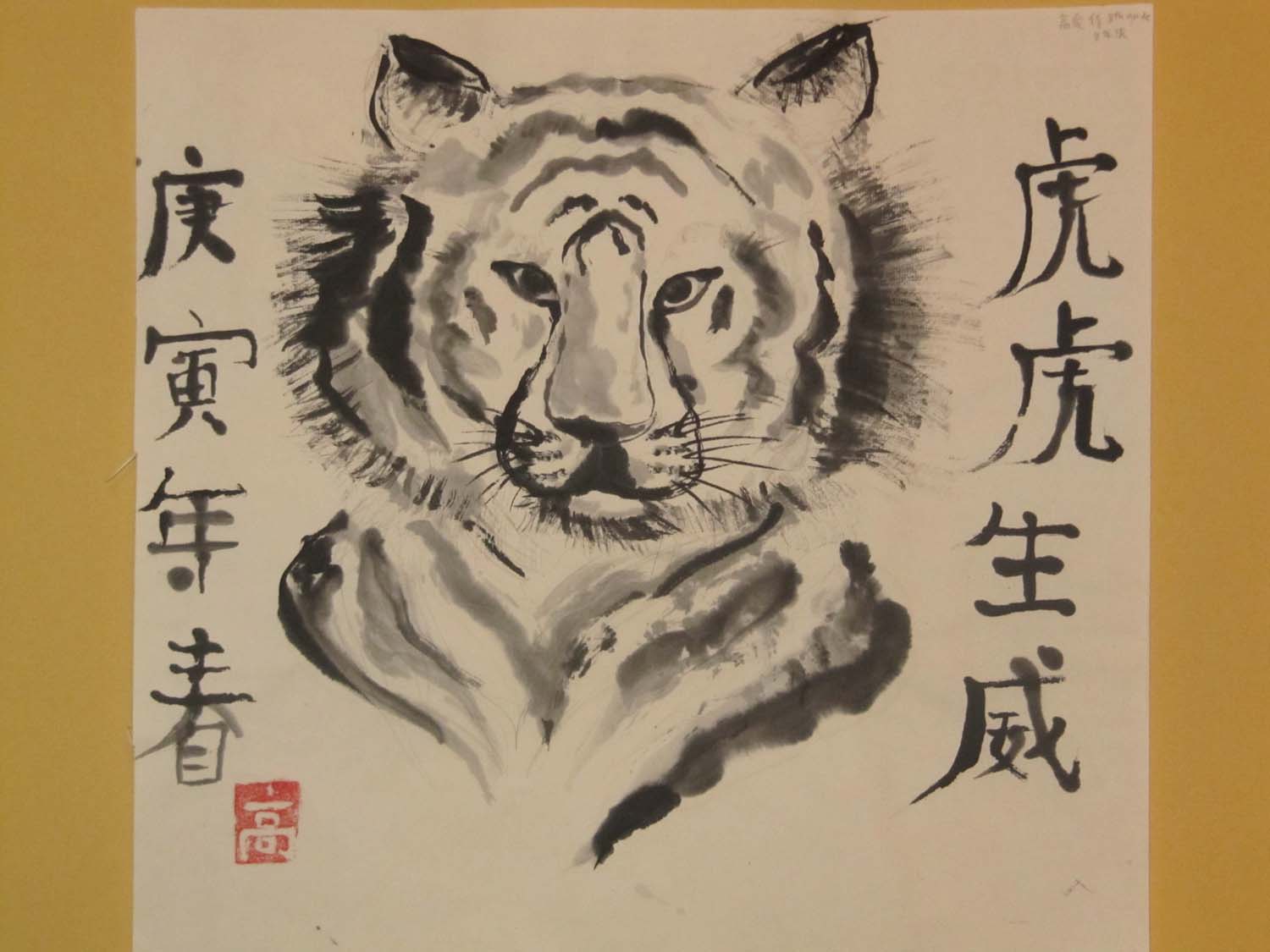

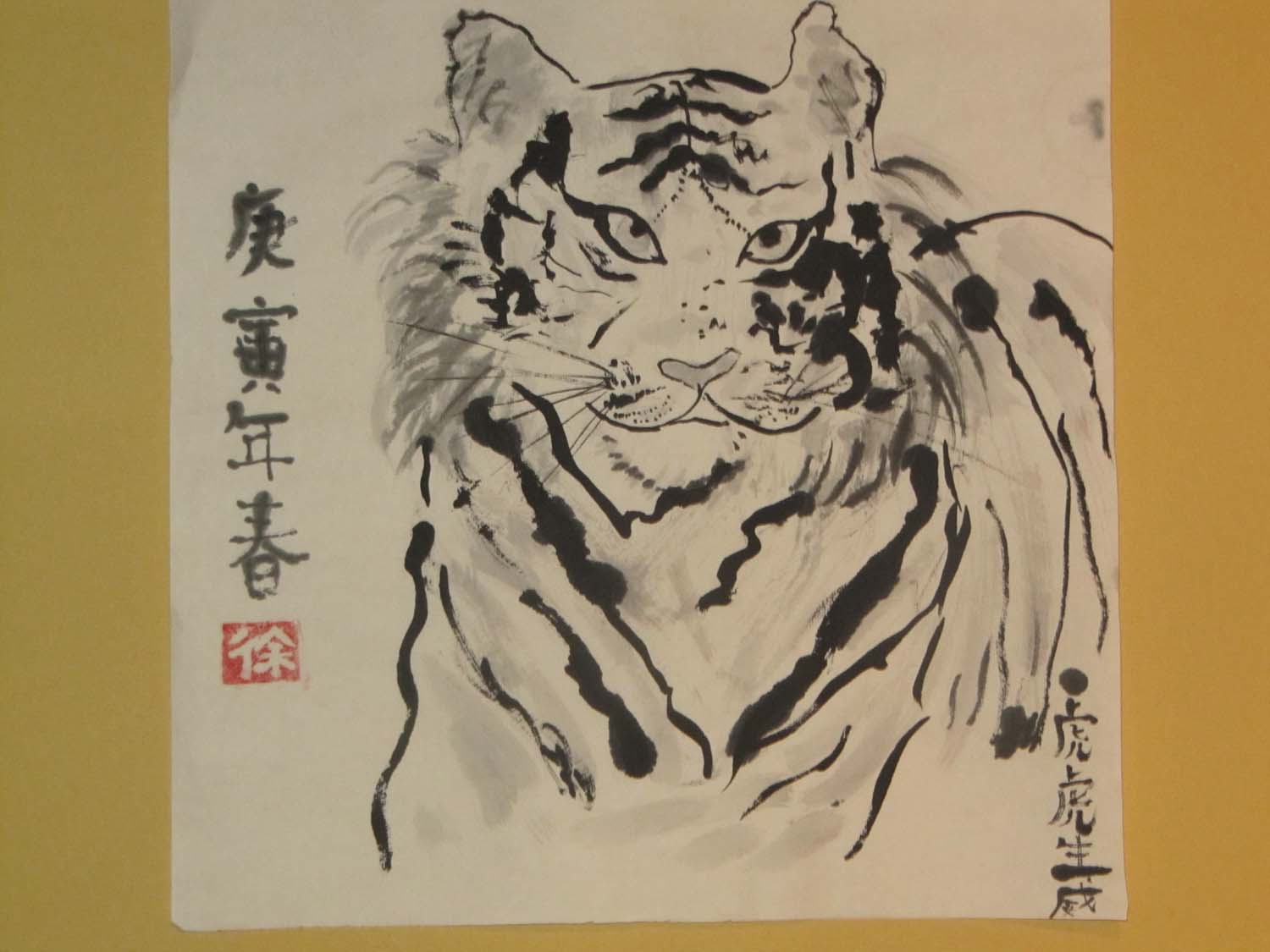
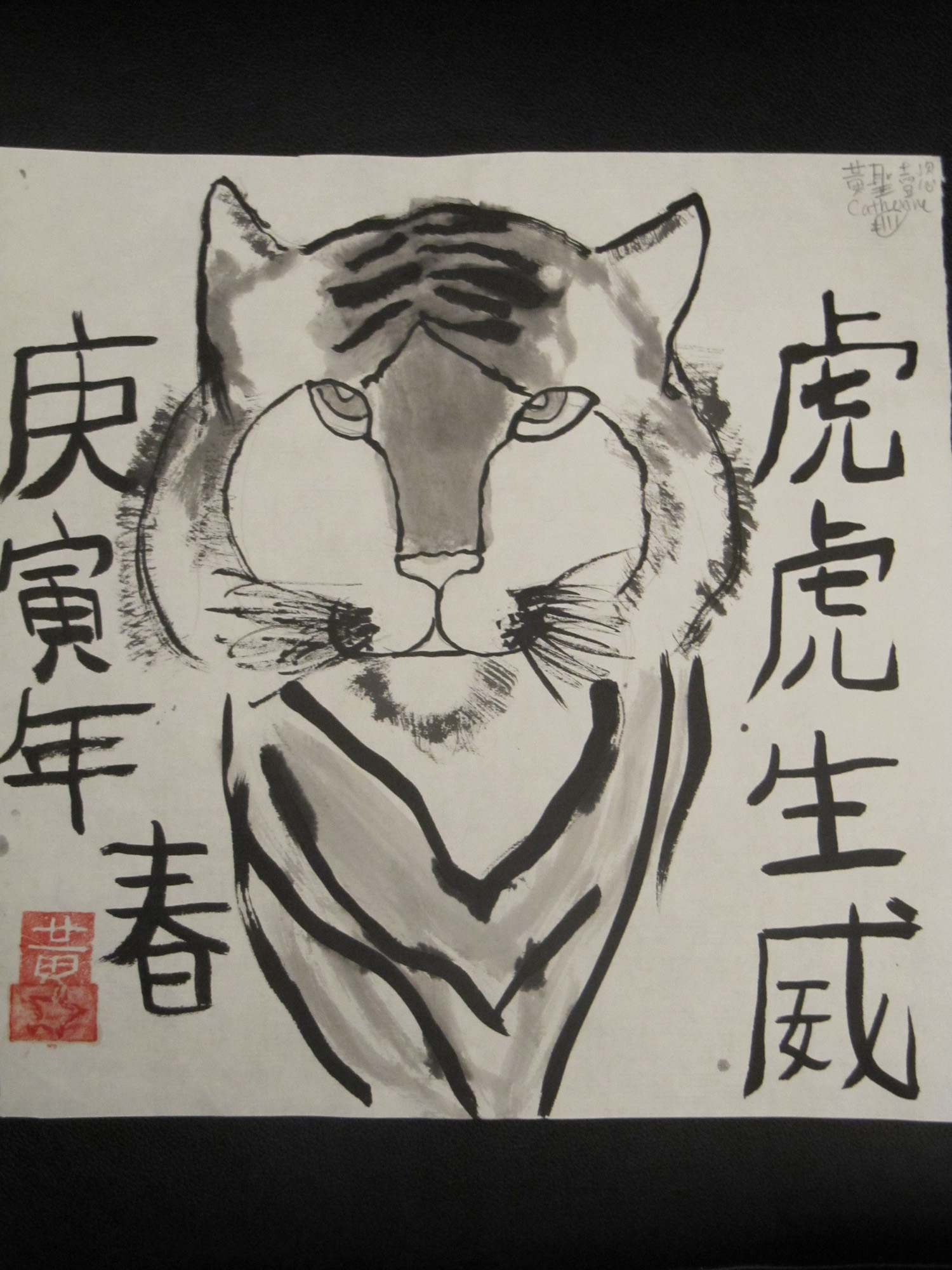
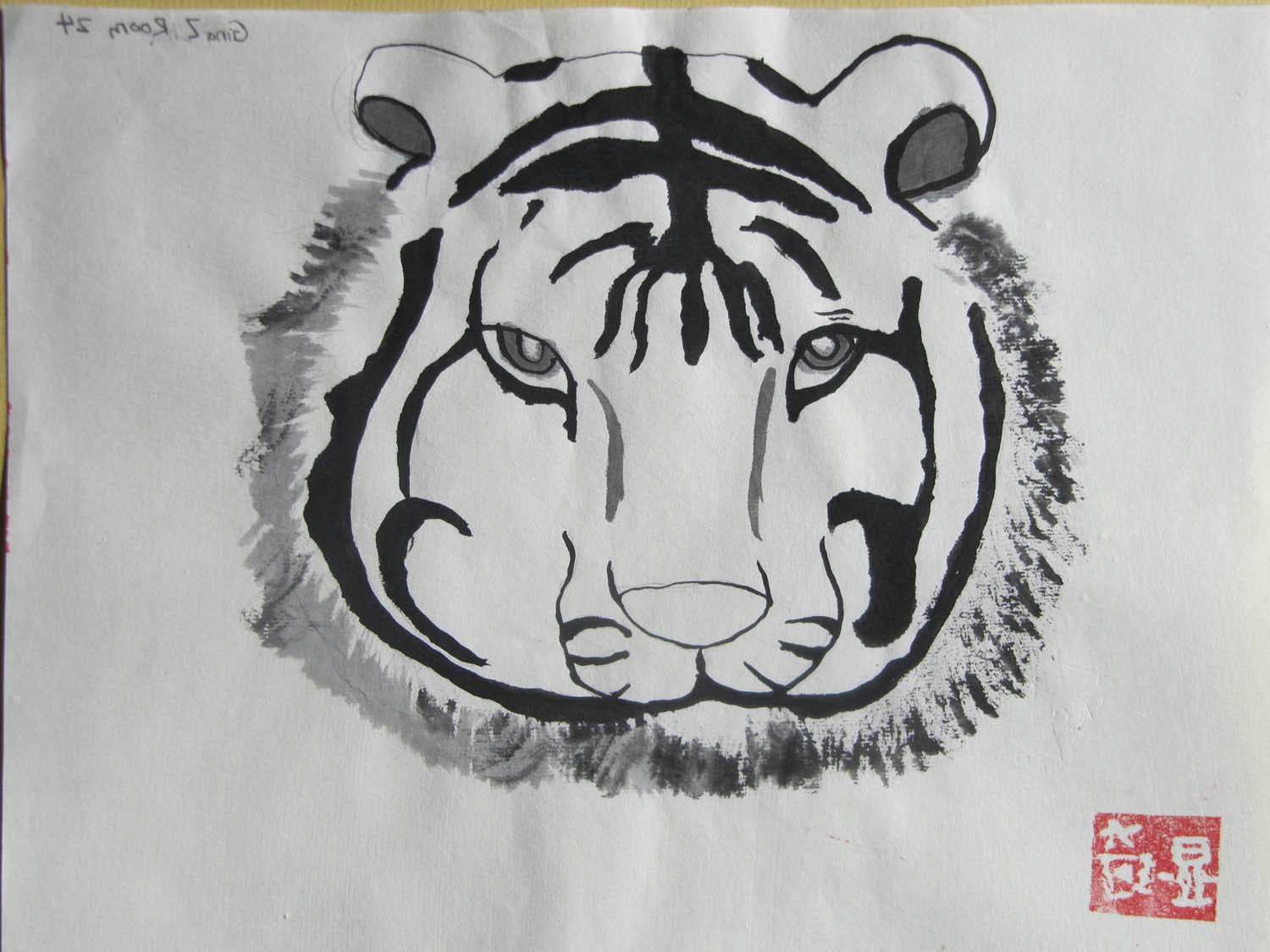

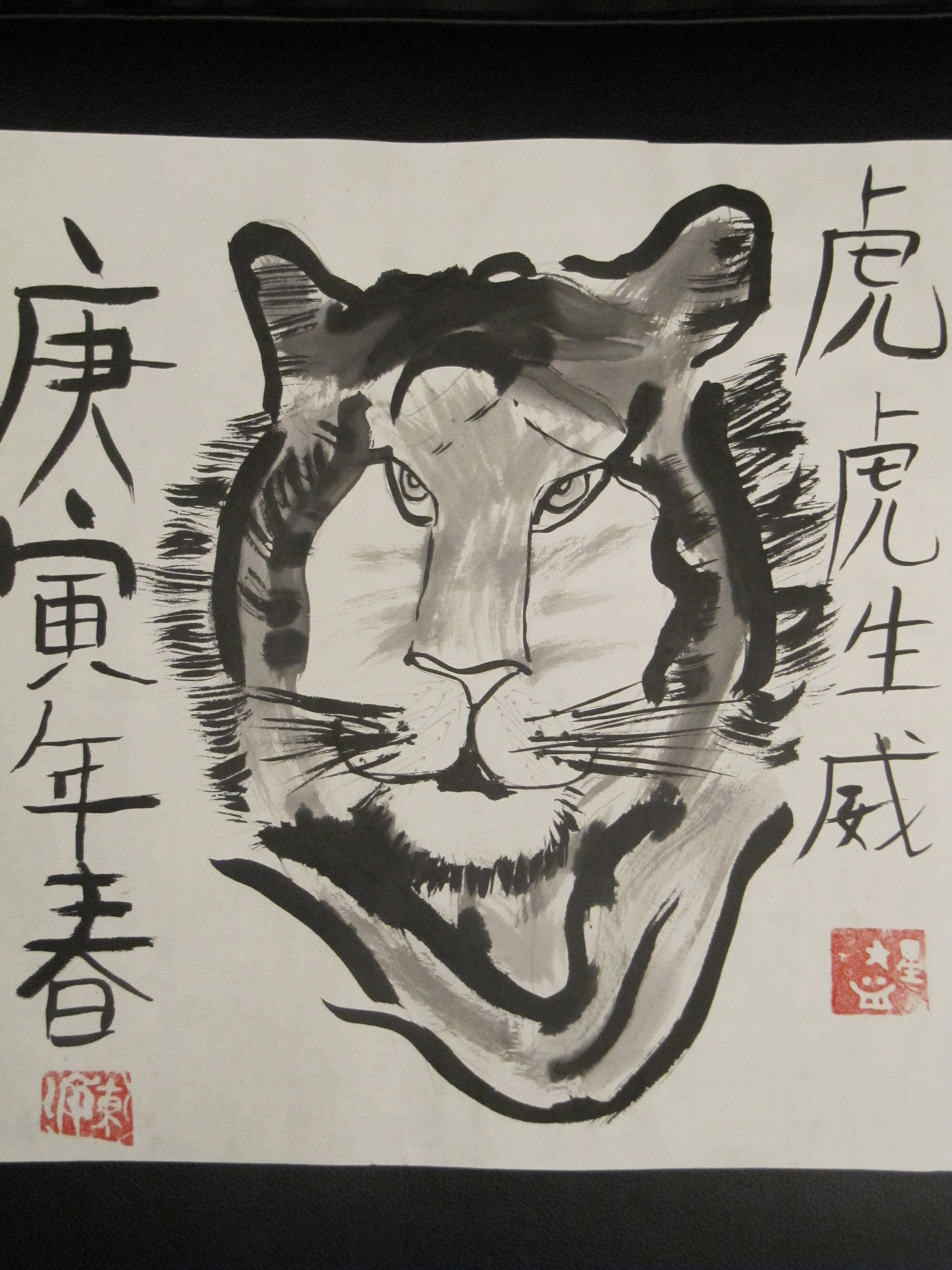

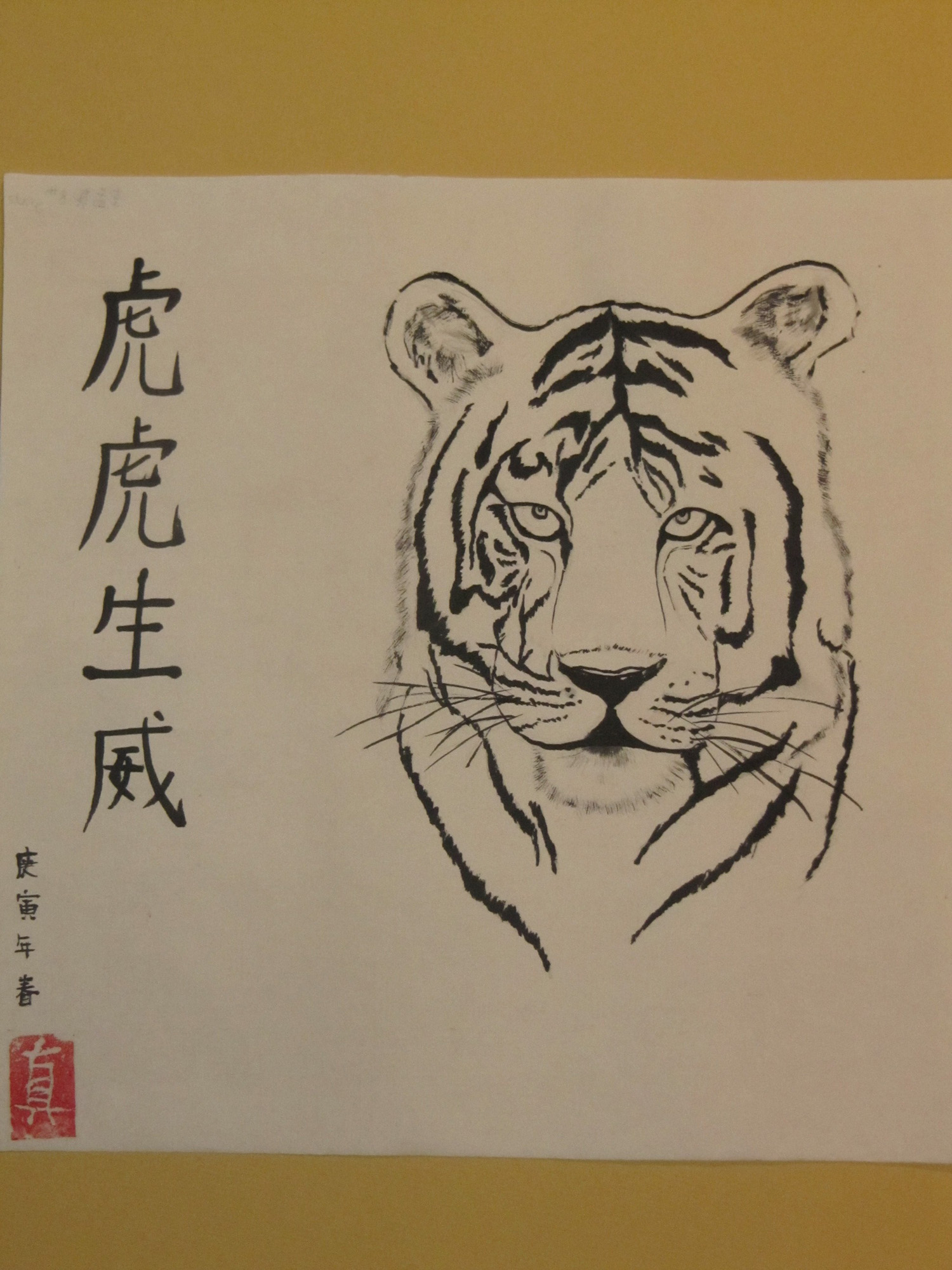
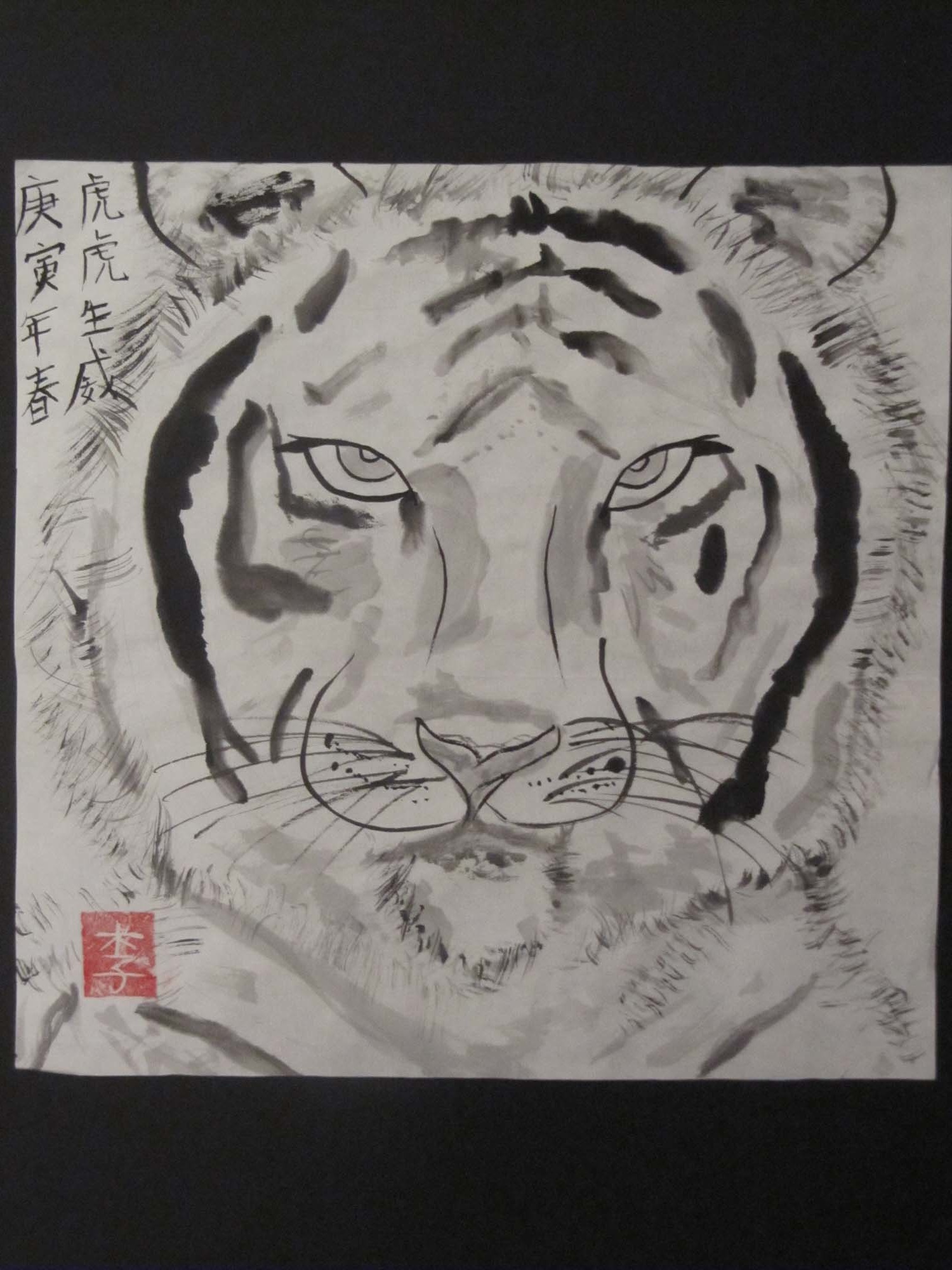
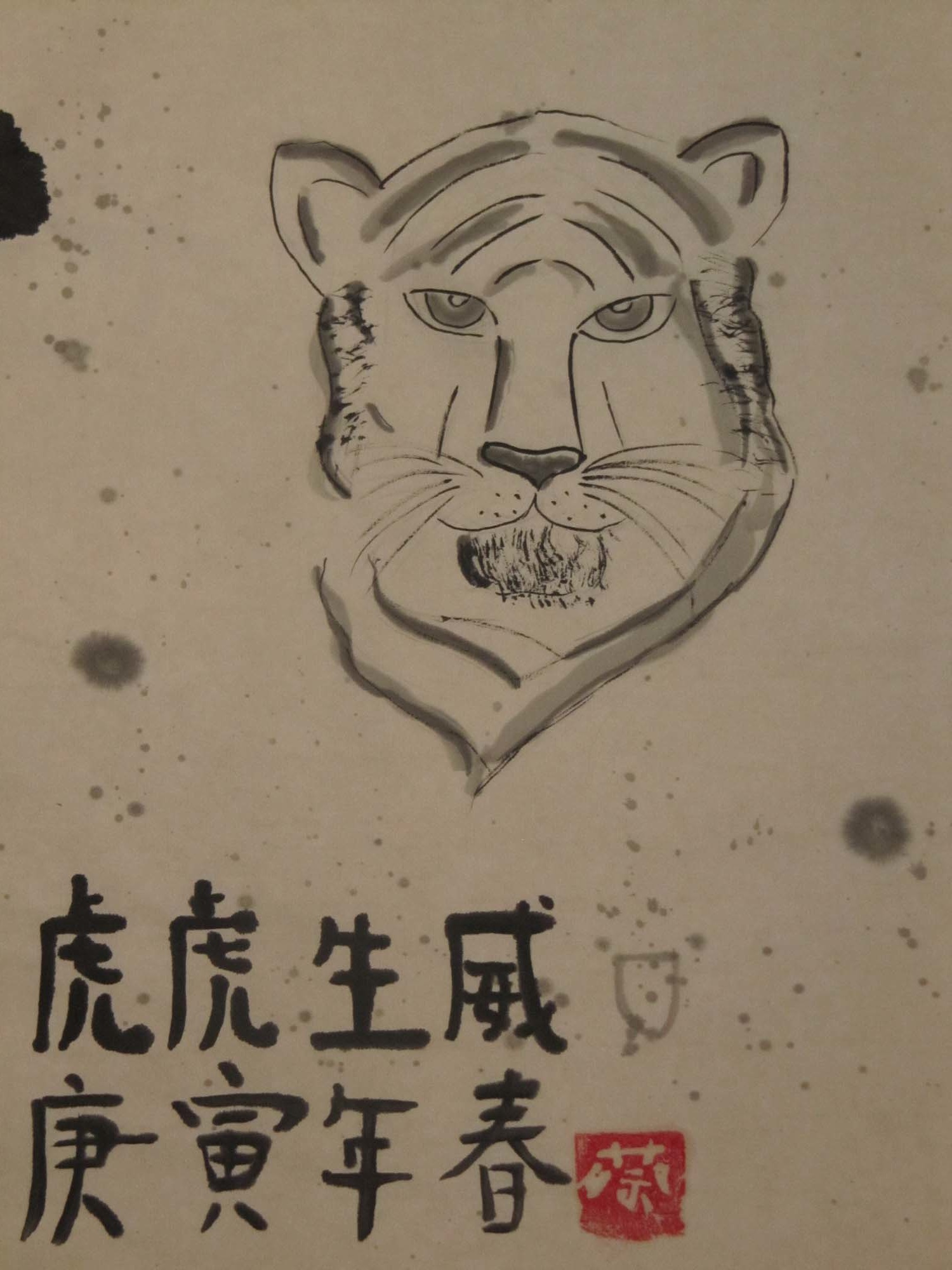
Lotus Group Painting
Each of these lotus paintings were created by small groups of 3-4 8th grade students.
Splash Painting
Students 2nd grade - 8th grade created these paintings.
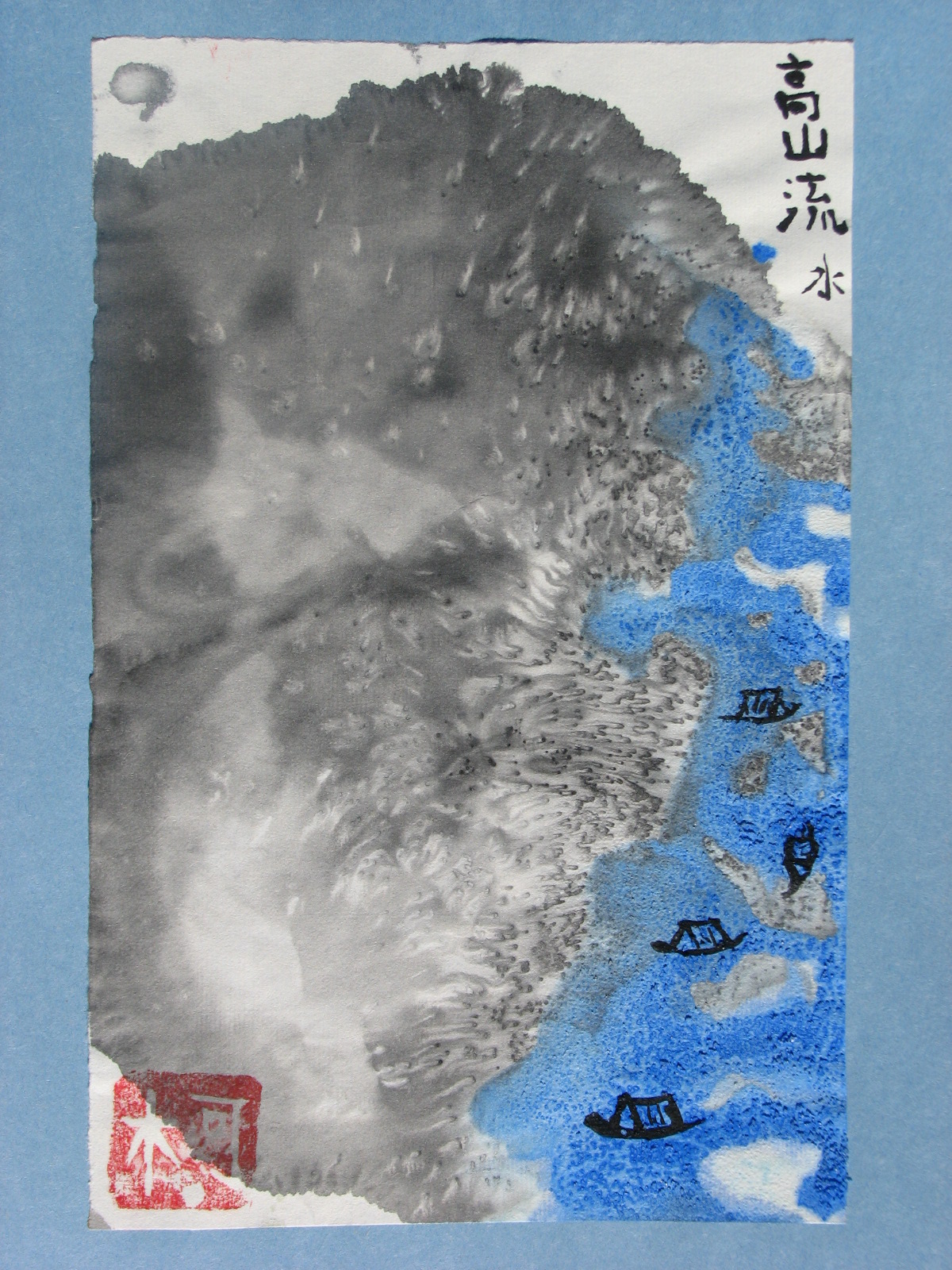
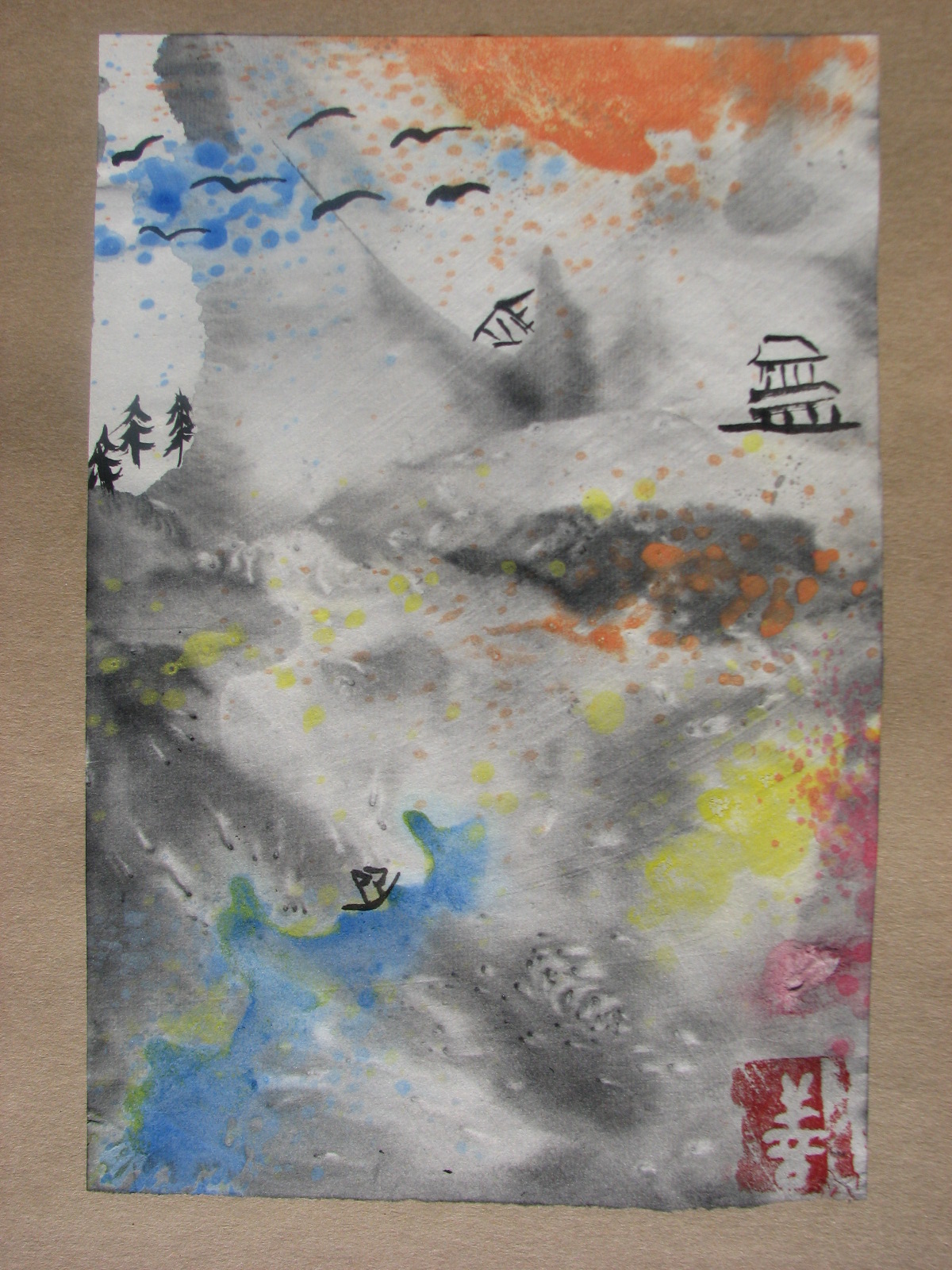

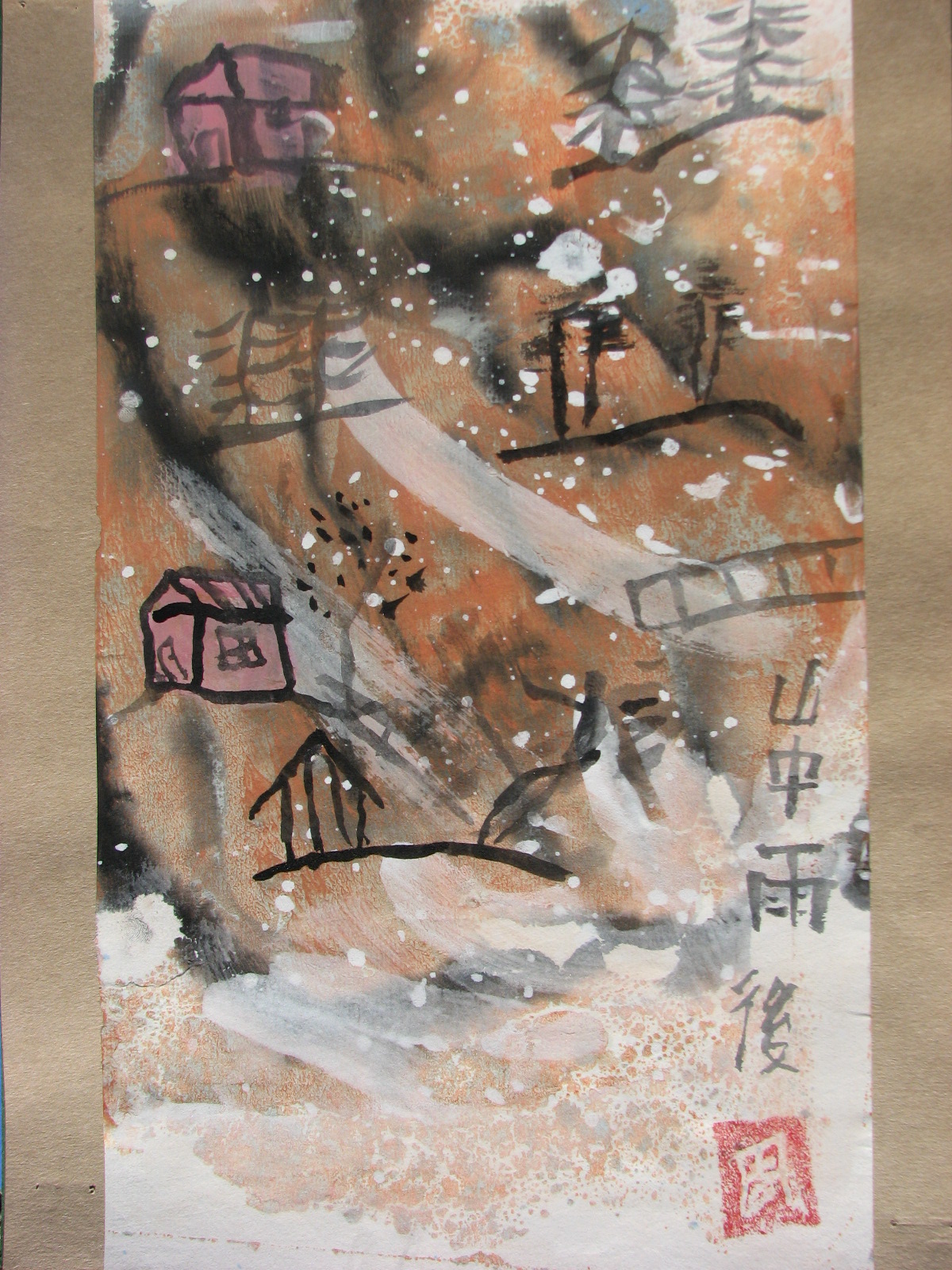
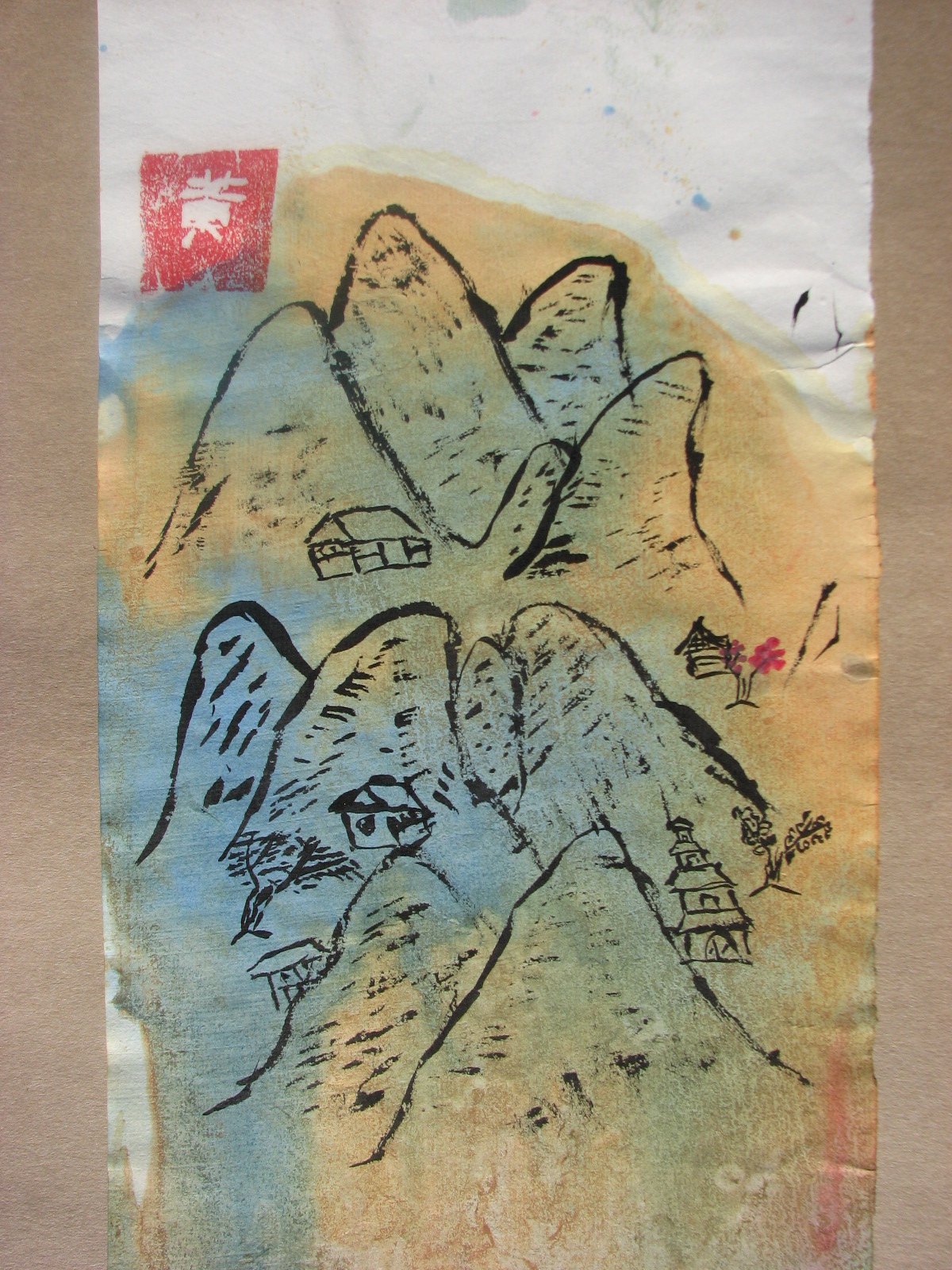
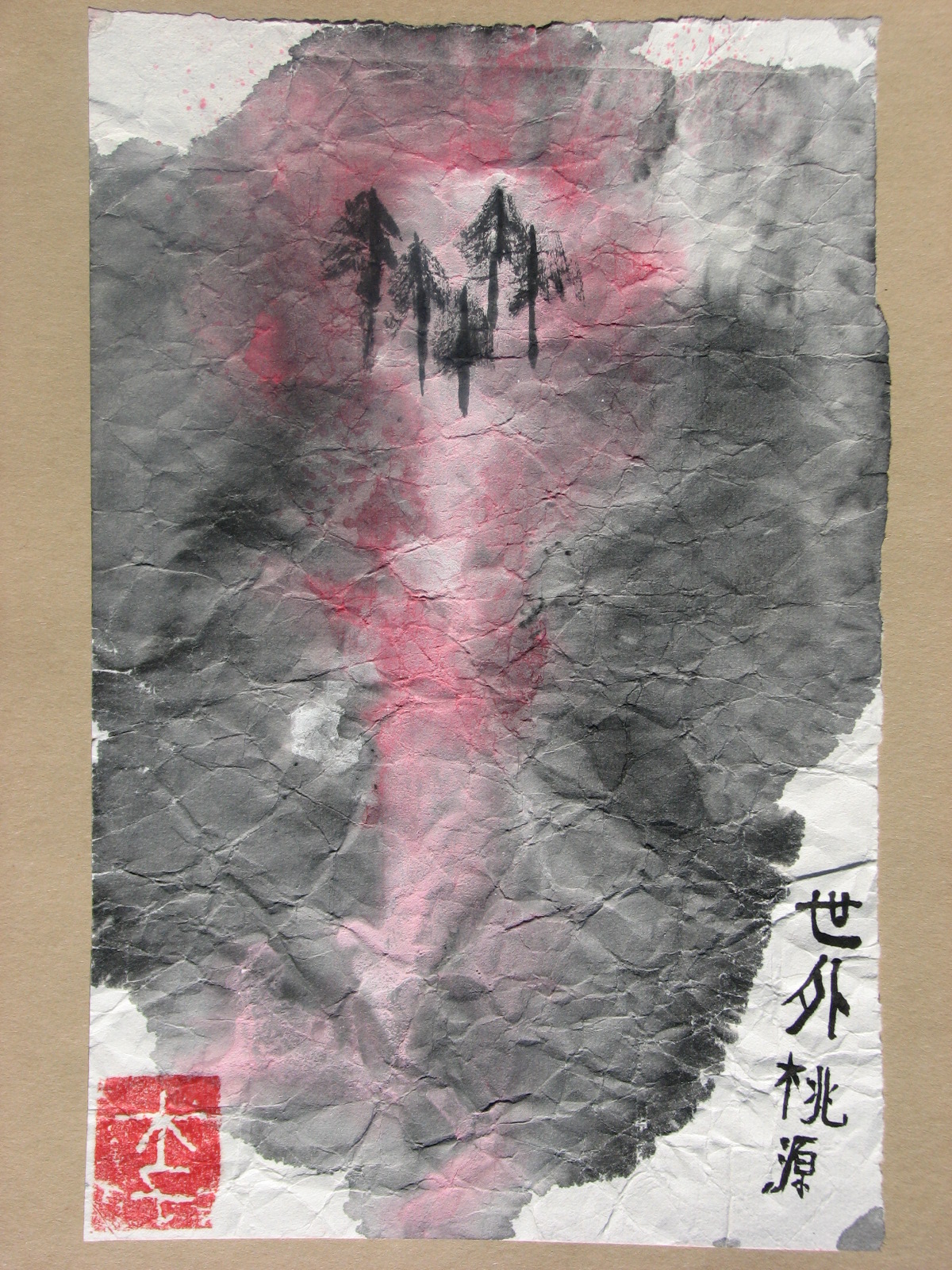


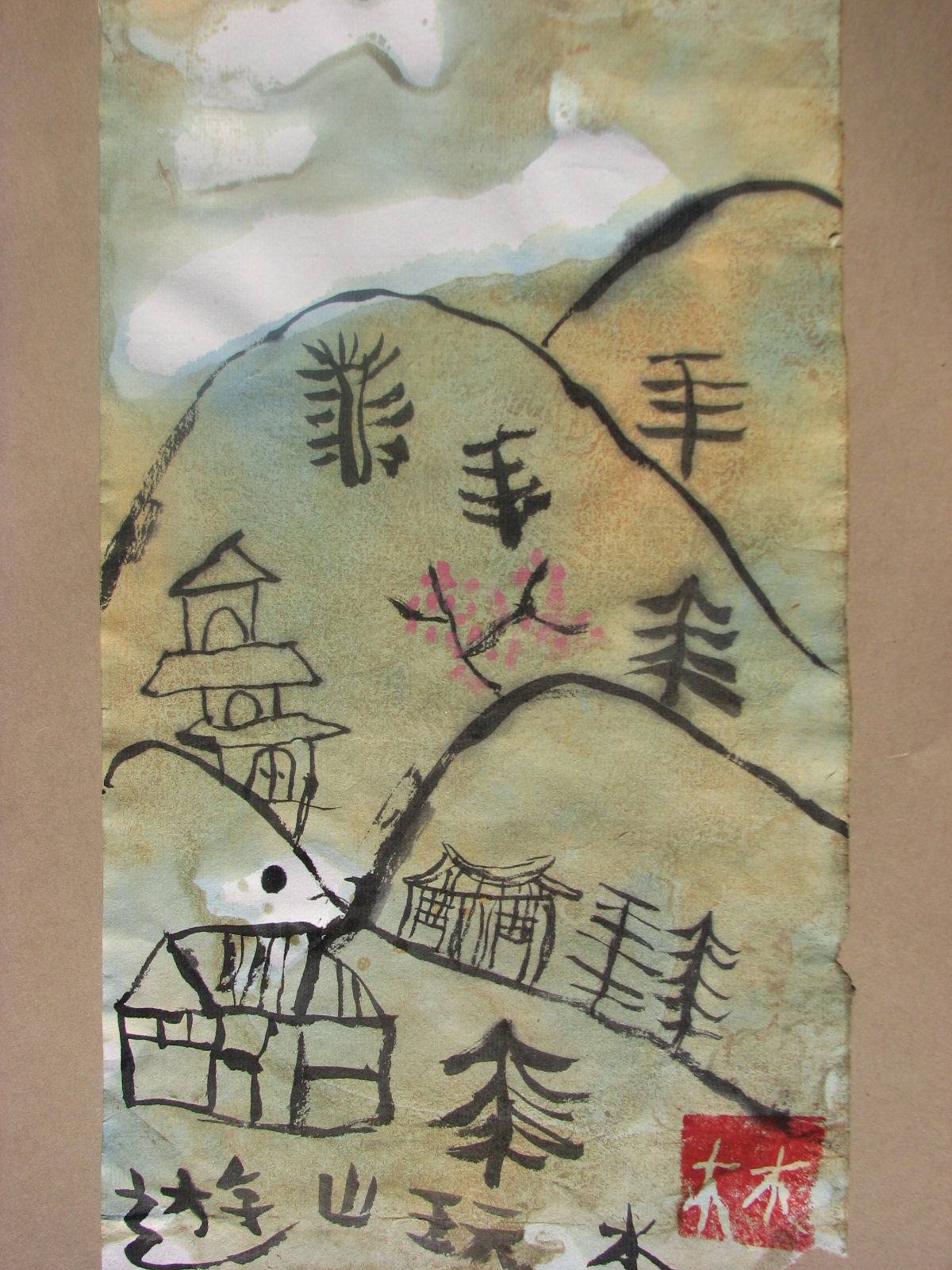
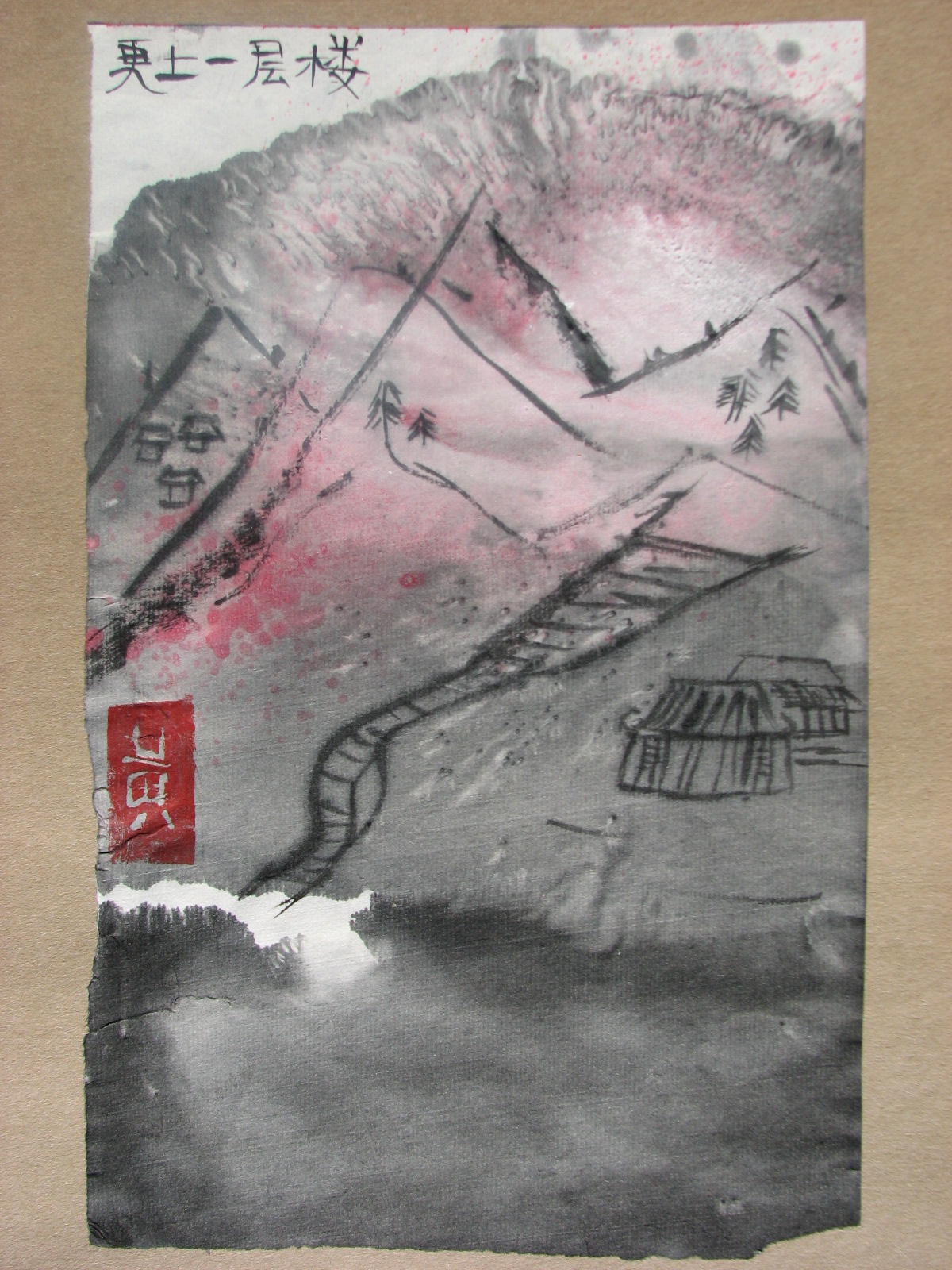
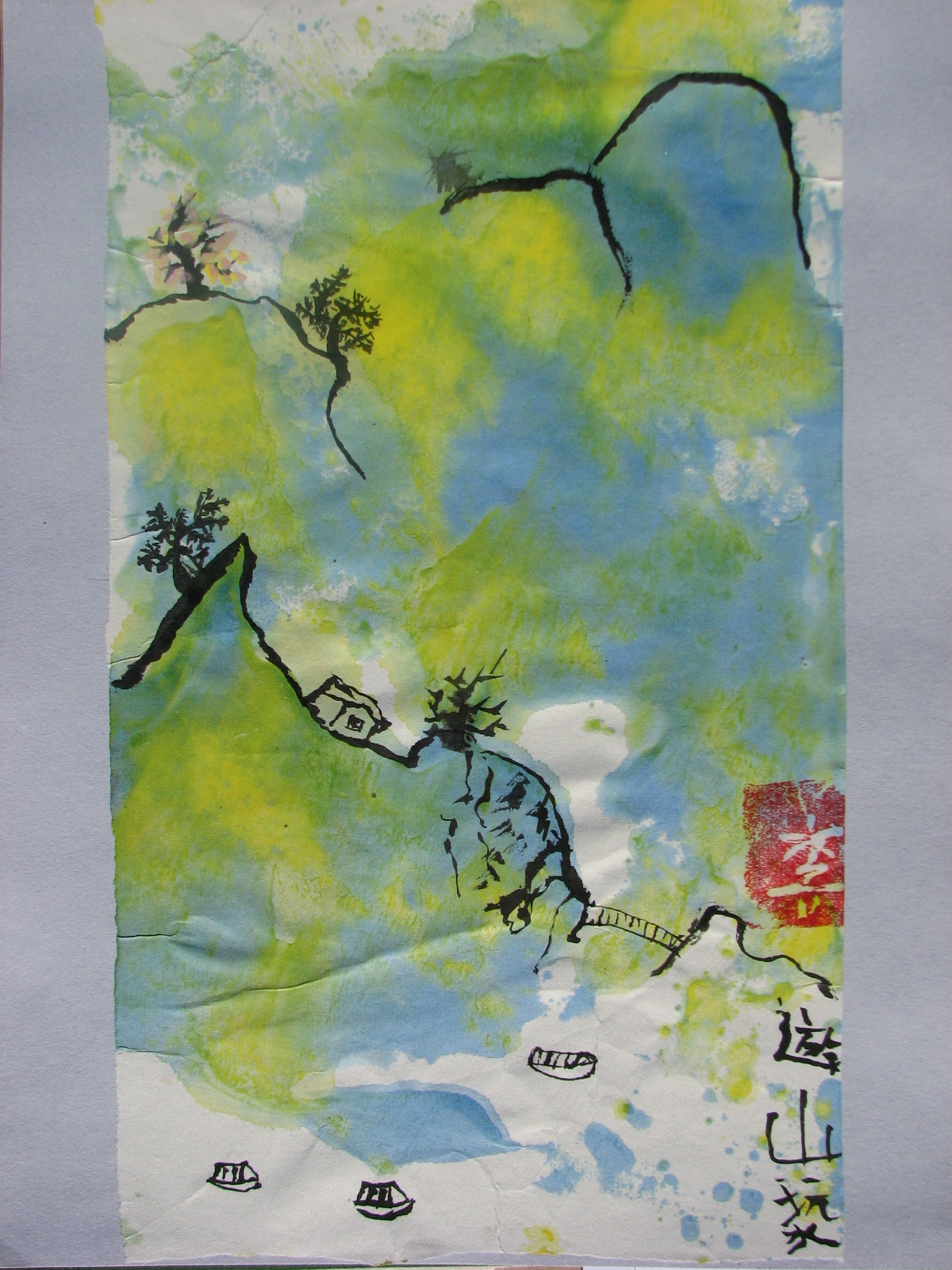


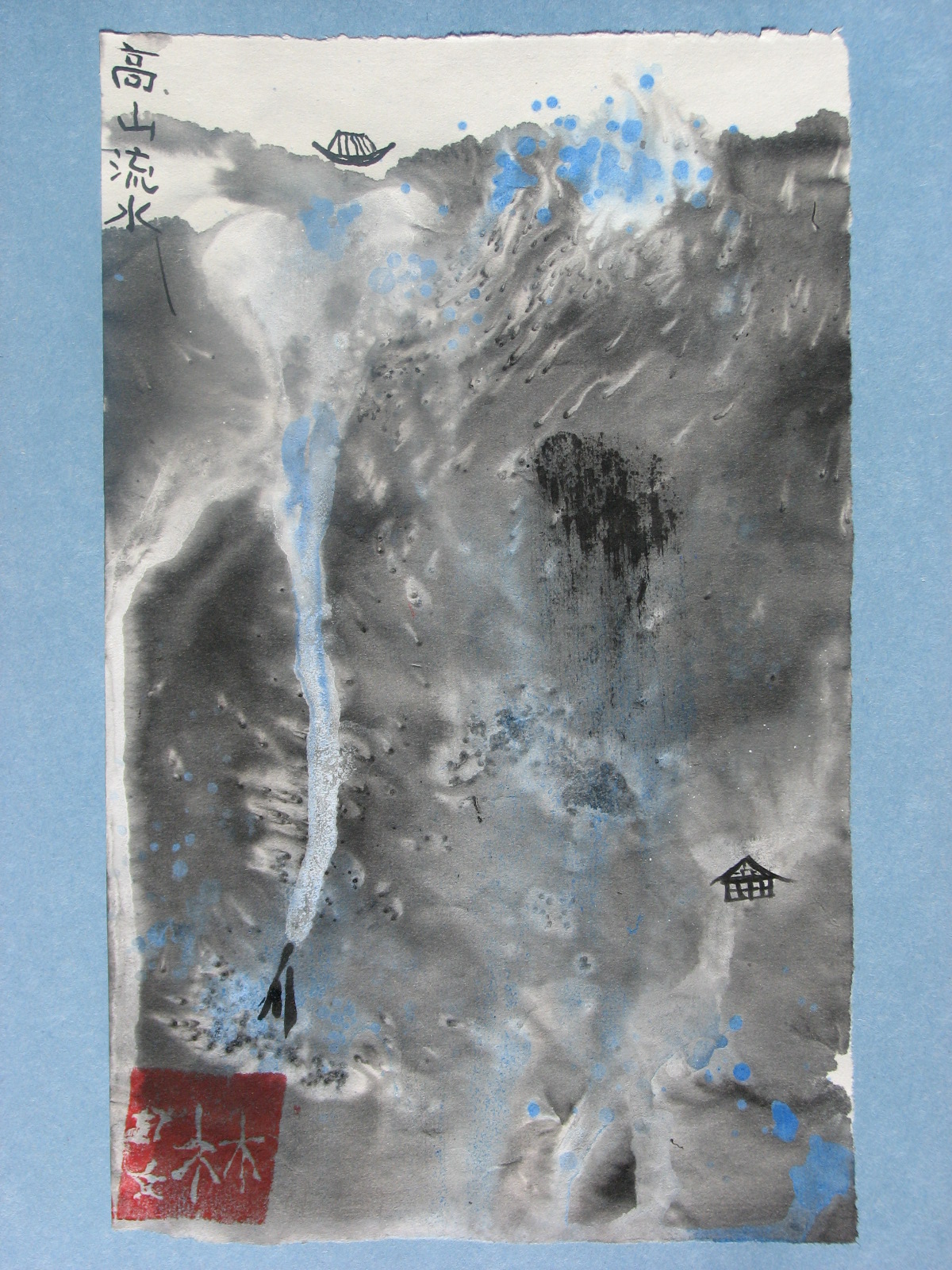
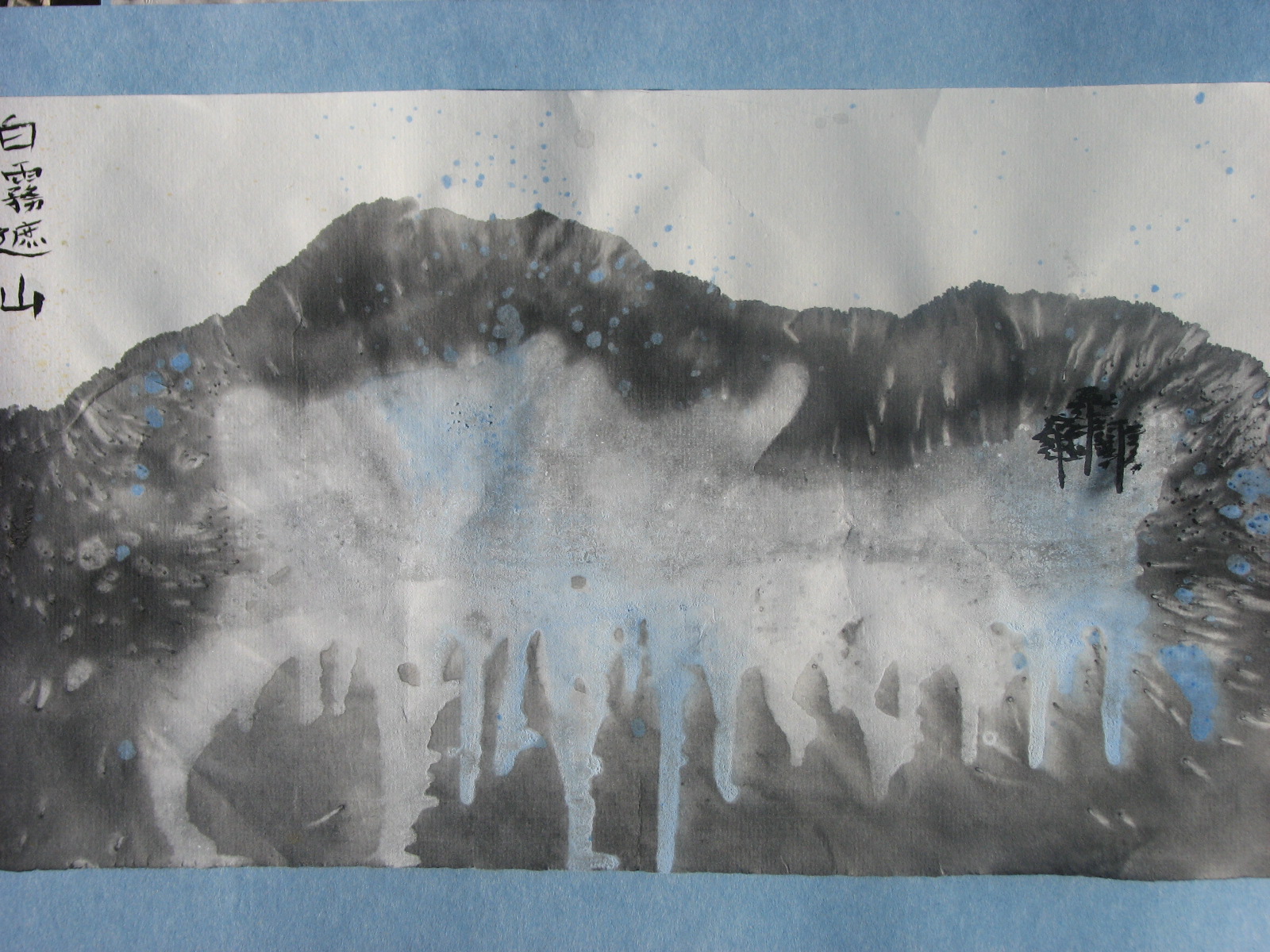
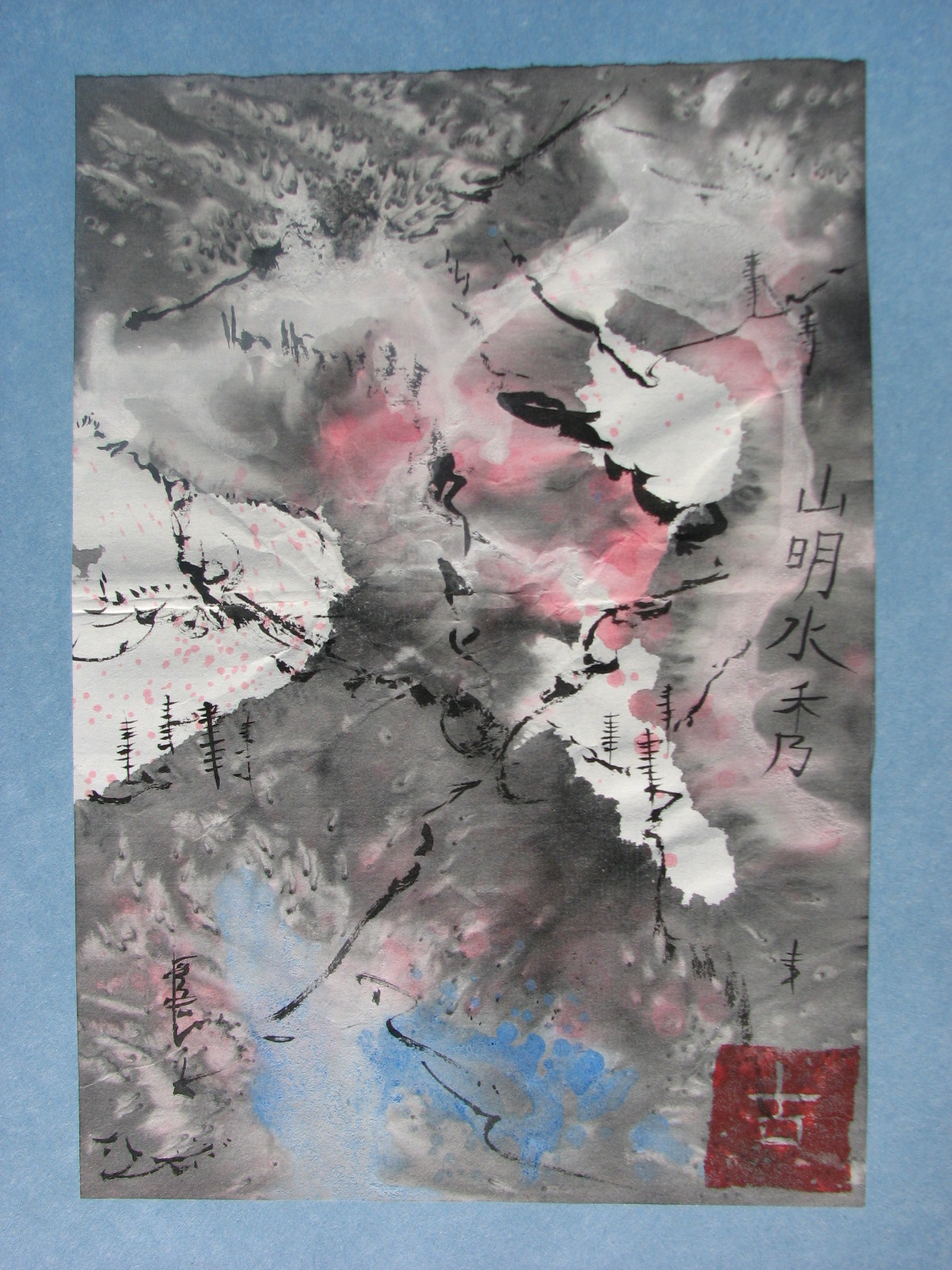
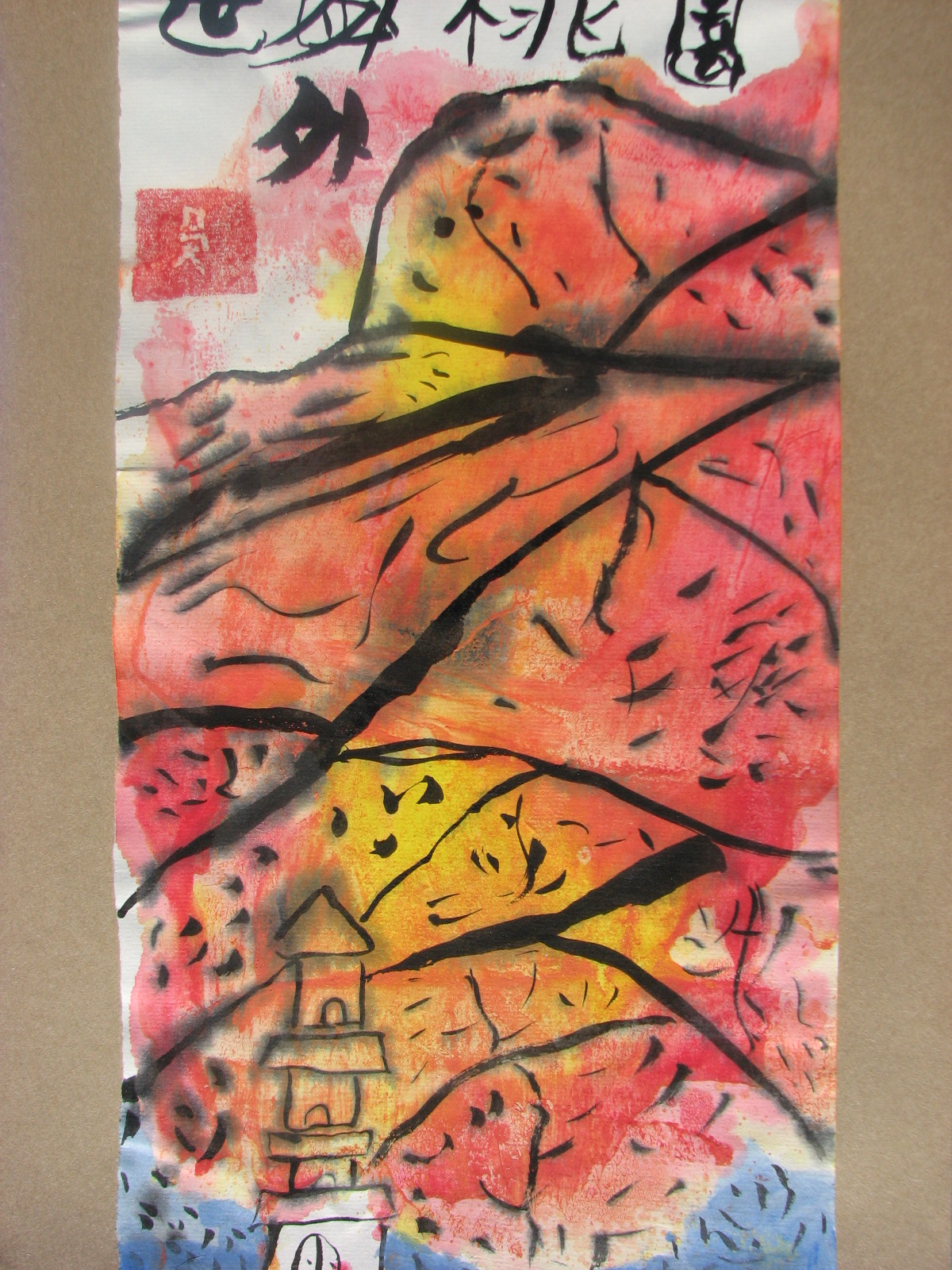
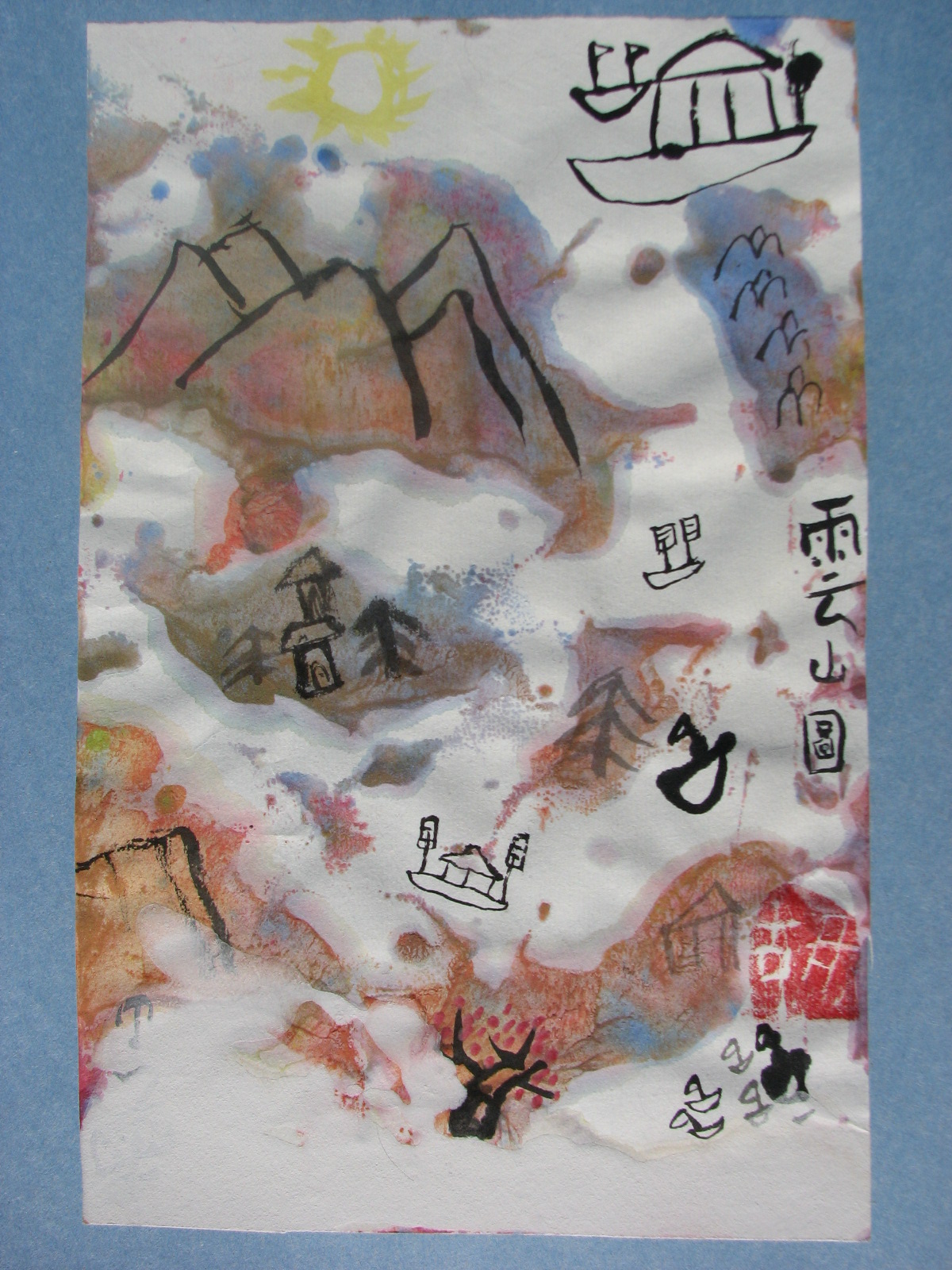
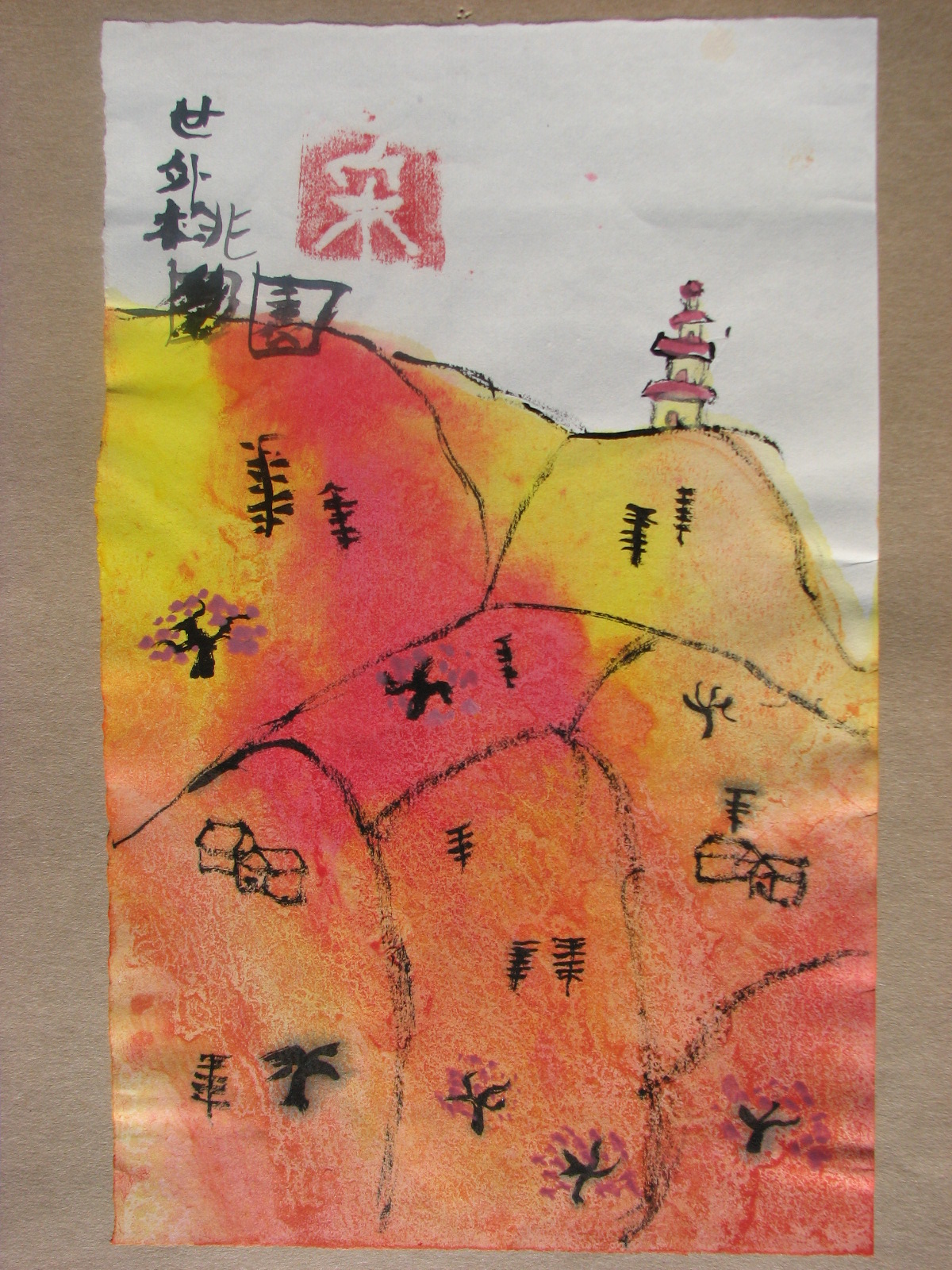

The Four Gentlemen
Plum Blossom, Orchid, Chrysanthemum and Bamboo painted by my 5th graders.
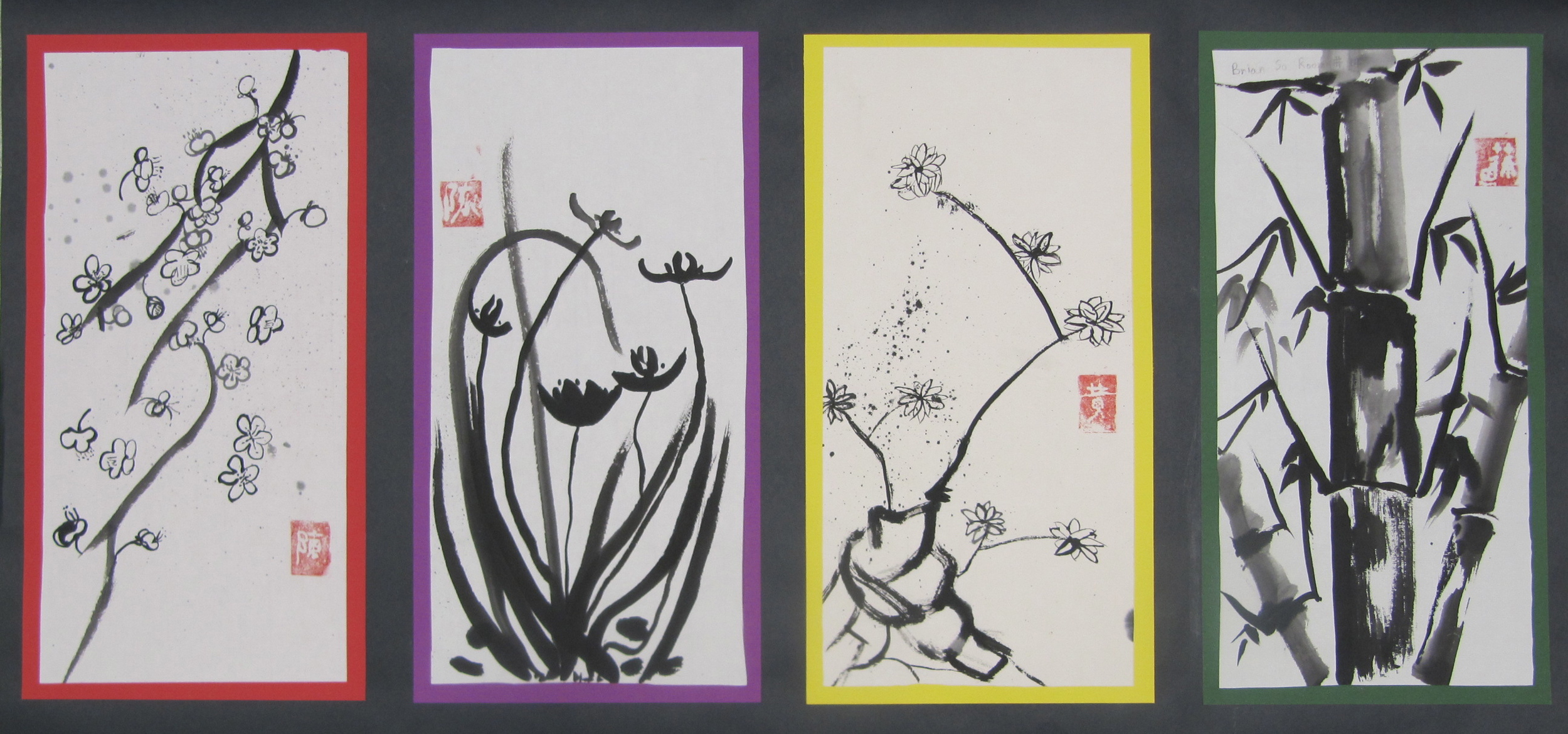
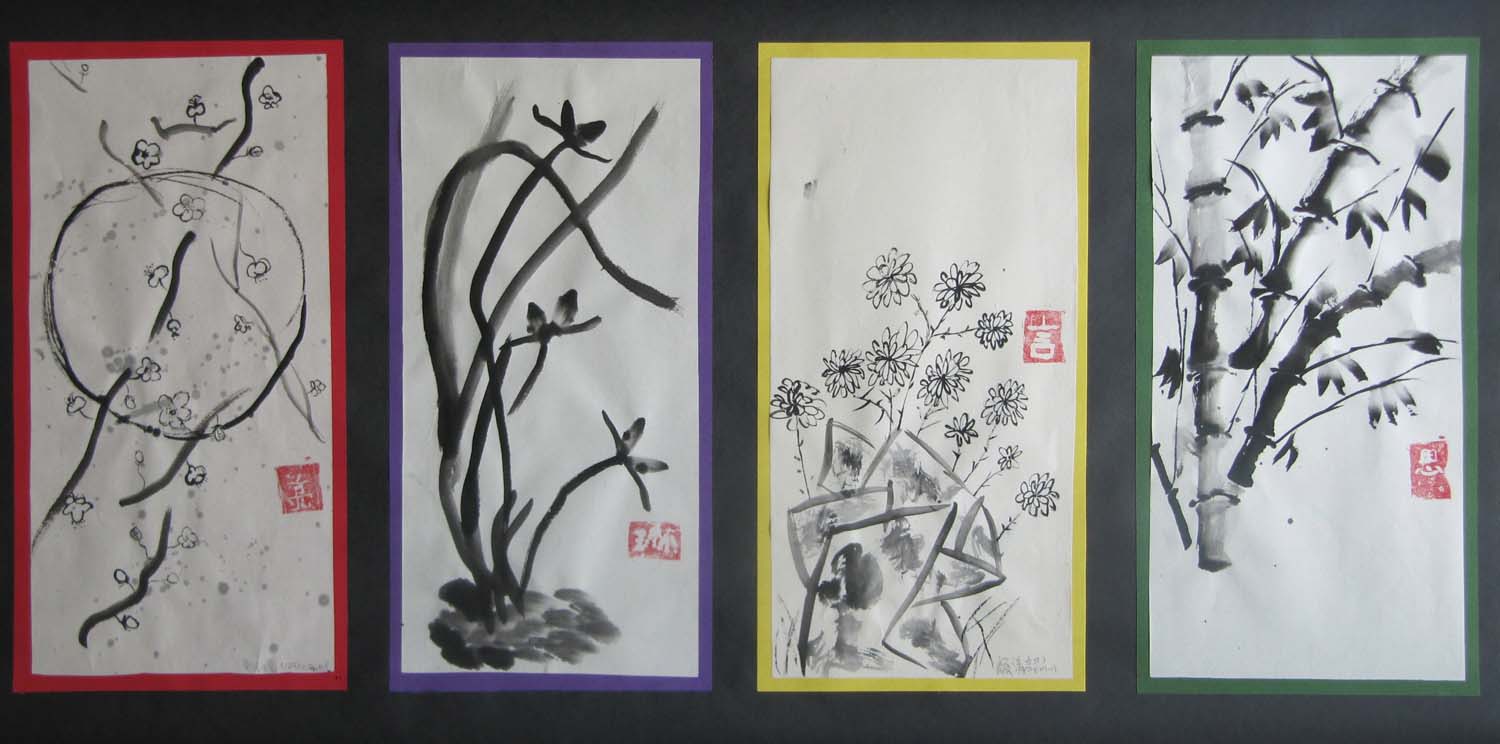
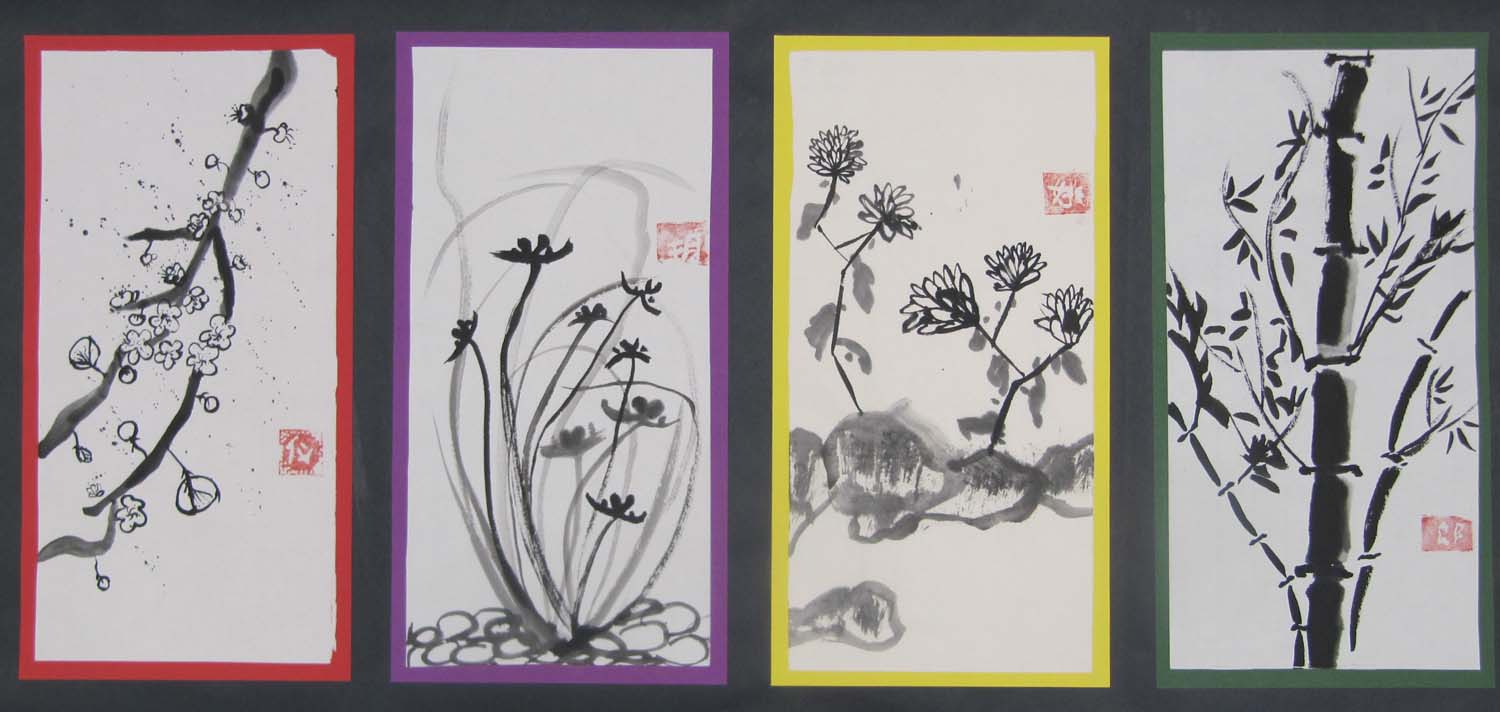
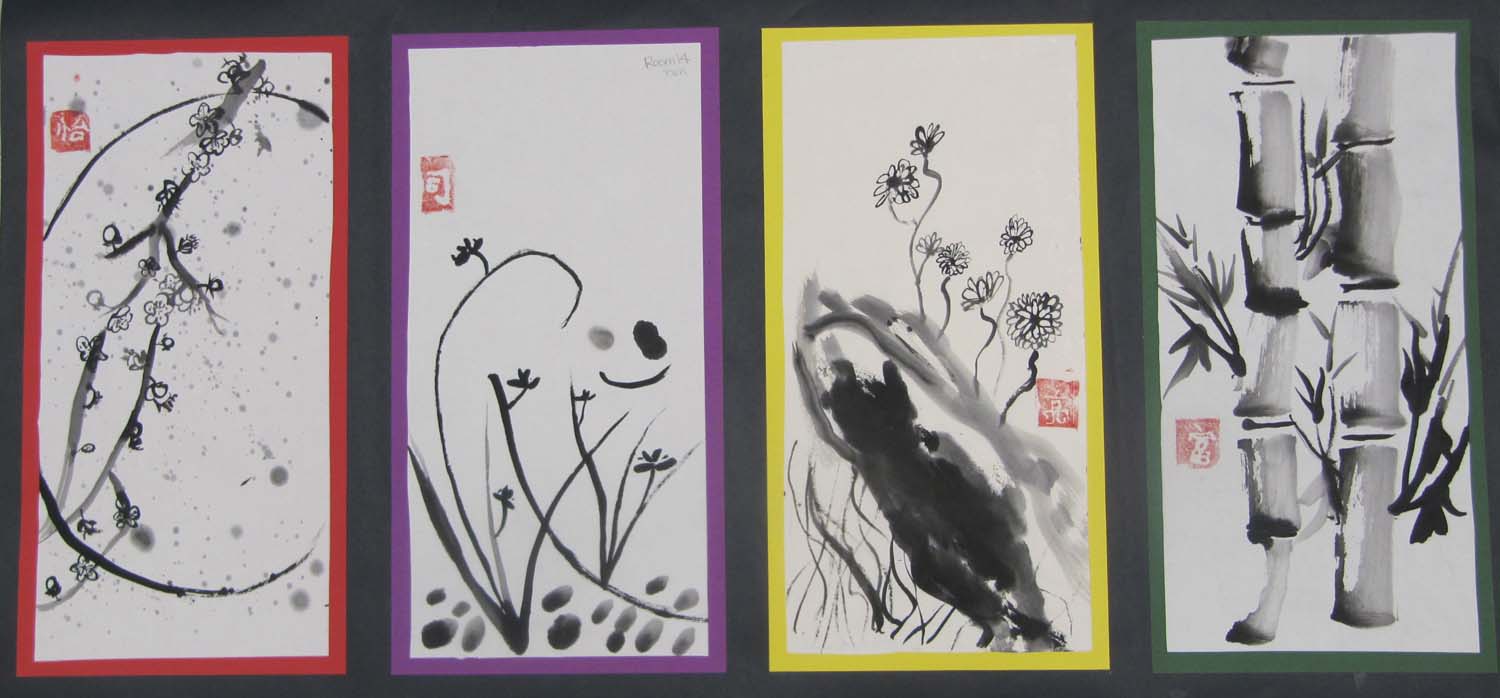

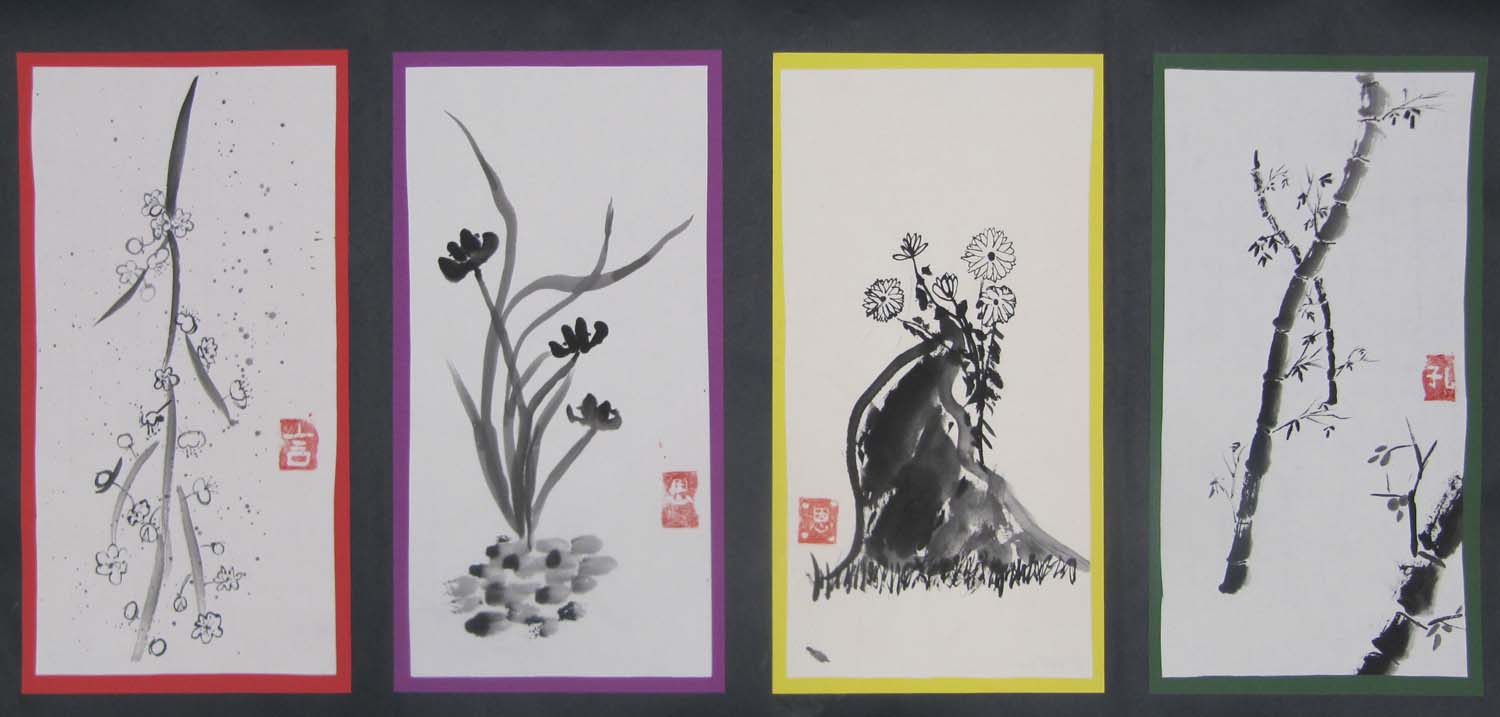
Lion Dance
We have actual lion dance at school, the 3rd and 4th graders painted these after seeing a real lion dance performance and observing closely what the lions look like.
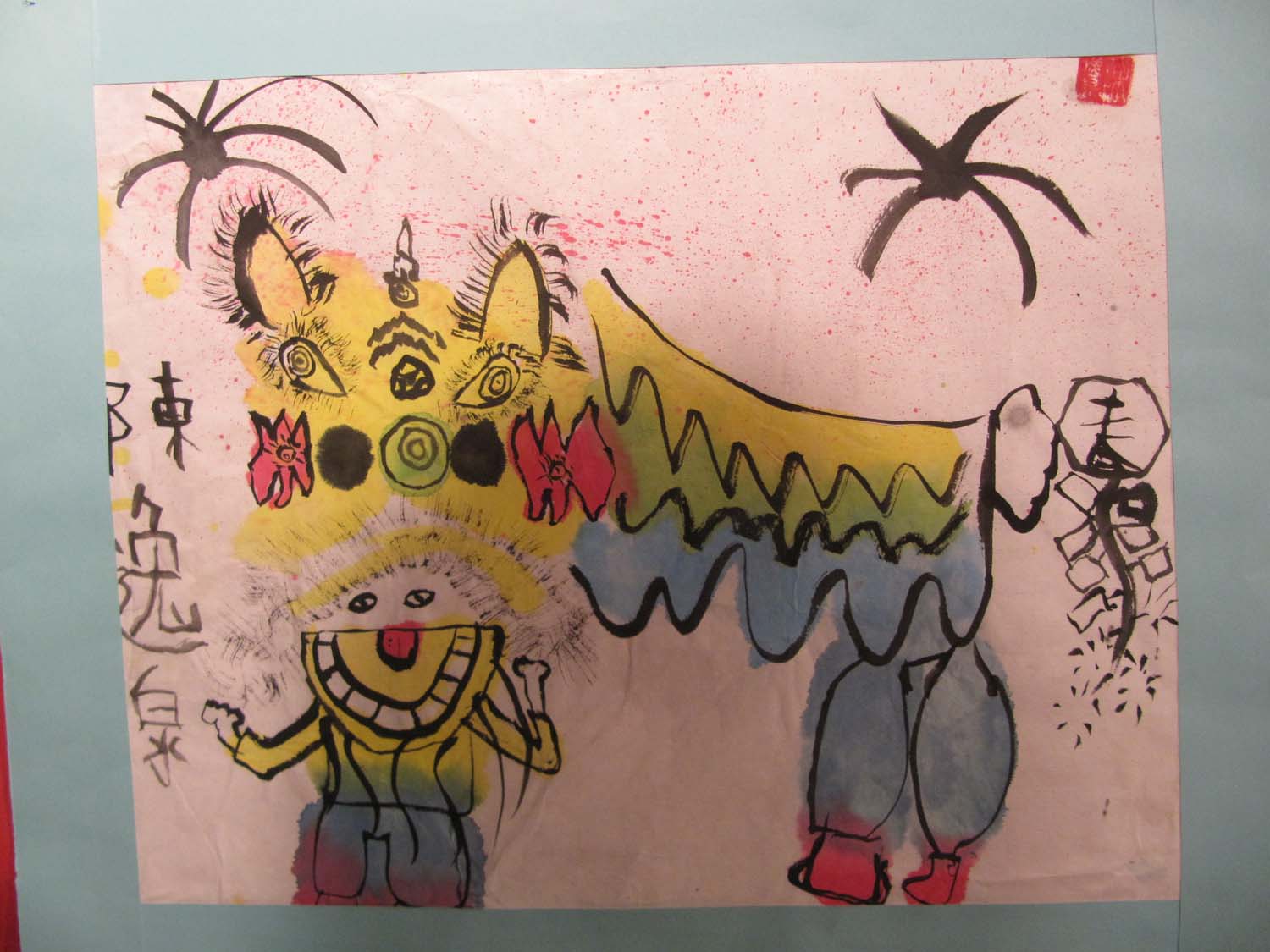


Zhang Daqian's Lotus
My 8th graders learned about Zhang Daqian in this class, and what a dynamic, incredible person he was. We then paid close attention to how he famously painted his lotus, with every brushstroke that showed the movements of the delicate petals and wild swatches of blue and green splashes in the background. Well, the students would have liked to splash paints like Zhang Daqian but it would have been quite impossible to clean up the classroom afterwards. So instead, we painted the lotus flowers and the leaves first, and then, as a treat, we used a bowl to block out part of the paper, and sprayed blue and green paint on using spray bottles to create the moon and a bit of a blue-greenish background that harks back to Zhang Daqian's work.
Year of the Horse
The 6th, 7th and 8th graders learned how to paint horses with a brush and Chinese ink in the style of the famed horse painter Xu Beihong. In order to teach how to paint a complicated animal like the horse to groups of 25 students who are not all that familiar with holding the Chinese brush, I had to derive a formula that's simple and easy to understand - 1) Paint two diagonal strokes to define the nose, 2) a sort of U shape for the snout/mouth, 3) add a strong shallow U shape jaw, 4) a small stroke for an eye, 5) 2 short strokes for the ears that point up, 6) 2 slightly curved strokes for the neck, 7) then the back, 8) paint the legs like how you'd paint bamboo, in 2 to 3 sections, this can be a little abstract, 9) add hoofs as needed, 10) Add a beautiful, flying mane and tail with a dry brush. One student exclaimed that his horse can be in a Loreal shampoo commercial, that's what we want!
The students actually painted on plain 81/2" x 11" xerox paper, it's readily accessible, I don't have to cut big sheets of rice paper to size, and it doesn't allow the ink to spread very much, therefore, much easier for the students to control.
Above: Horses by Xu Beihong (1895-1953) Below: Horses by my 6th graders

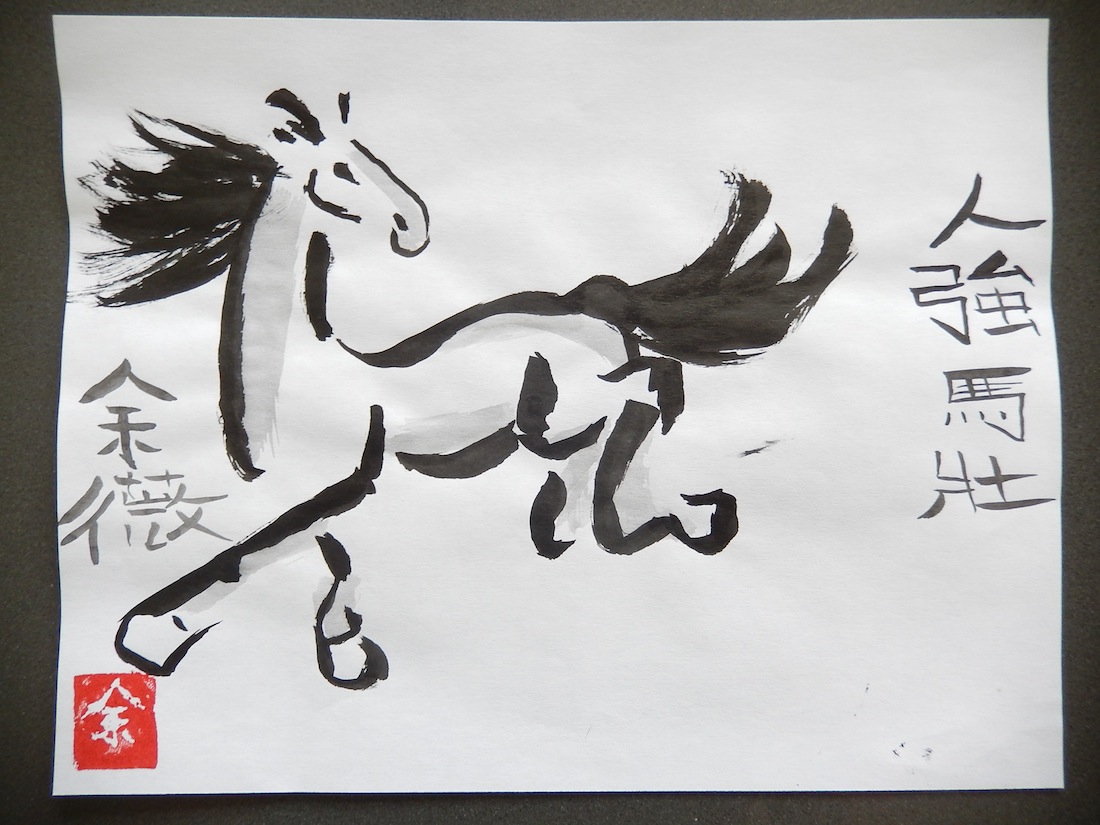

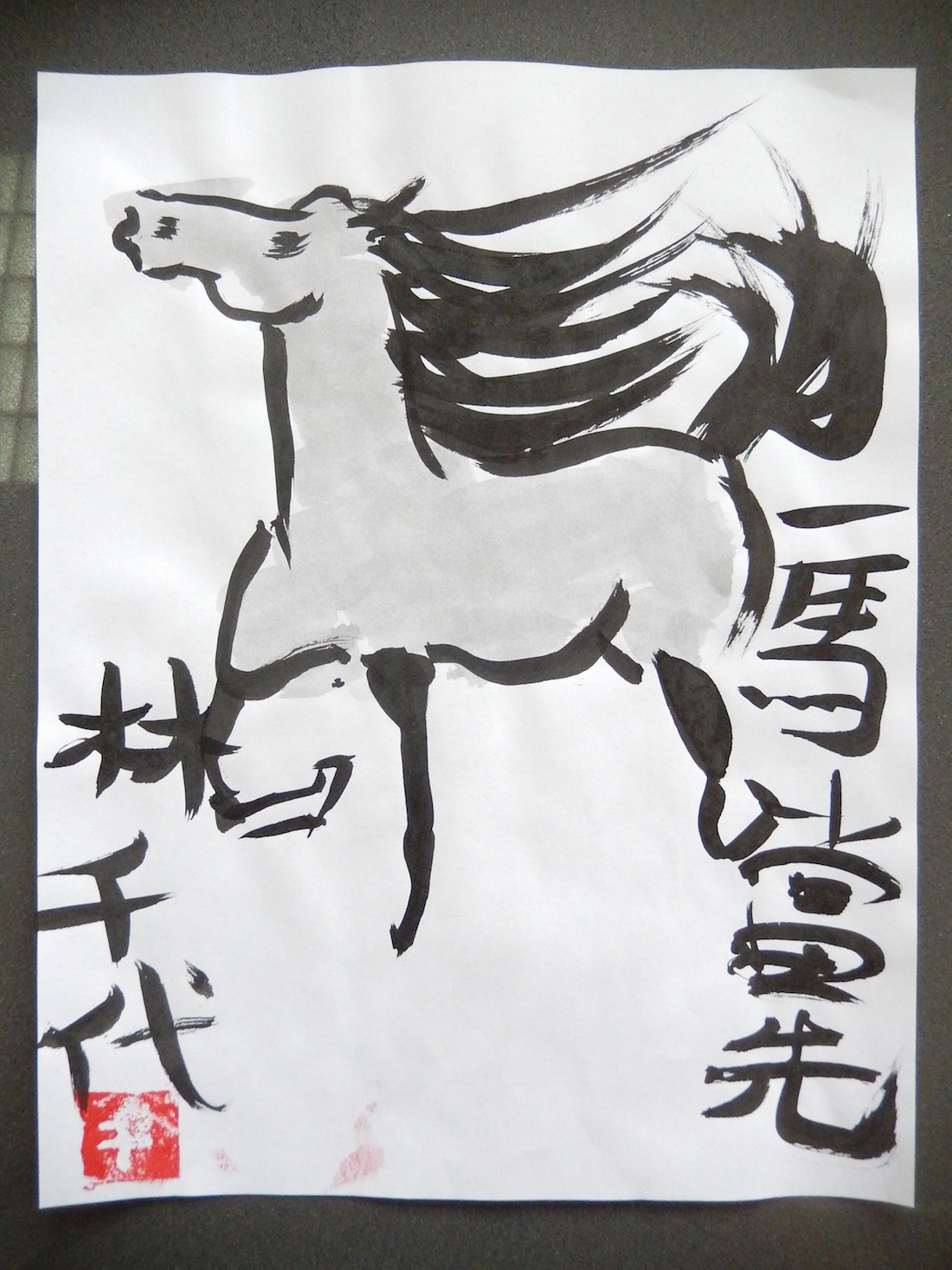
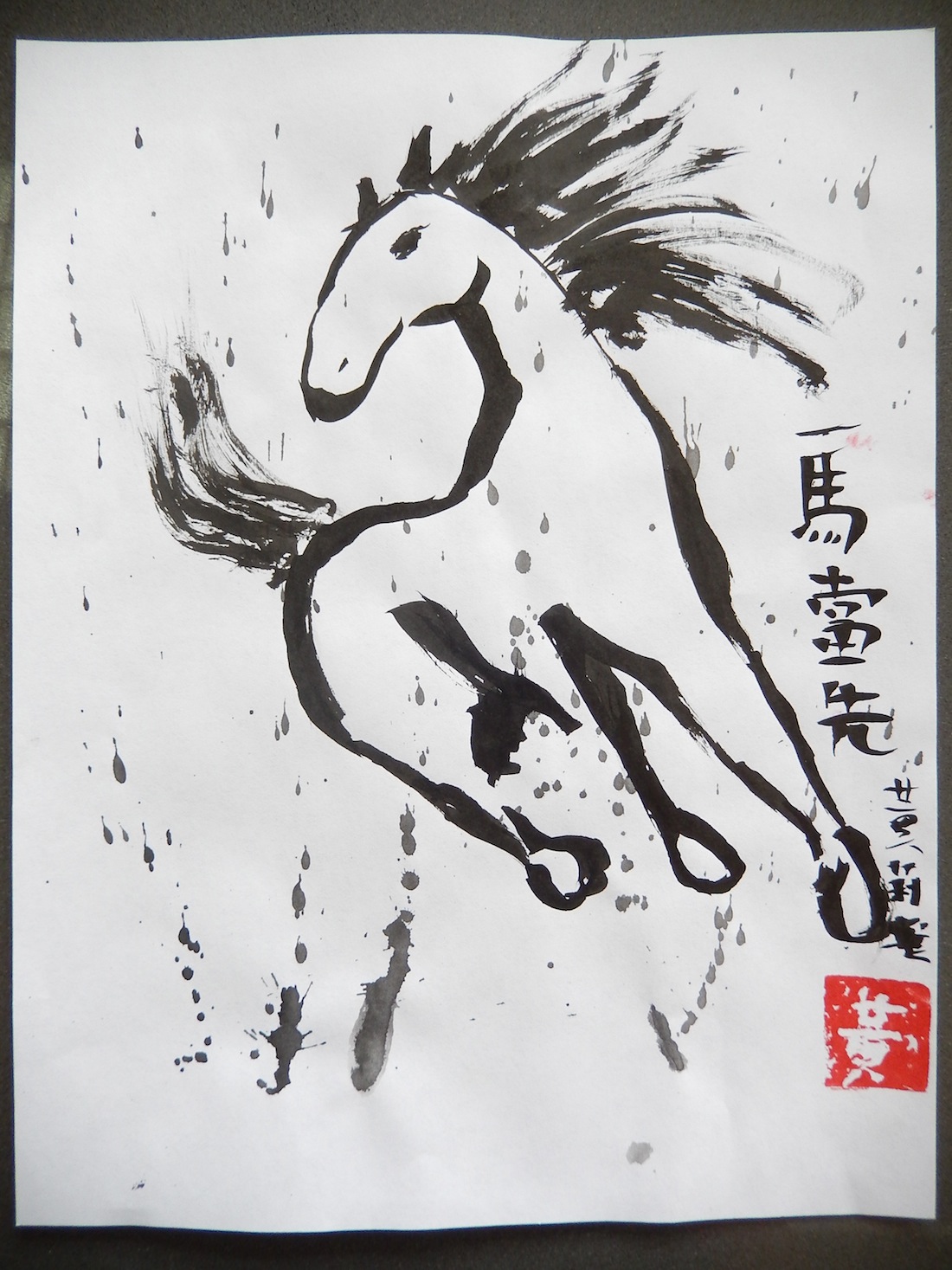

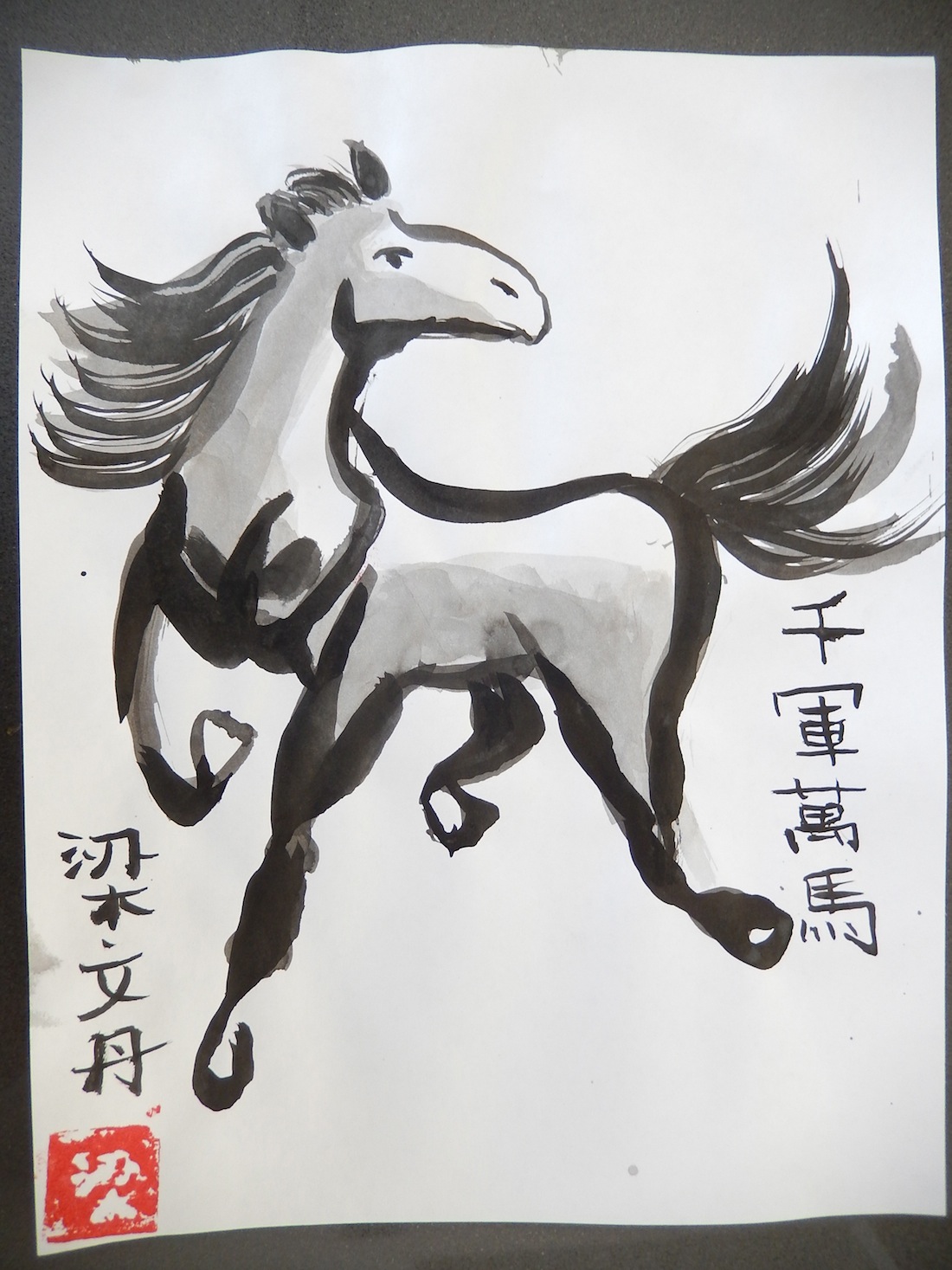
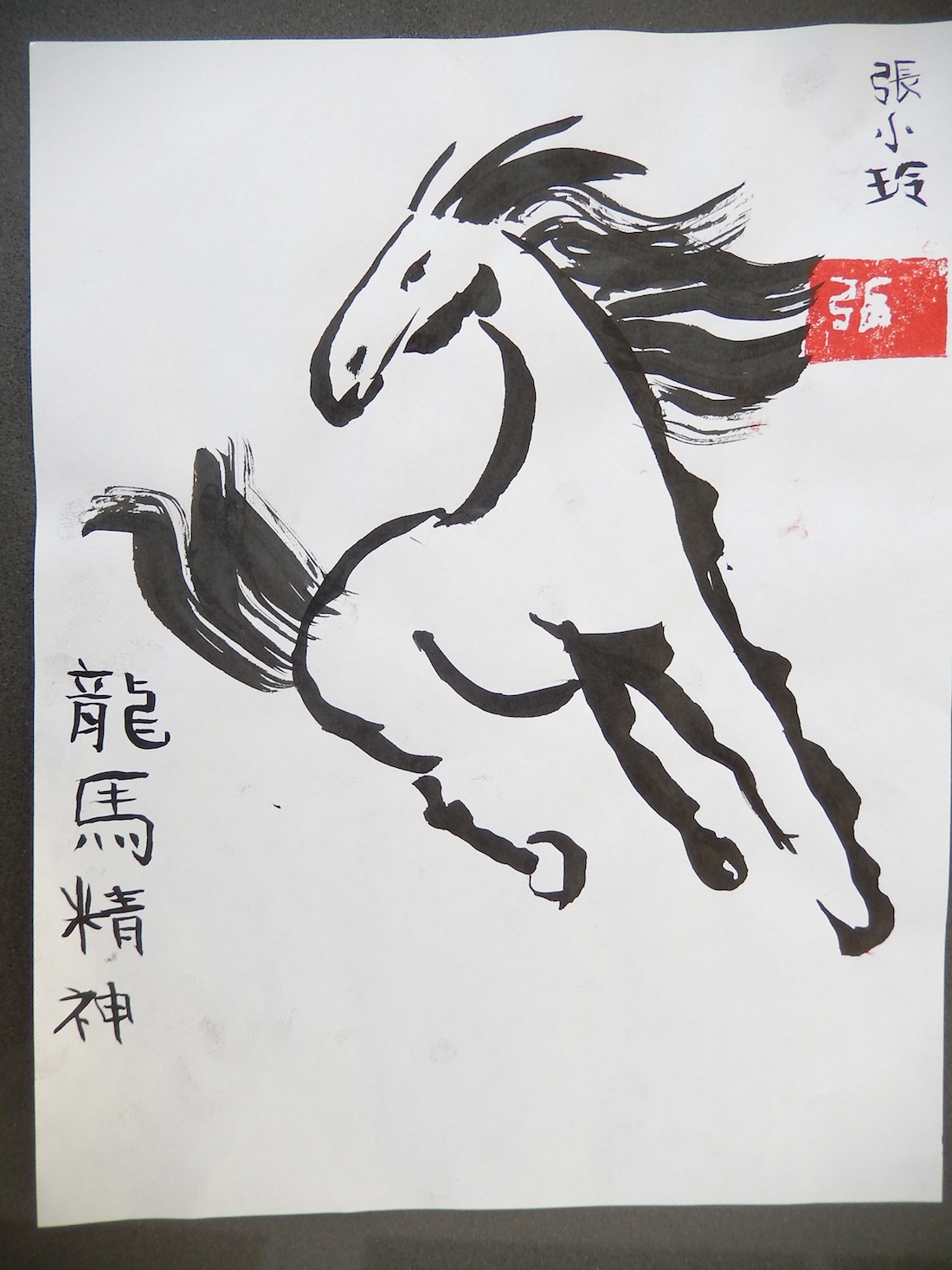
Year of the Horse Group Artwork from Each Grade
Since the students practiced a number of times to get good at painting these horses. I picked an artwork from each of their practices, cut them out with the students' help, and glued them on to big sheets of butcher paper to form group artwork by each grade (6th, 7th and 8th) for the Chinese New Year fair and art auction. We made sure each student's name and the seal that they carved of their names are glued next to their horse. Thanks to parent volunteer as well as calligraphy teacher, Ms. Chia-Ying Cho for writing the beautiful calligraphy on top of each piece.
